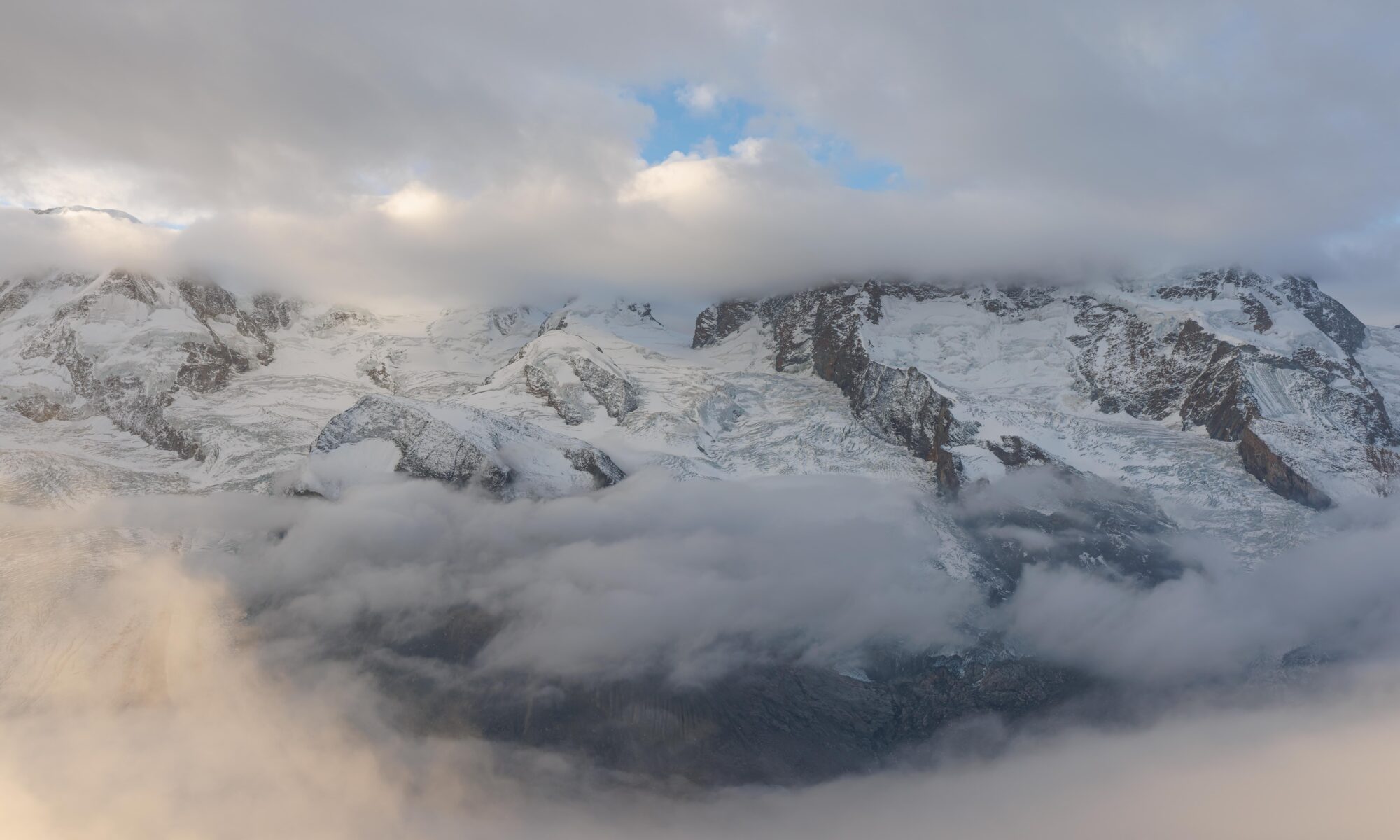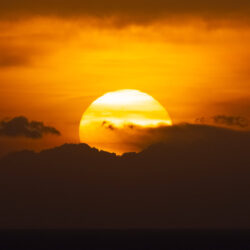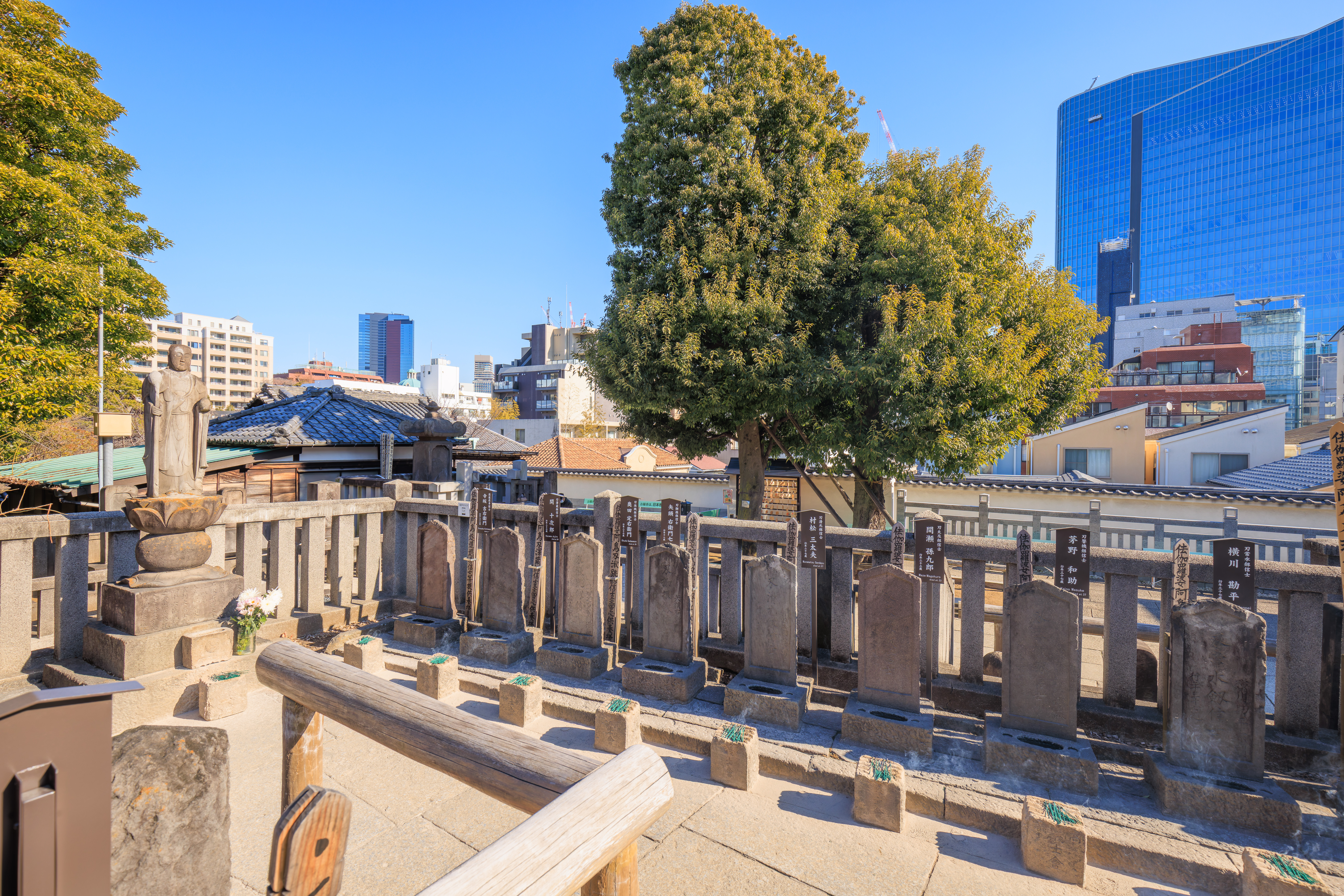After waking up and having breakfast at the The Strings by InterContinental, we checked out and visited Sengaku-ji, the final resting place of the 47 Ronin. We then briefly visited Happo-en before returning to the InterContinental to pick up our bags before going to Haneda for our flight home to the US on United.
Morning
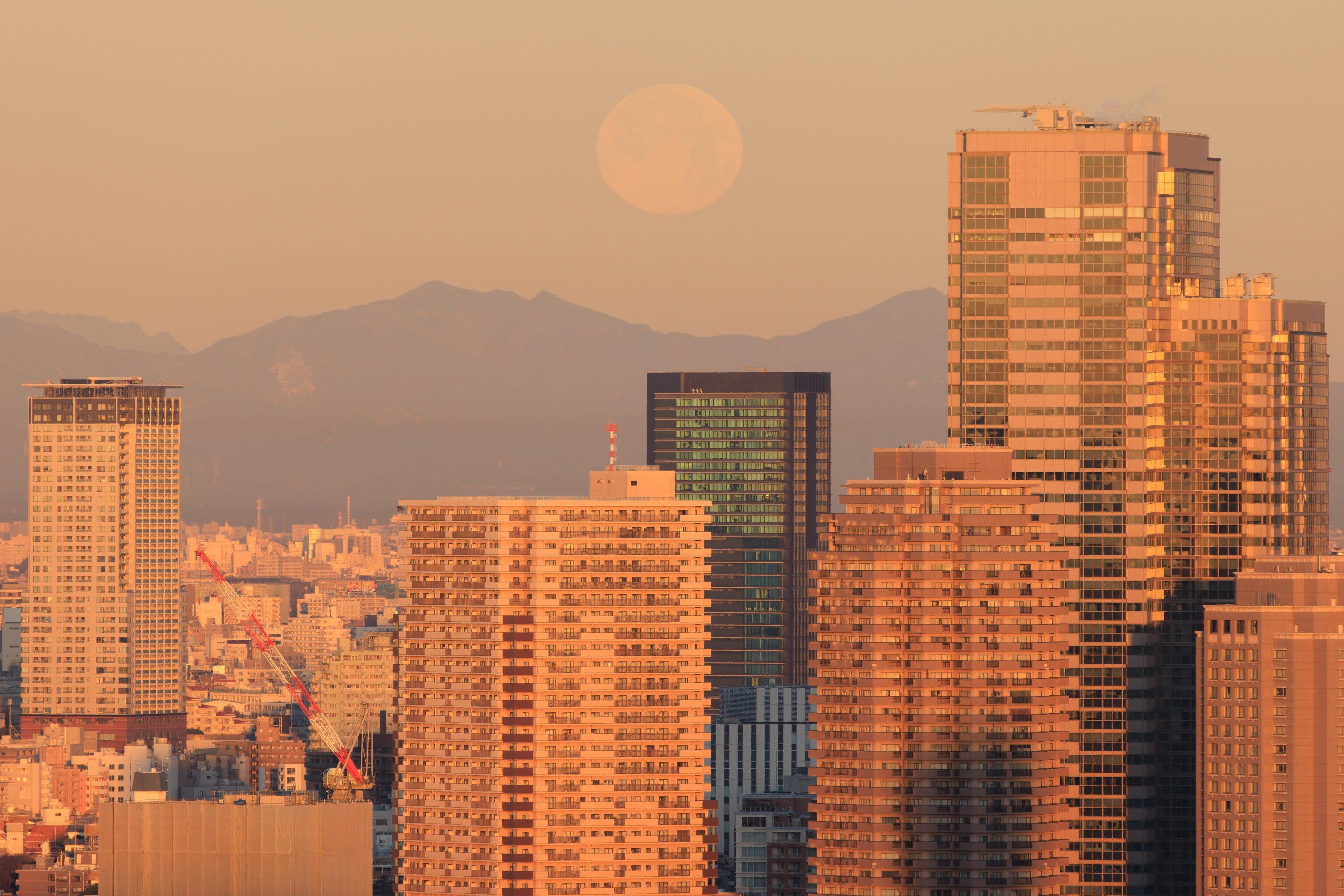
We woke up at The Strings by InterContinental by 品川駅 Shinagawa Station around sunrise again and saw the moon setting over the mountains to the west. Today is the last day of our trip which began before Christmas in 2024.
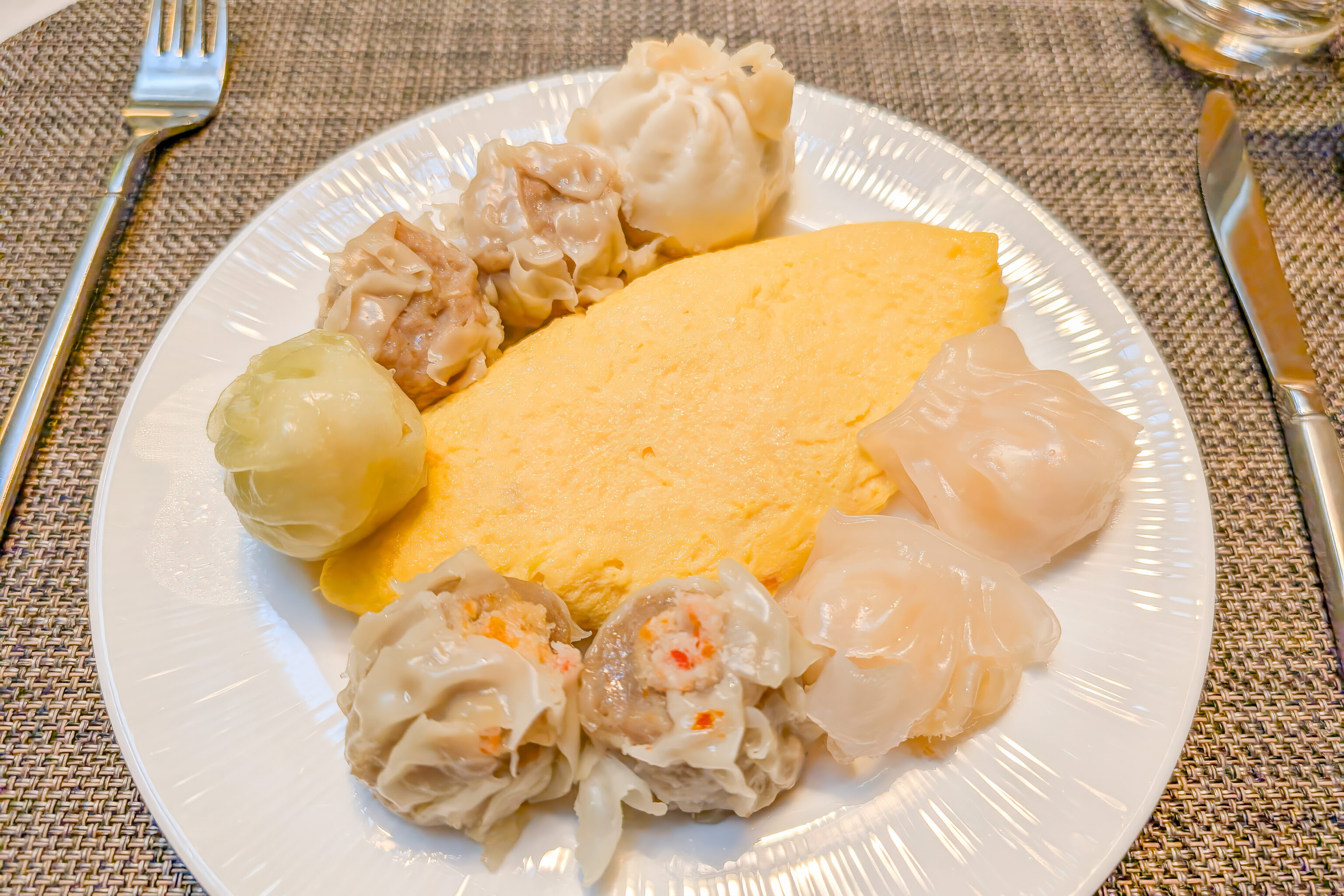
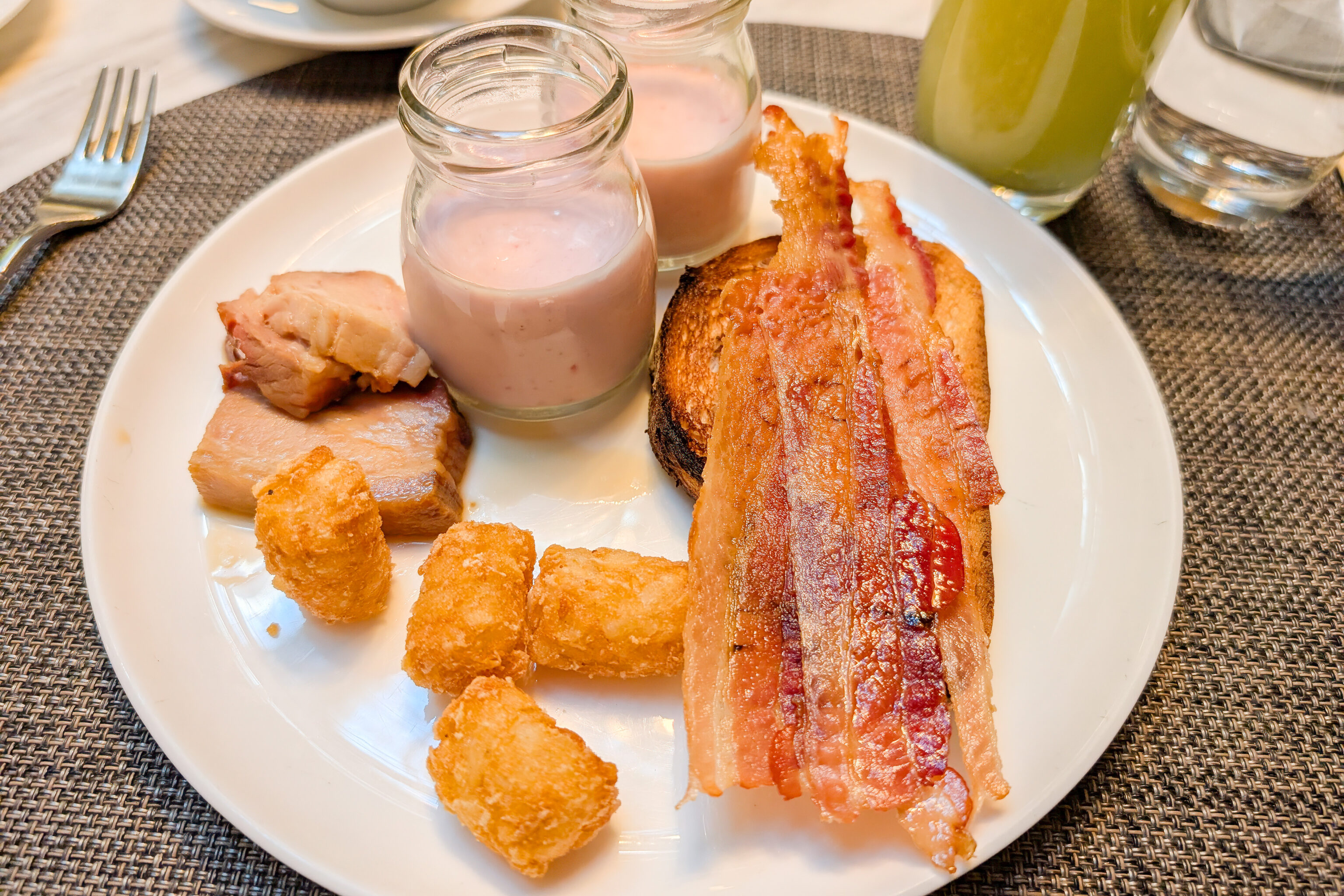
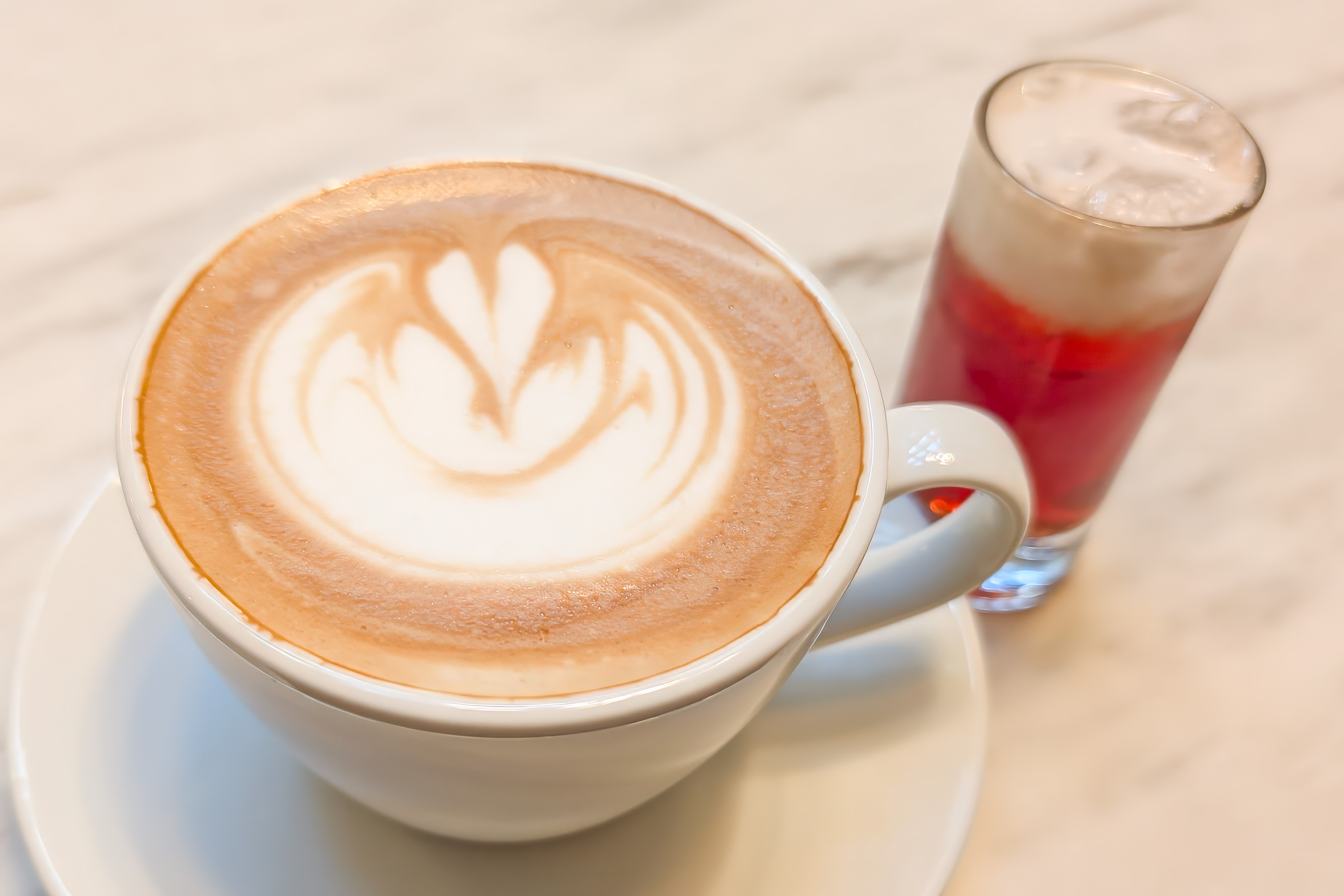
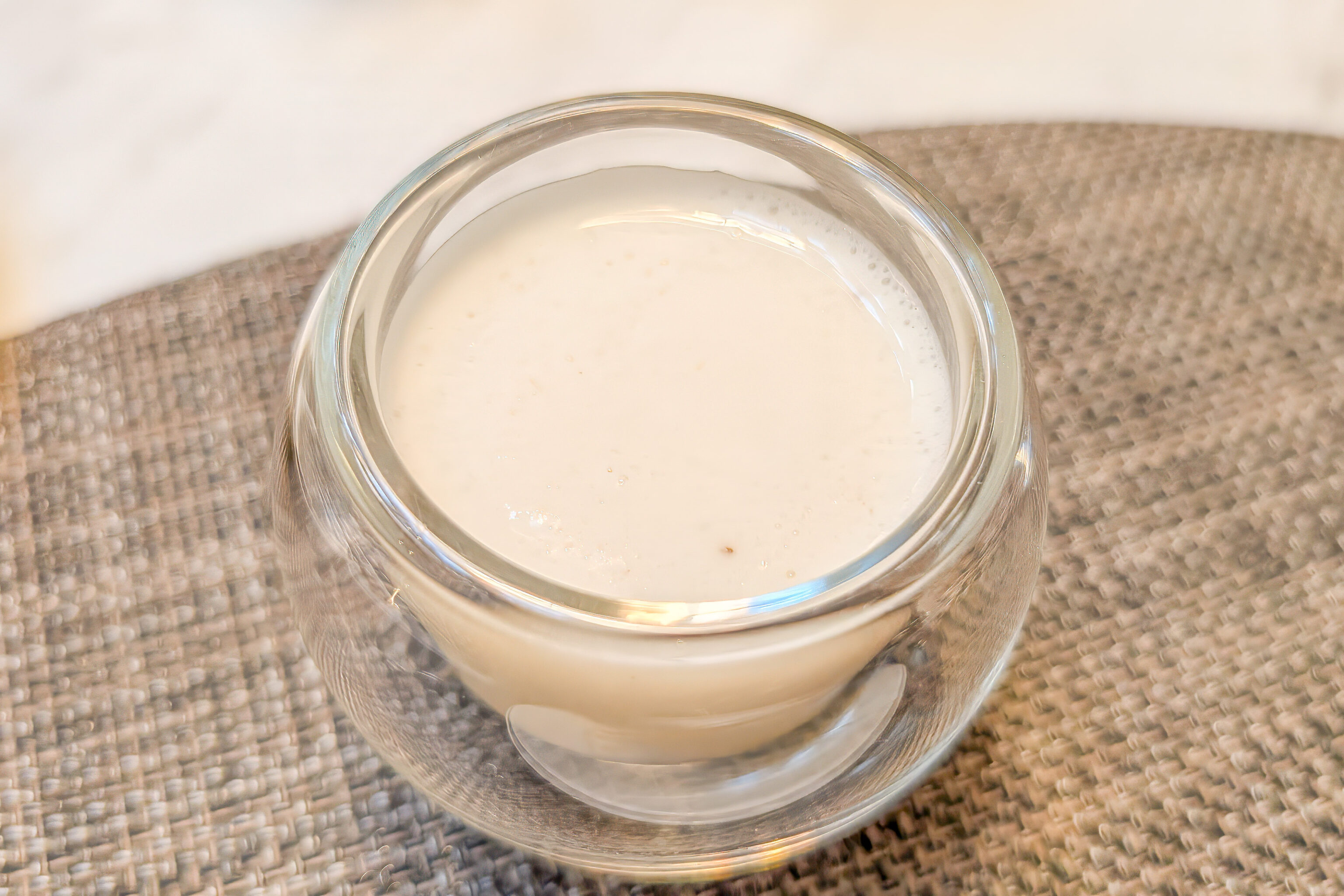
We went downstairs for one last breakfast before checking out. Like yesterday, it was a great breakfast!
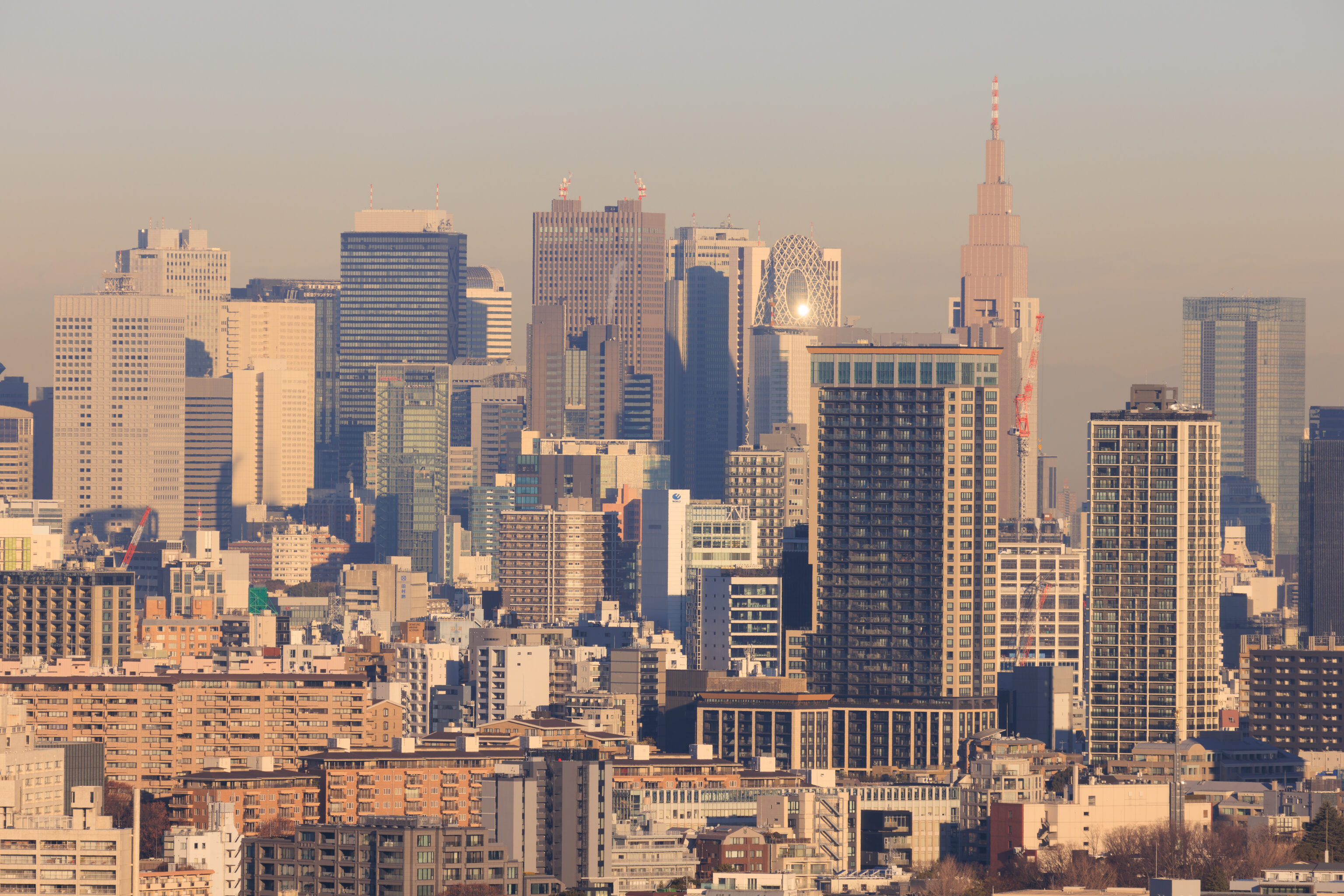
We looked around with the telephoto lens after we returned to our room. To the west, we could see Shinjuku.
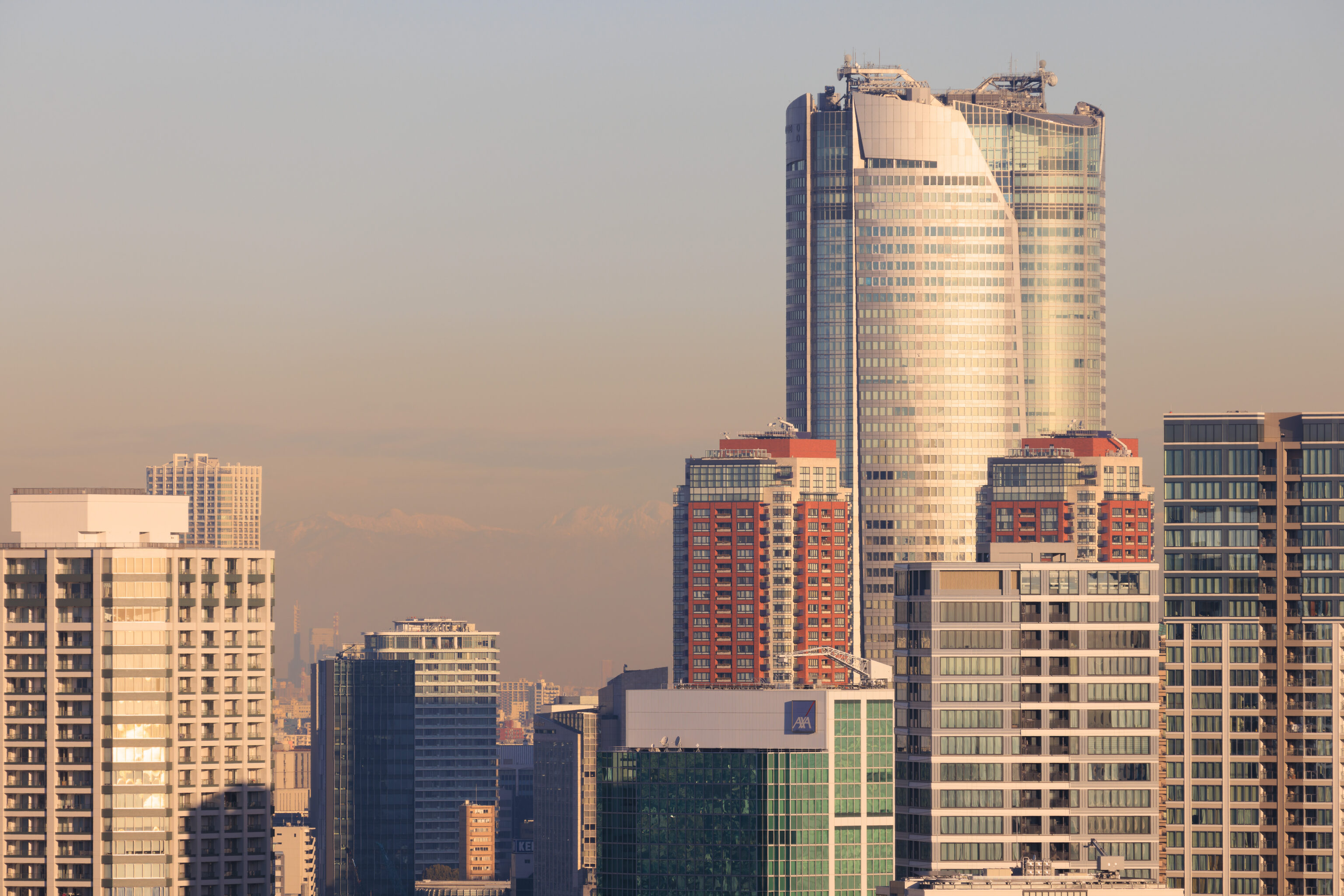
We also could see the Mori Tower at Roppongi Hills.

Looking much closer, we found the new JW Marriott at Takanawa Gateway. This hotel is still under construction and hasn’t opened yet.
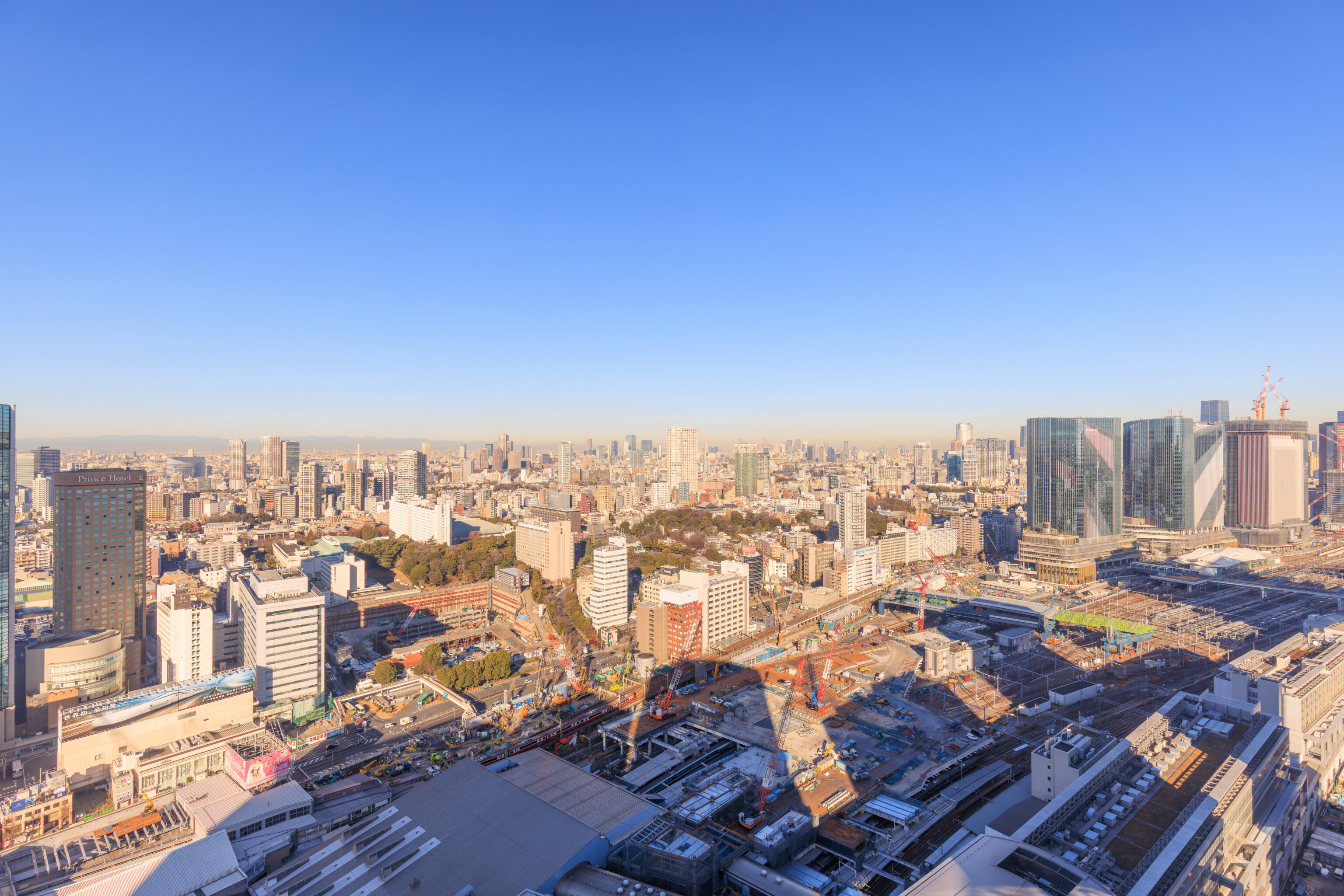
There’s also quite a bit going on below at Shinagawa Station as well as across the street where the former Shinagawa Goos is being redeveloped.
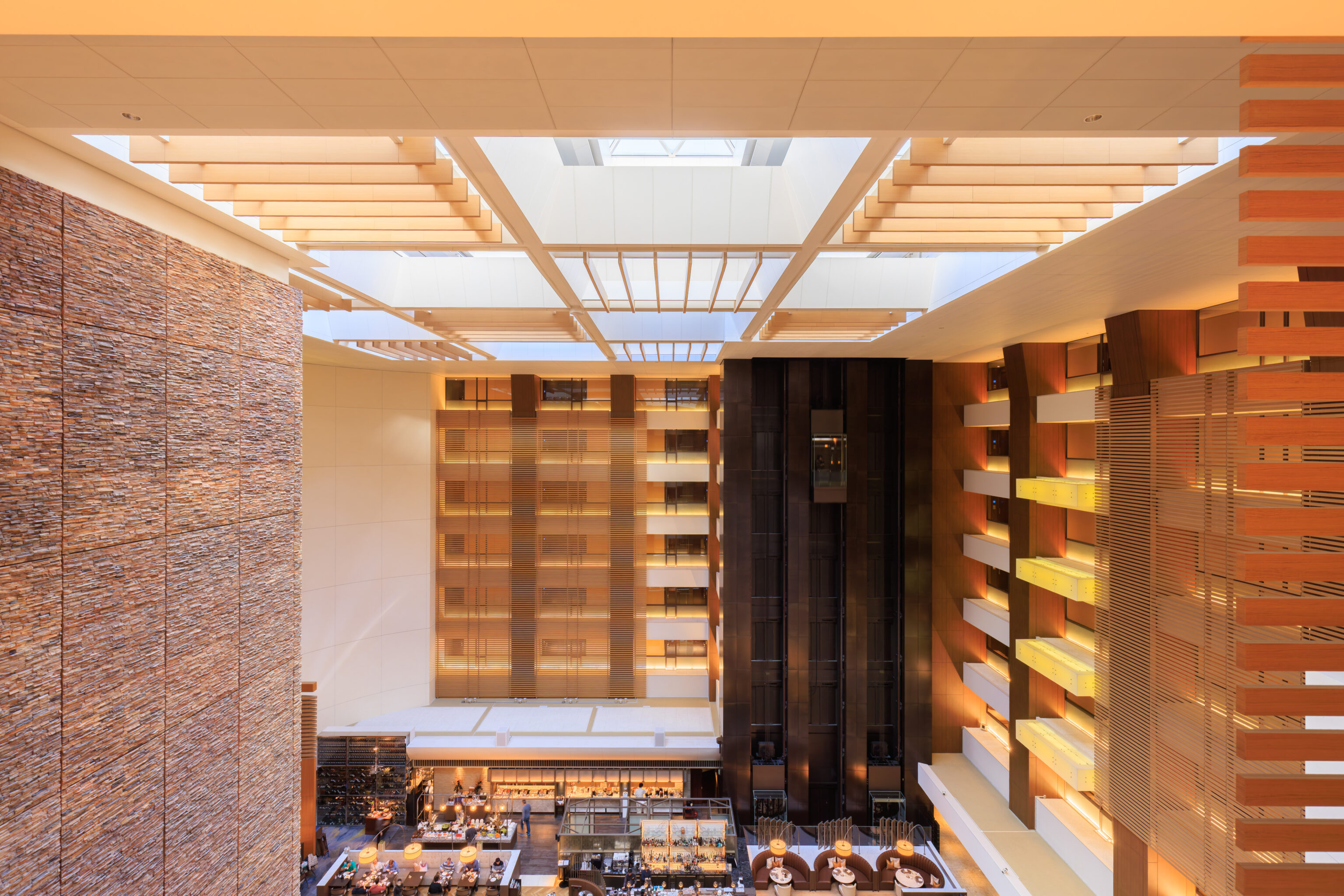
We headed downstairs to check out and to leave our bags at the hotel for to pick up later as our flight doesn’t depart until 4:50pm.
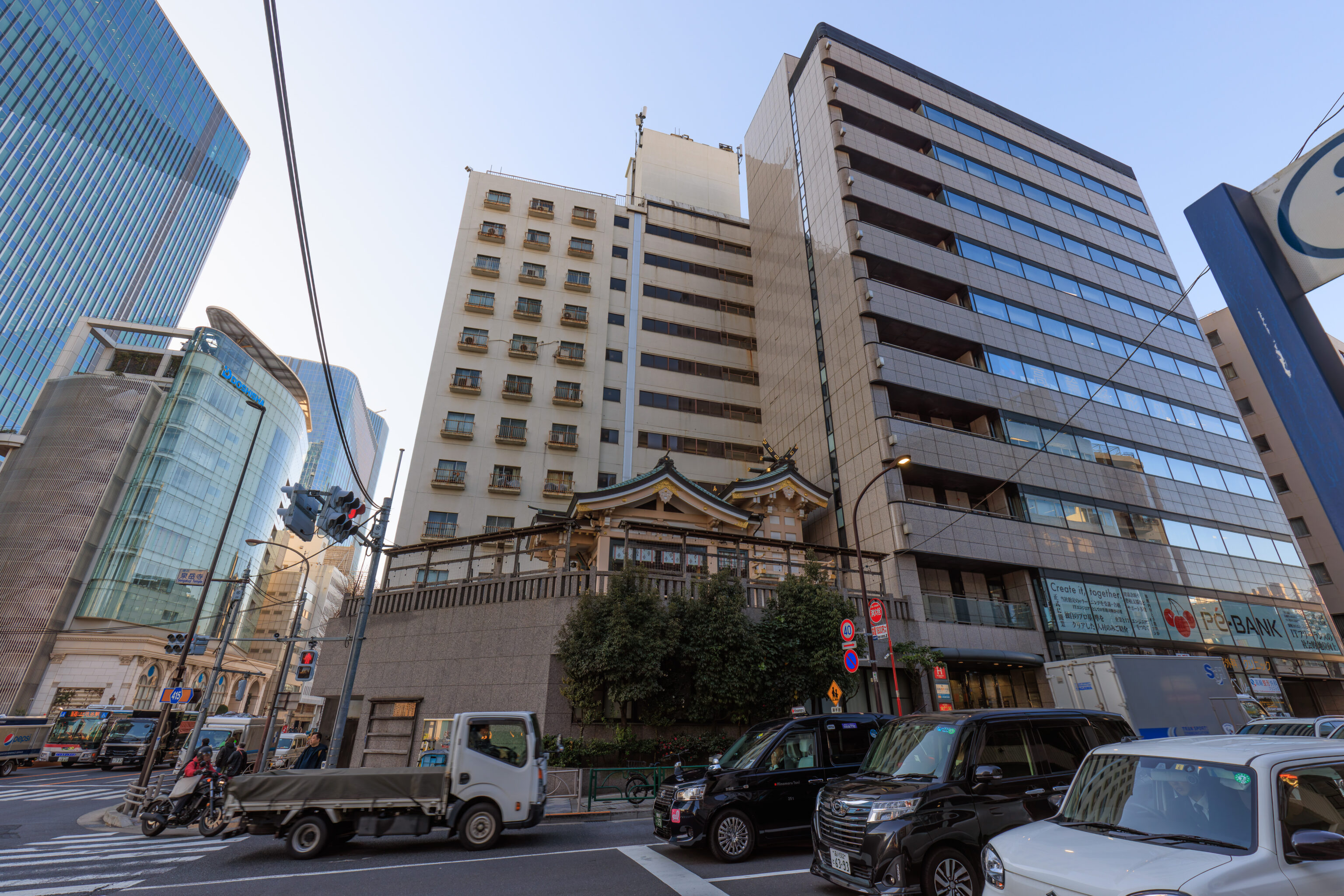
We took the Keikyu Line one stop to 泉岳寺駅 Sengakuji Station, right next to JR’s new 高輪ゲートウェイ駅 Takanawa Gateway Station. We noticed a small shrine that was above street level.
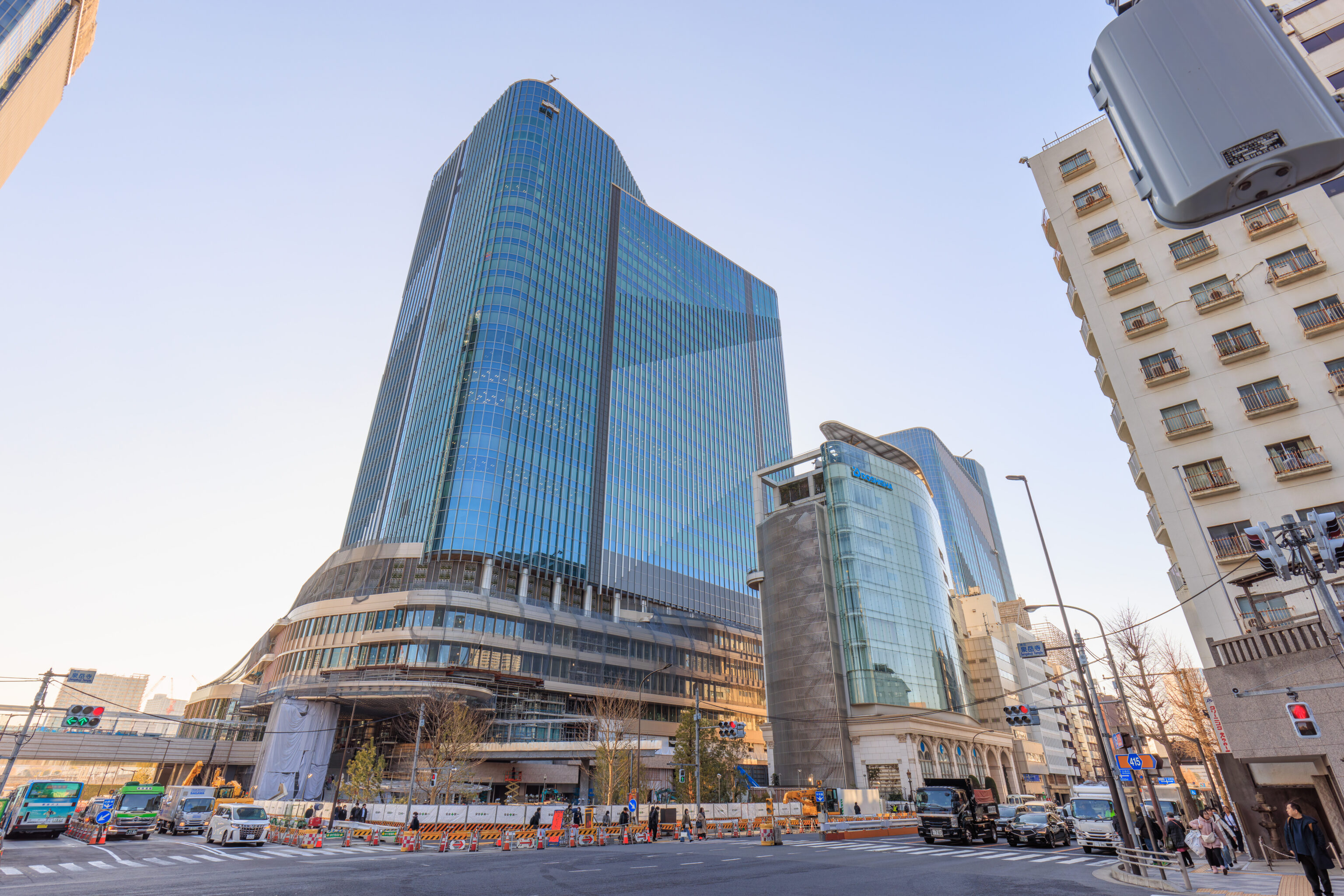
The new Takanawa Gateway towers are just across the street to the east. They’re big and shiny!
Sengaku-ji
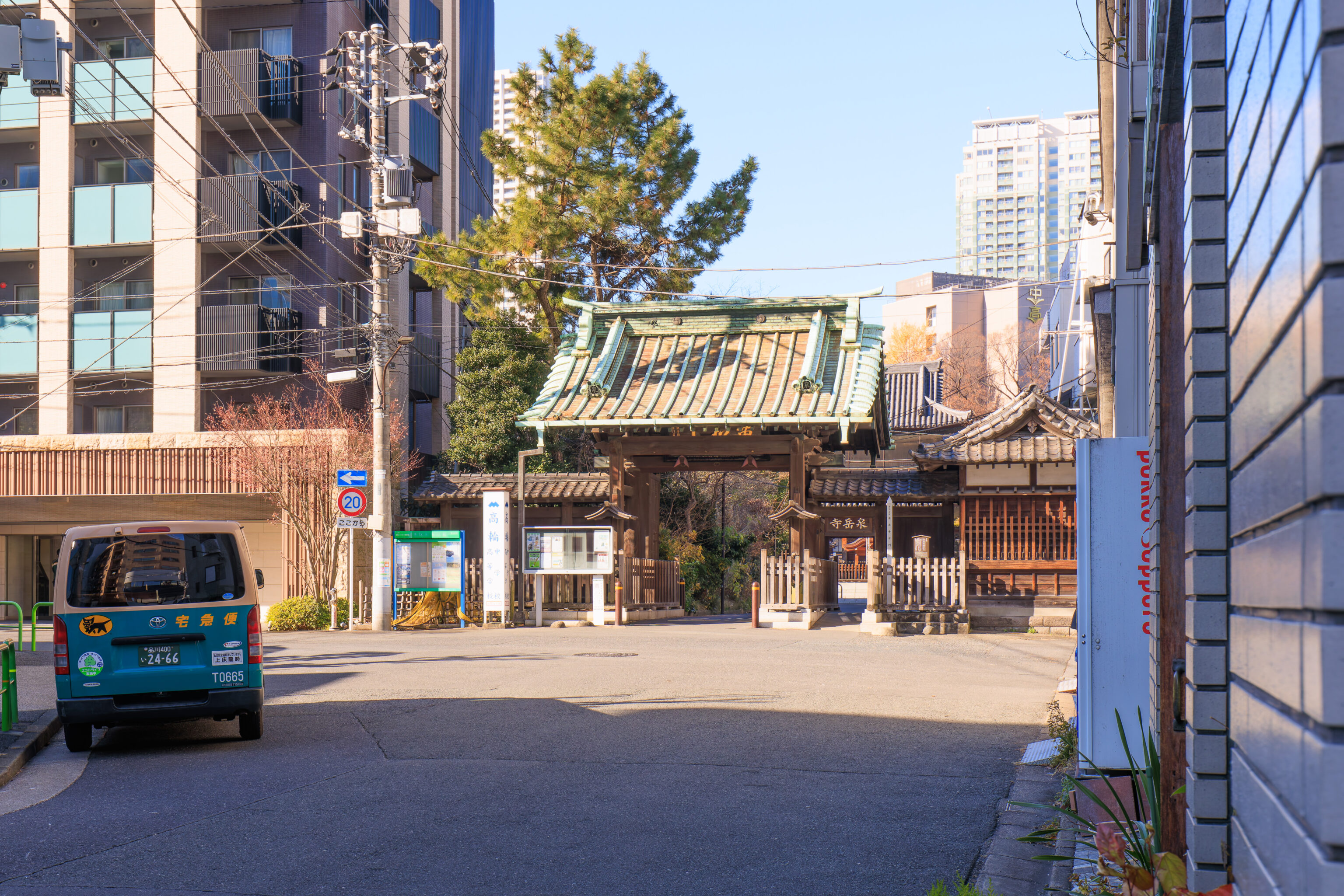
We headed to someplace much older though, 泉岳寺 Sengaku-ji. This Buddhist temple is known for its association with the 47 ronin.
This historical event took place about 320 years ago. The basic story is that Asano Naganori, the daimyo of the 47 ronin, was dishonored and forced to commit seppuku, or ritual suicide. The 47 ronin avenged their daimyo’s death by killing Kira Yoshinaka, the court official responsible for the conflict with Asano Naganori that led to the seppuku order. The 47 ronin expected to be executed afterwards but all but one were allowed to commit seppuku instead. The 47th ronin, Terasaka Kichiemon, who had been dispatched to report their killing of Kira Yoshinaka was pardoned.
Their graves are here at Sengaku-ji.
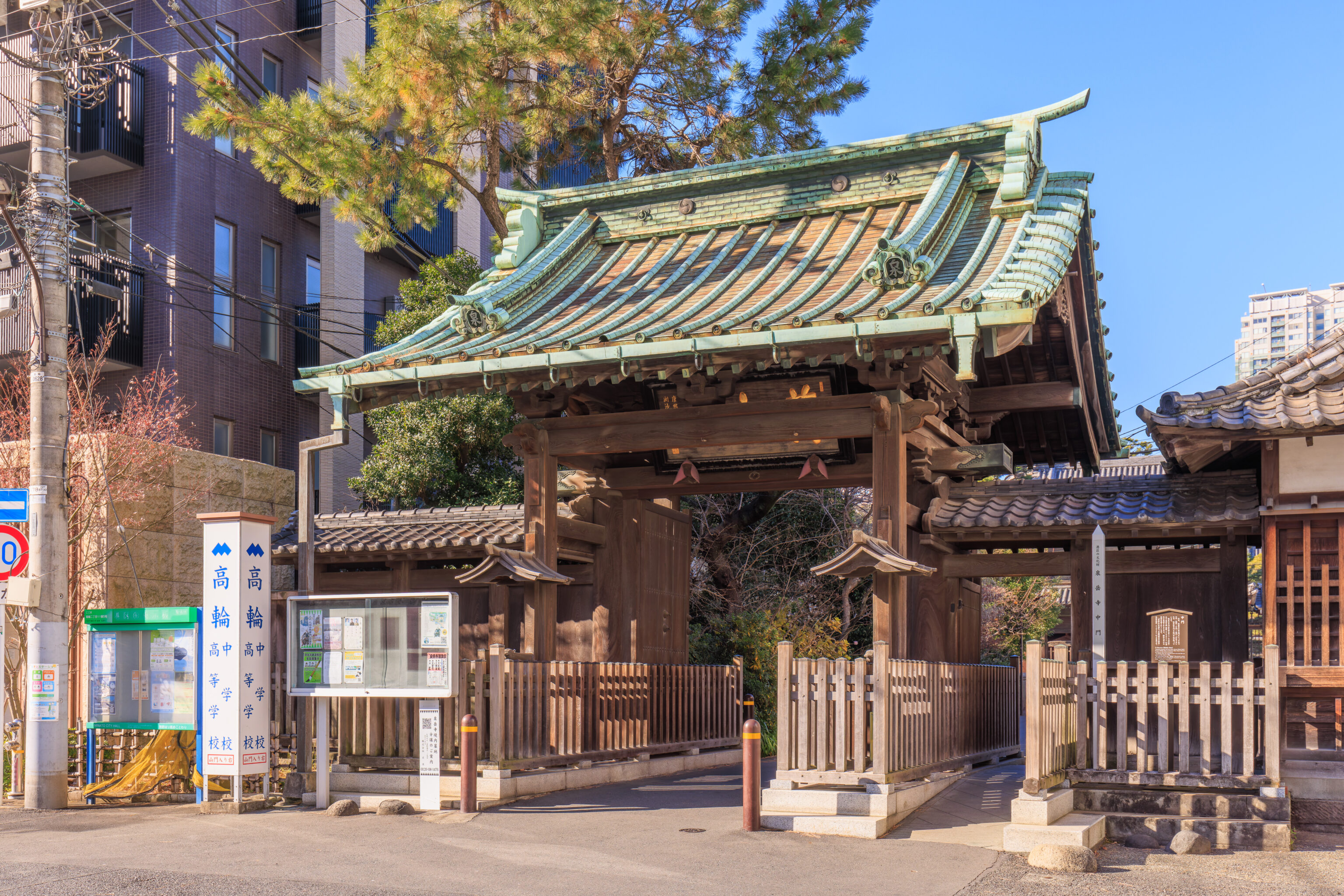
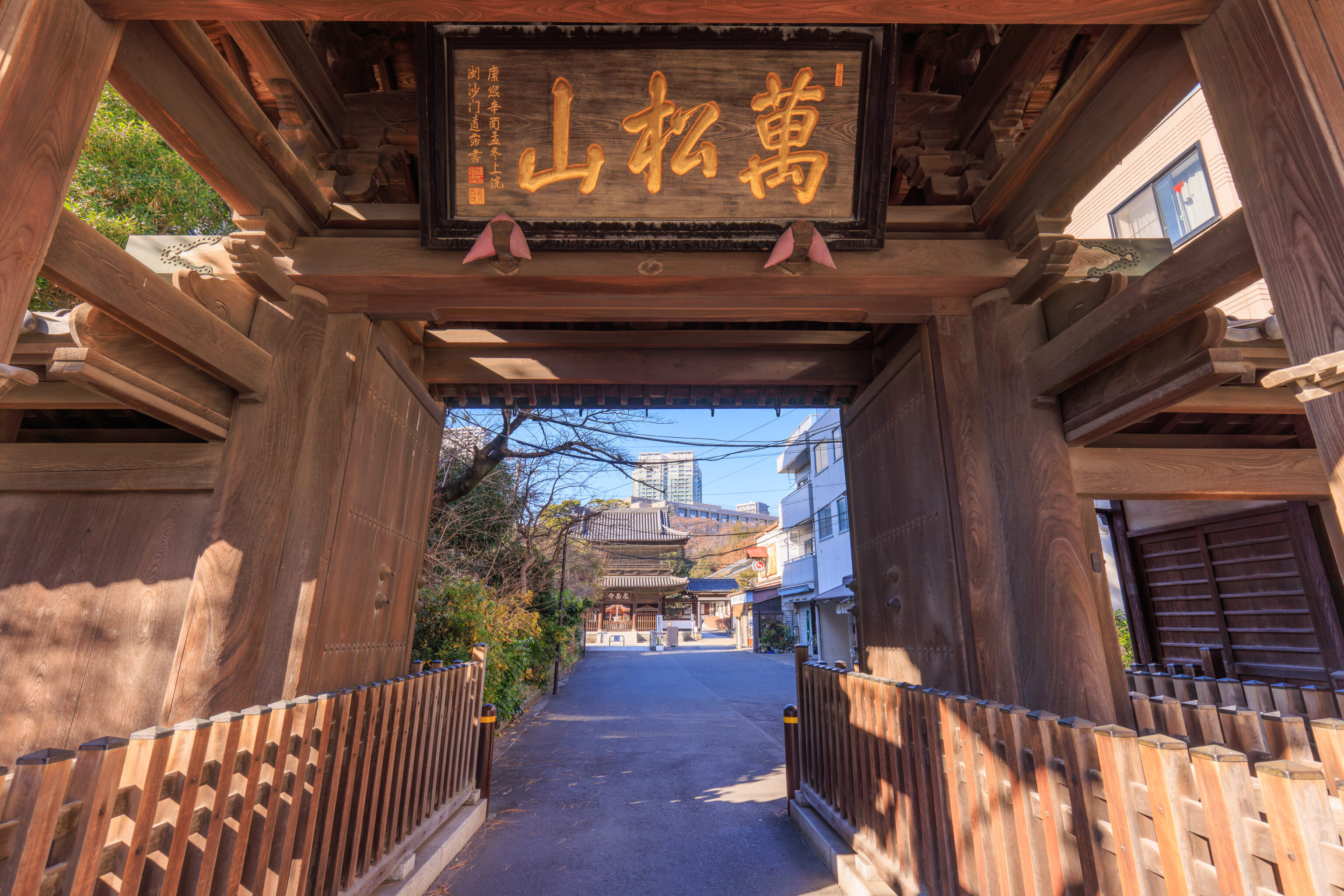
We entered the temple through a small gate.
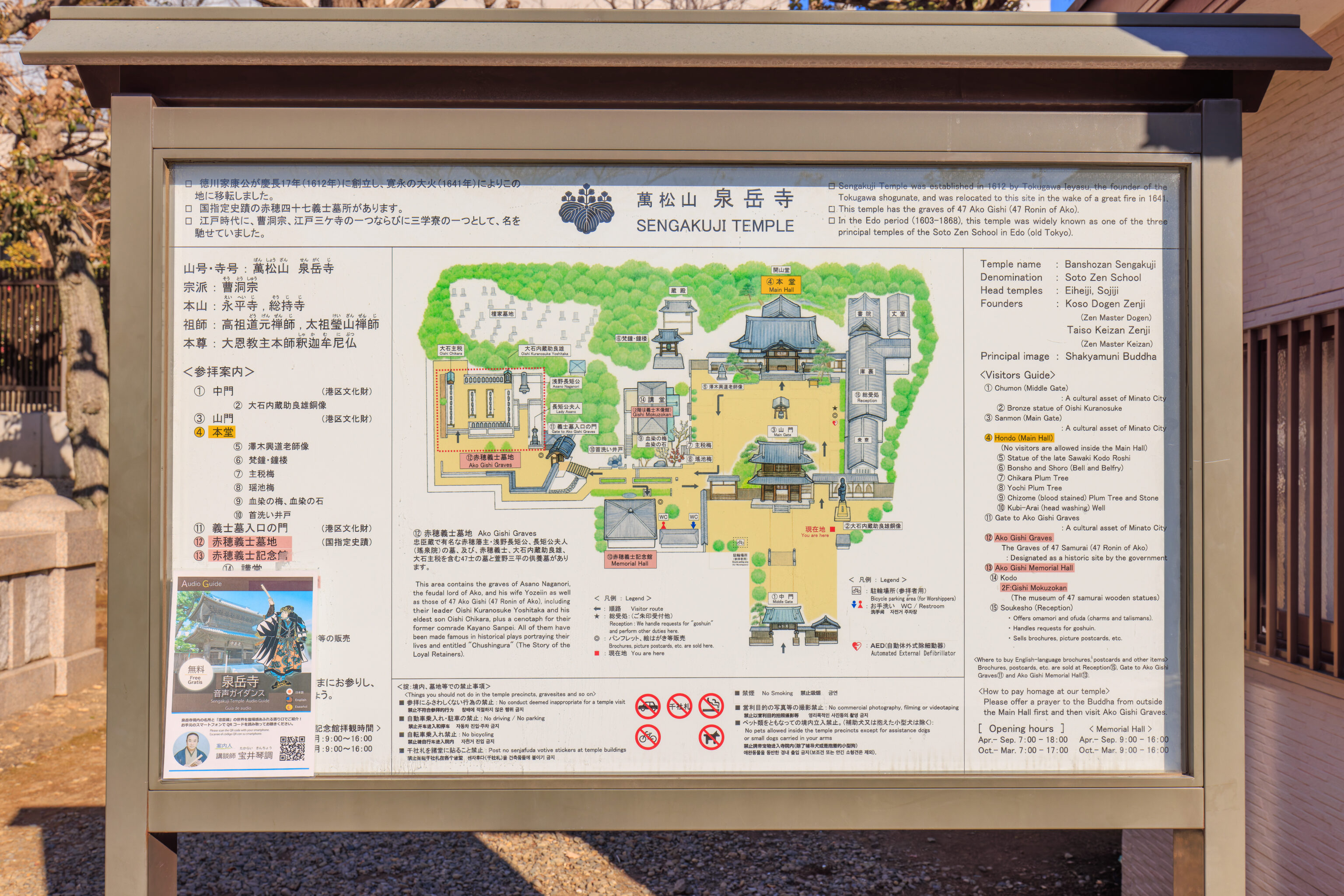
We found a sign with a map of the temple grounds.
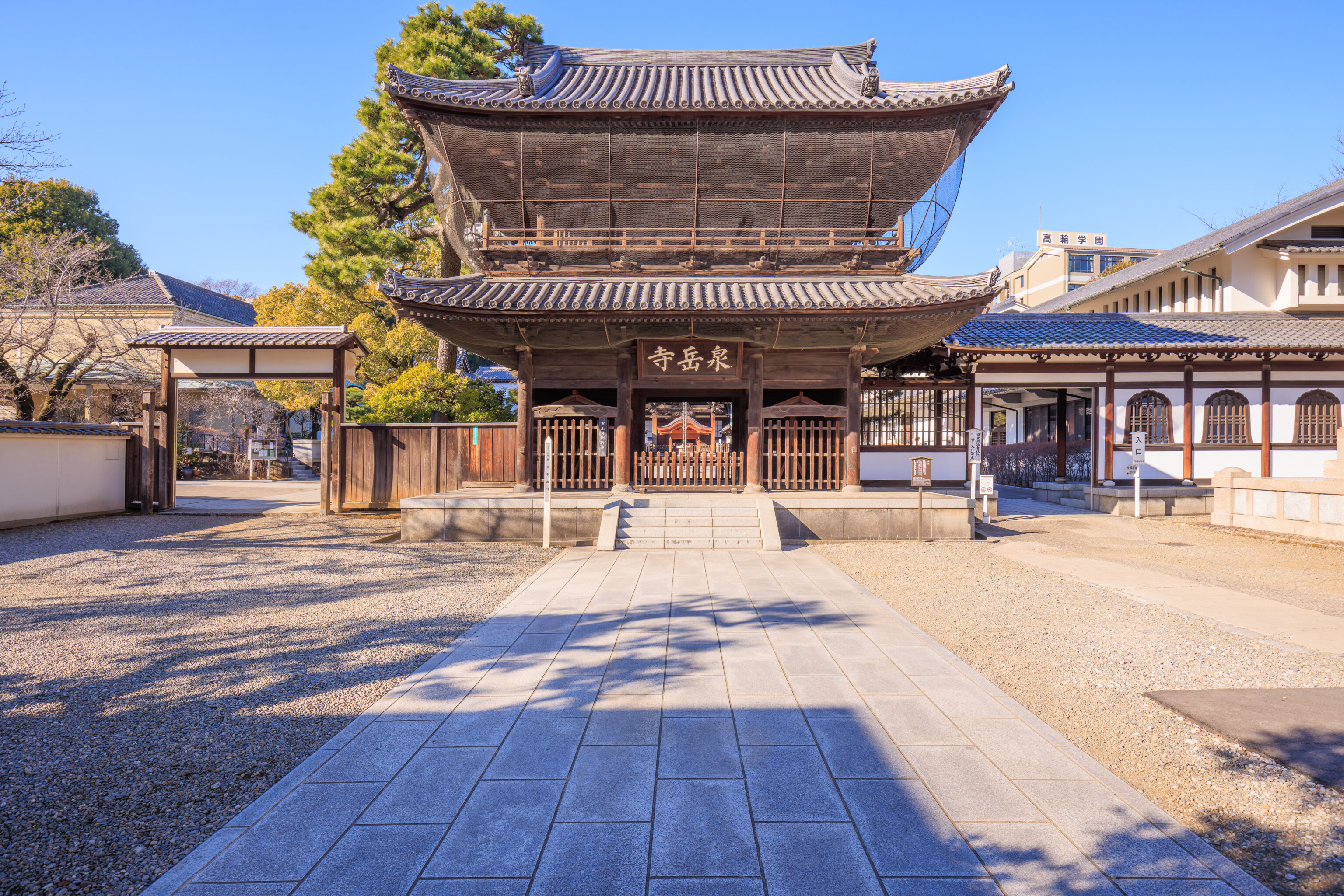
We then walked to the temple’s larger main gate. A sign briefly describes this gate:
Sanmon (Main Gate)
Rebuilt in 1832 under the 34th abbot. On the upper floor, there are 16 statues of "Arakan" (Arahats) or Buddhist saints. A bronze dragon can be seen on the ceiling of the ground floor. The script above the gate "泉岳寺”(Sengakuji) was written by Ono Yakuan, who studied the Zen calligraphy (bokuseki) of China's Jin and Tang periods.
Minato City Cultural Asset: A cultural asset of Minato City
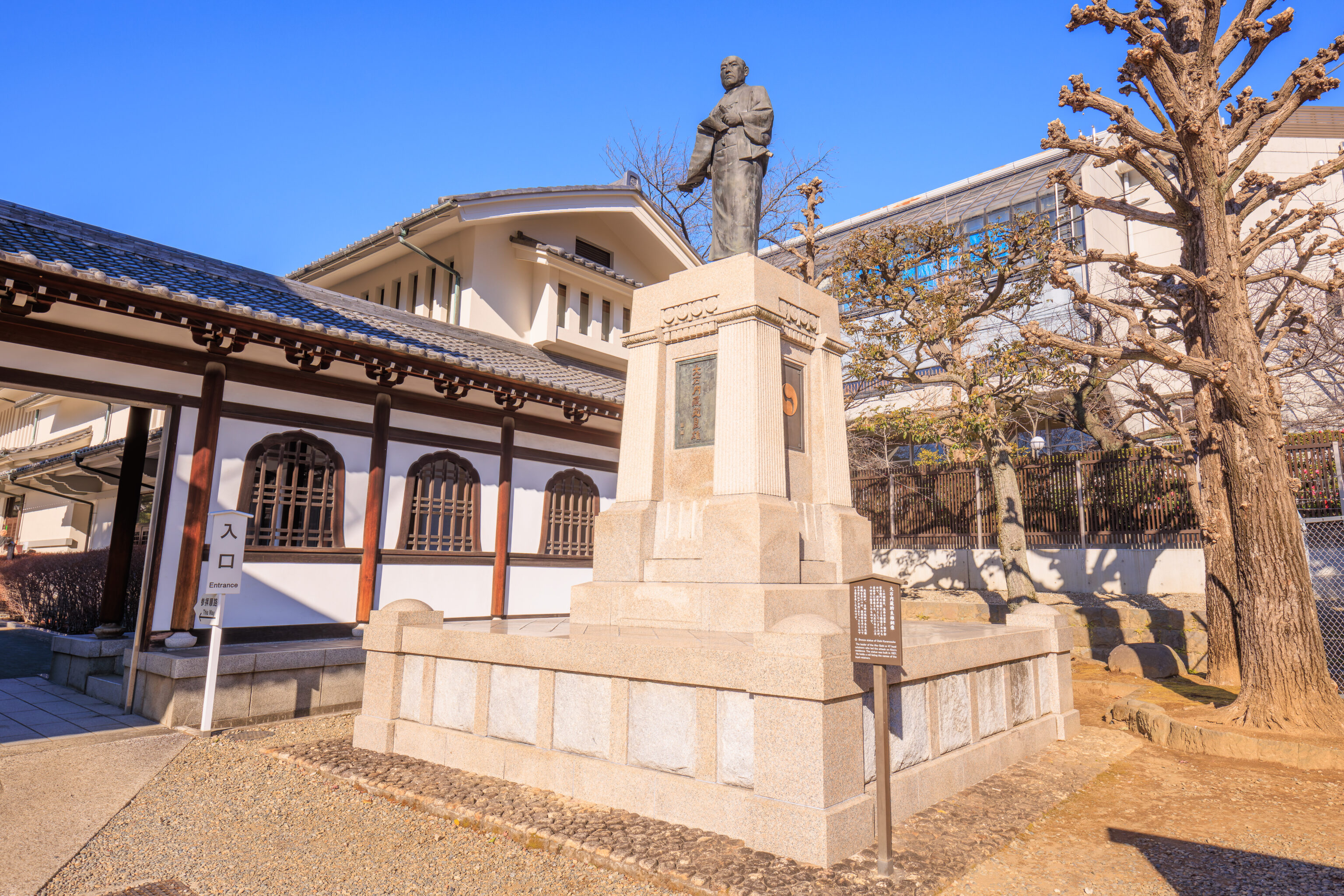
This statue is of 大石内蔵助 Oishi Kuranosuke (大石良雄 Oishi Yoshio), the leader of the 47 ronin. A small wooden sign describes this statue (Google Translated):
The statue depicts Ukonsuke, staring intently at the sky of the spring (in the direction of the River Eto), wearing a kimono and holding a gift in his hand, in the Genroku style, which was the custom of the time.
The statue was removed on the 14th. It was donated to Senji Temple in December 1921, and had been left in the hands of the owner. However, it was removed at the request of Uemon, and was later sold to the public.
Bronze Statue of Oishi Kuranosuke Yoshio
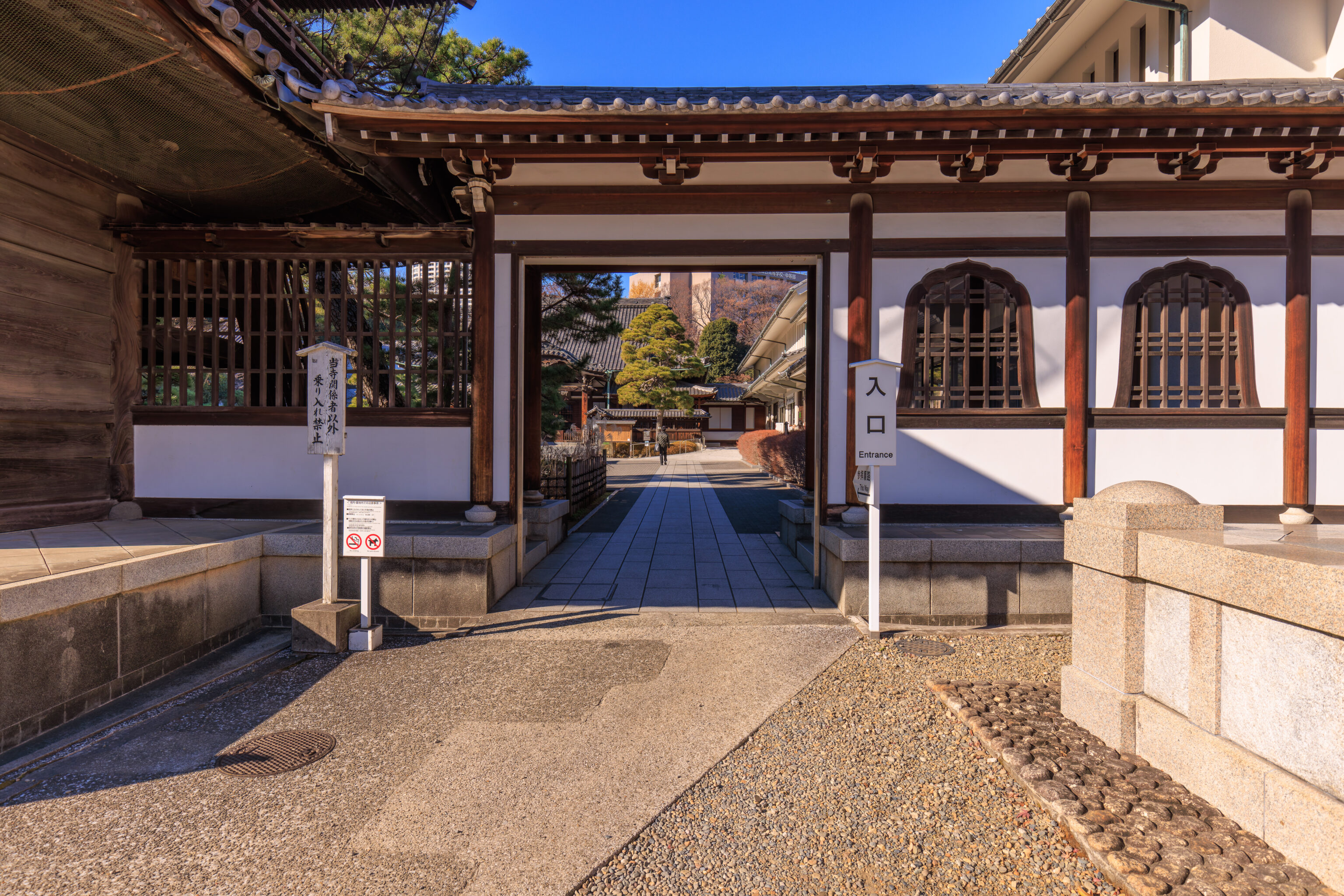
We entered the temple’s main courtyard via this entrance to the right of the main gate. A sign inside describes the history of this temple:
Banshozan Sengakuji
Sengakuji is a famous and popular Buddist temple known throughout Japan.
There are numerous Buddhist lineages and Sengakuji belongs to the Soto Zen School.
Soto Zen has two large main temples, Eiheiji on the northwest coast and Sojiji near Tokyo. Zen Master Dogen introduced the Soto lineage to Japan and founded Eiheiji.
Master Dogen's main written work, "Shobogenzo", expresses his understanding of Buddhist practice and doctrine. Currently there are many translations available.
Buddhist teachings inform that all of us can actually live as Buddha by acting sincerely and being guided by all-embracing wisdom and deep compassion. Master Dogen taught that Zazen (Buddist meditation), when practiced beyond discriminating consciousness, is the very present realization of Buddha. He widely recommended Zazen and it was his firm belief and cherished wish that this practice could form the base of an authentic "way" or means of salvation.
Sengakuji was built by Tokugawa leyasu, the first Shogun of the Edo era, in 1612 near Edo Castle as an establishment of Dogen's tradition. However, after only 30 years, it was devastated by fire and this led to a reconstruction at the present site.
Sengakuji is now regarded as a temple closely related to the Ako Gishi, but it was in fact one of the three principle Soto Zen temples of Edo (old Tokyo) and known in its own right as a prestigious Buddhist institution. Many dedicated monks gathered from all over Japan (it was said that numbers sometimes reached 200) to deepen their practice and study. To this day this tradition continues. Numbers are considerably less, but young training monks still practice here whilst studying Buddhism at university.
At some point during our visit, we picked up a map with English descriptions of the temple and the 47 ronin.
We also got a similar document in Japanese.
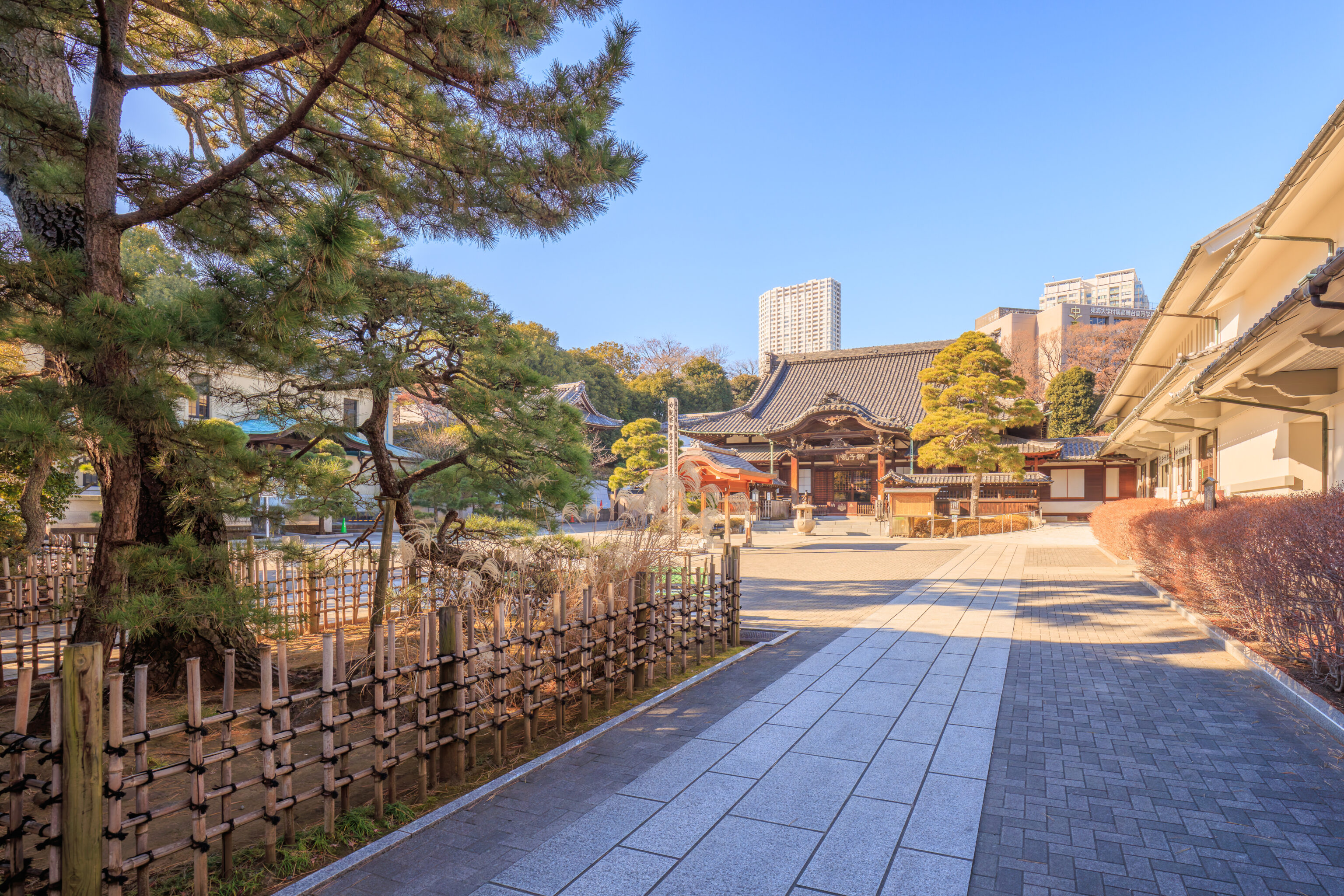
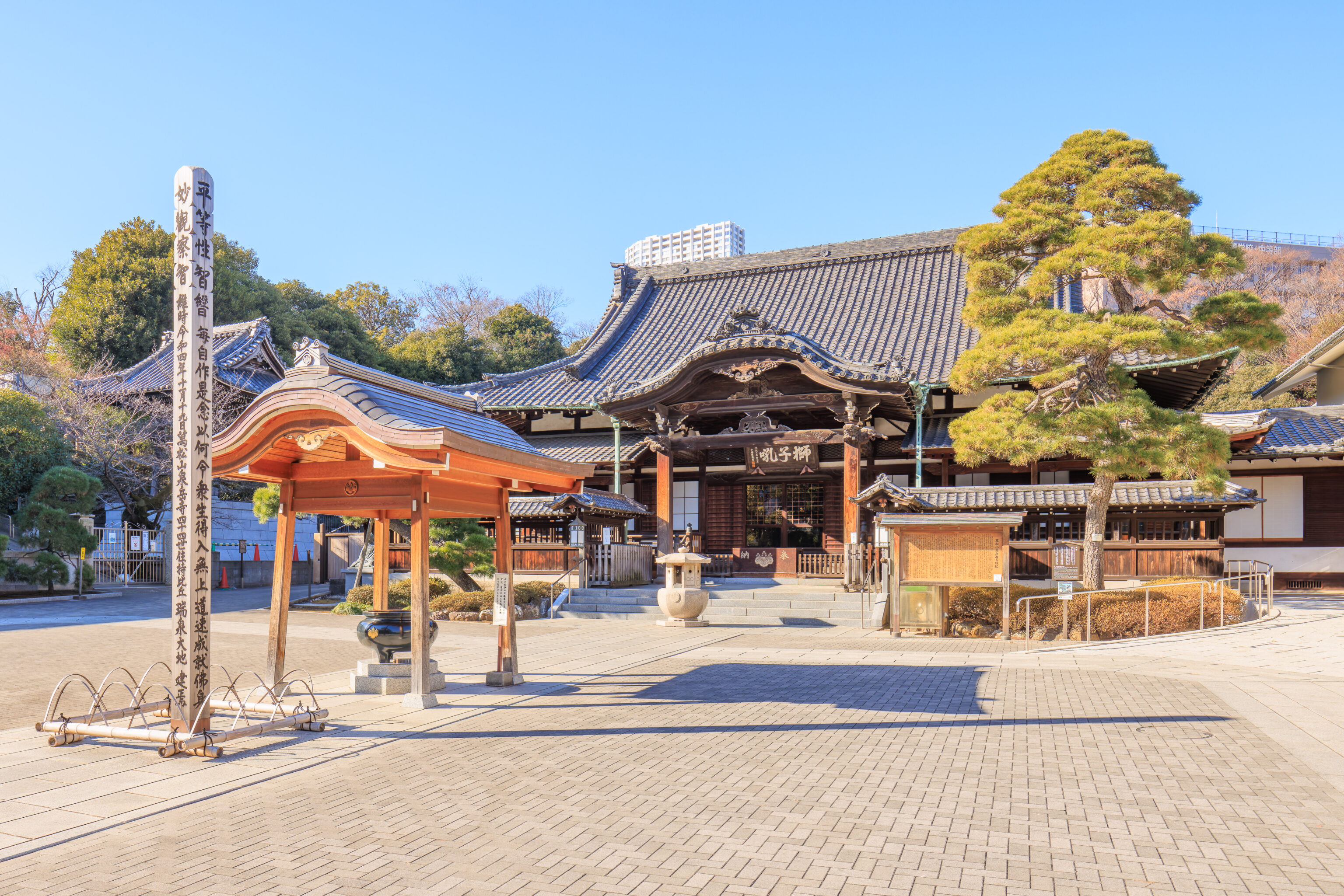
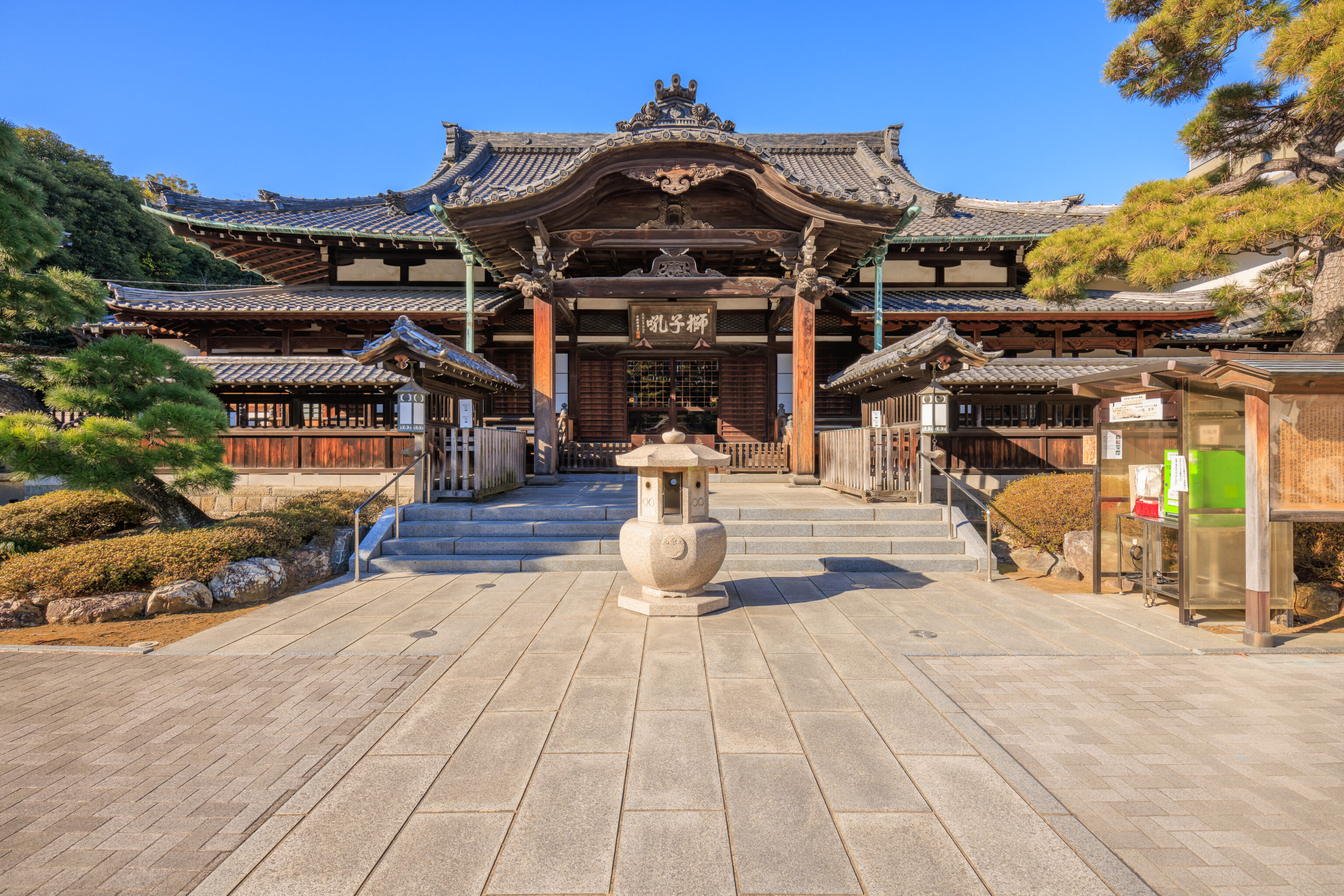
The temple’s main hall was ahead. A sign describes this building:
Hondo (Main Hall)
The original building was destroyed in WWII. The present construction was built 8 years later.
The main statue is that of Shakyamuni Buddha (the historical Buddha). Also enshrined are statues of Master Dogen and Master Keizan, the two principal "patriarchs" of the Soto Zen sect, and "Marishi-ten" (Marici), the protecting god of Oishi Kuranosuke.
It is here in the main hall of Sengakuji that the abbot and training monks regularly practice Zazen (Buddhist meditation), recite sutras and officiate ceremonies.
The characters above the central door "獅子吼”(Shishi-ku) mean "lion's roar" and refer to the teachings of Shakyamuni Buddha, which were said to have been uttered with the force and courage of a lion.
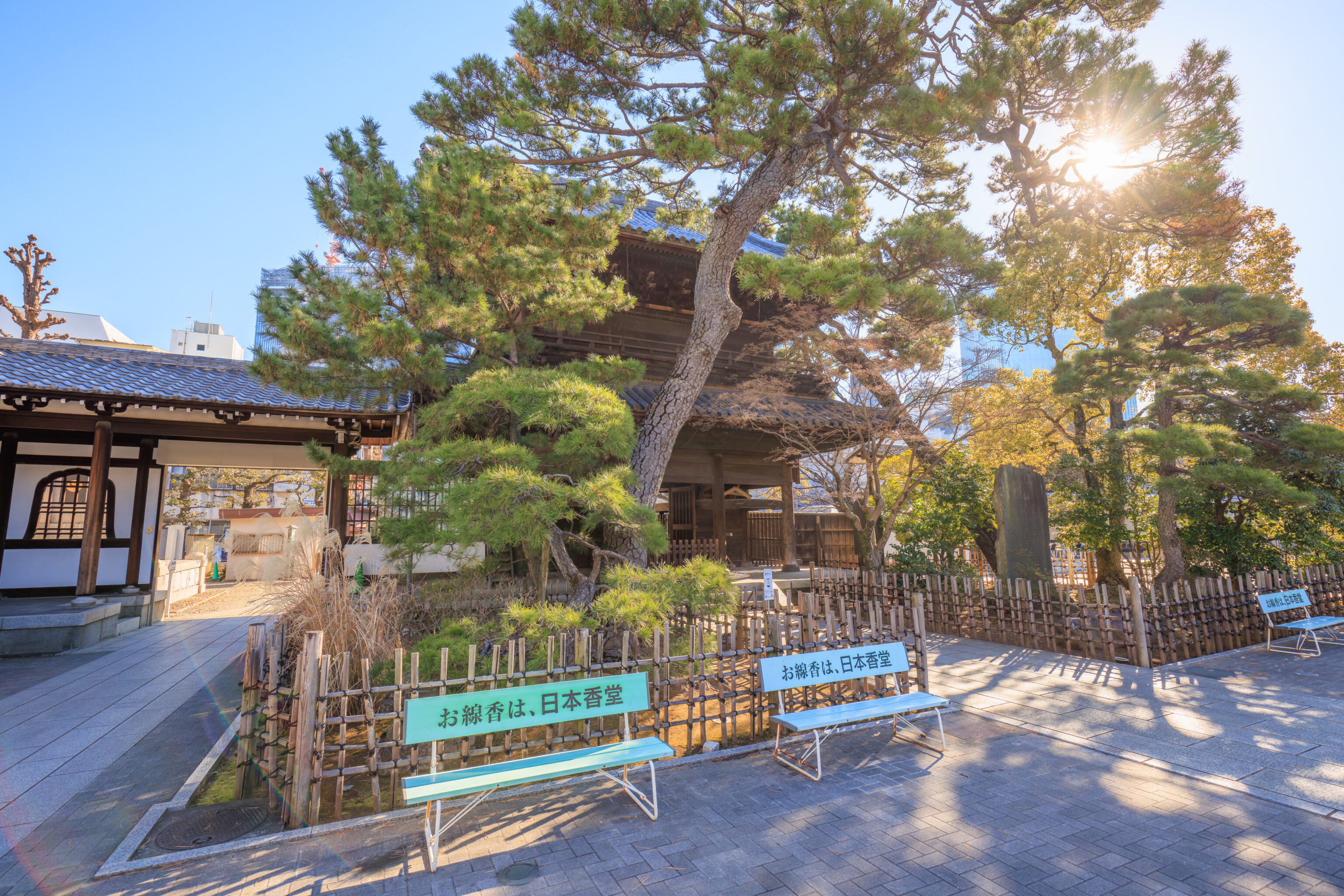
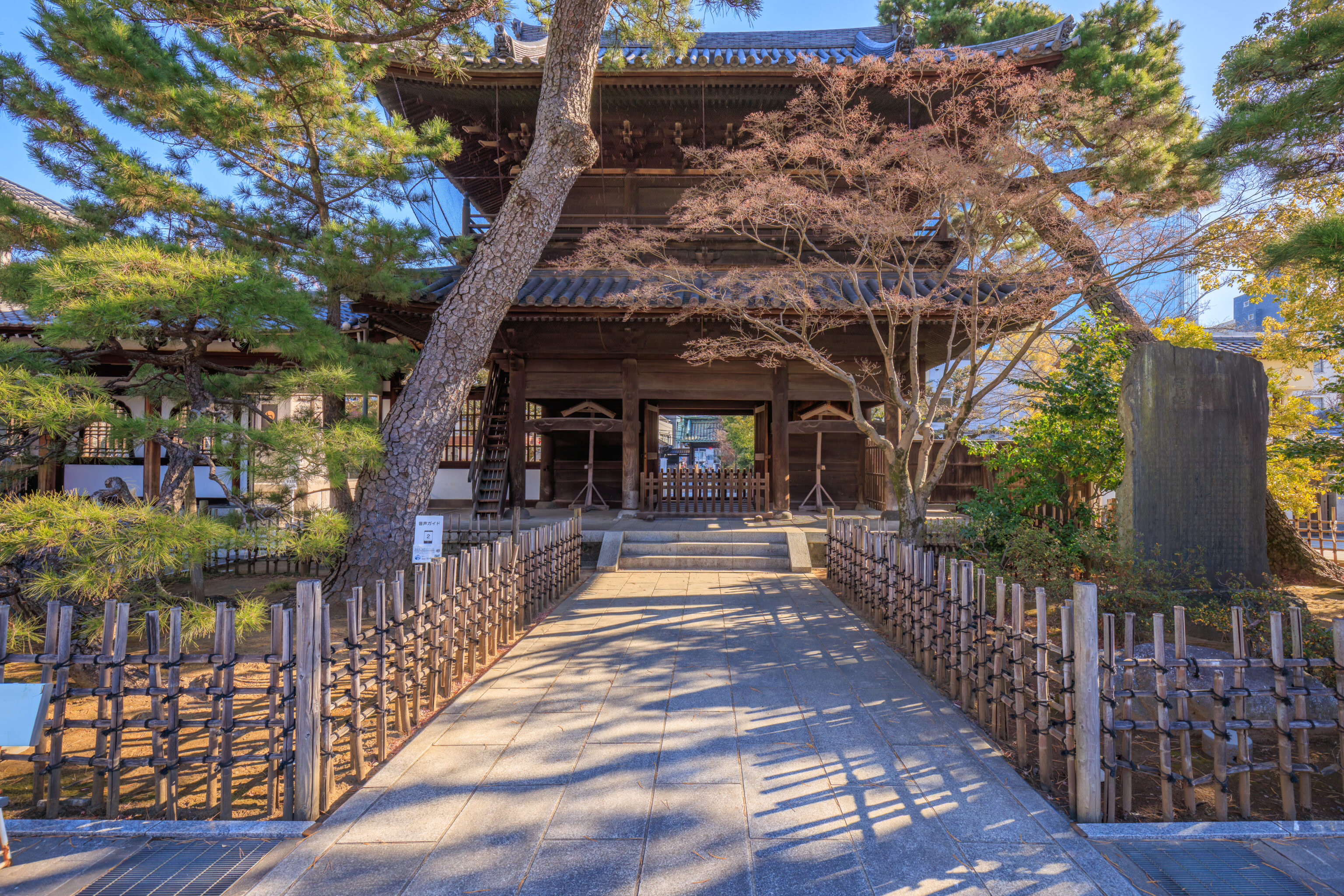
The temple’s main gate, as seen from the courtyard.
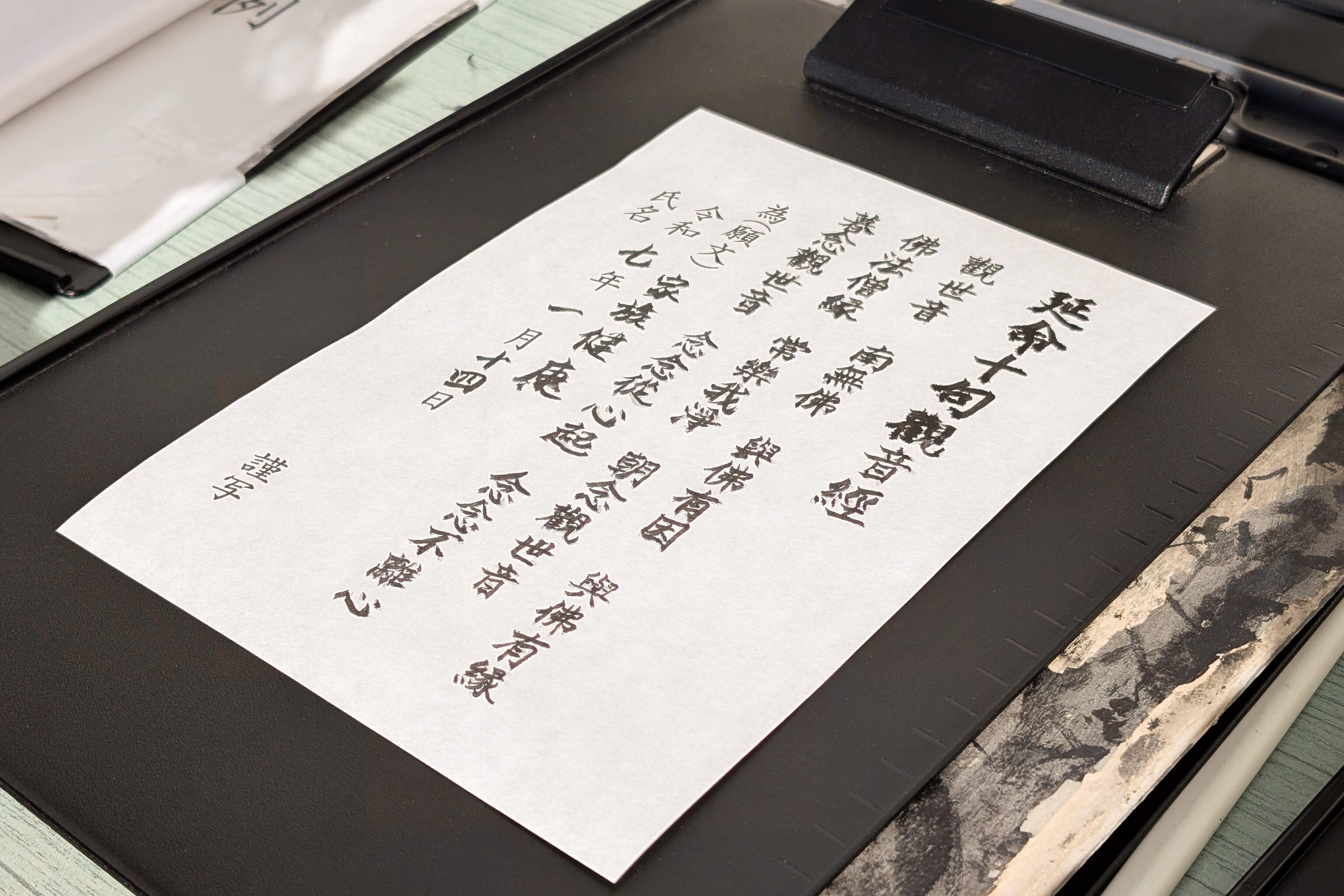
Getting a 御朱印 goshuin is different here from the other shrines and temples that we’ve visited in Japan. The typical experience is that you pass your 朱印帳 shuincho to a clergy member at the goshin counter where they write and stamp the goshin in your shuincho. Sometimes, this is done immediately, sometimes, there is a queue and you pick up your shuincho later after the goshuin has been written and stamped. There are also other temples and shrines where they only offer pre-created goshuin on sheets of paper.
Here, getting a goshuin requires that you go through the effort of copying a sutra. Some options are provided which you then trace over. Copying sutras is considered an act of positive merit.
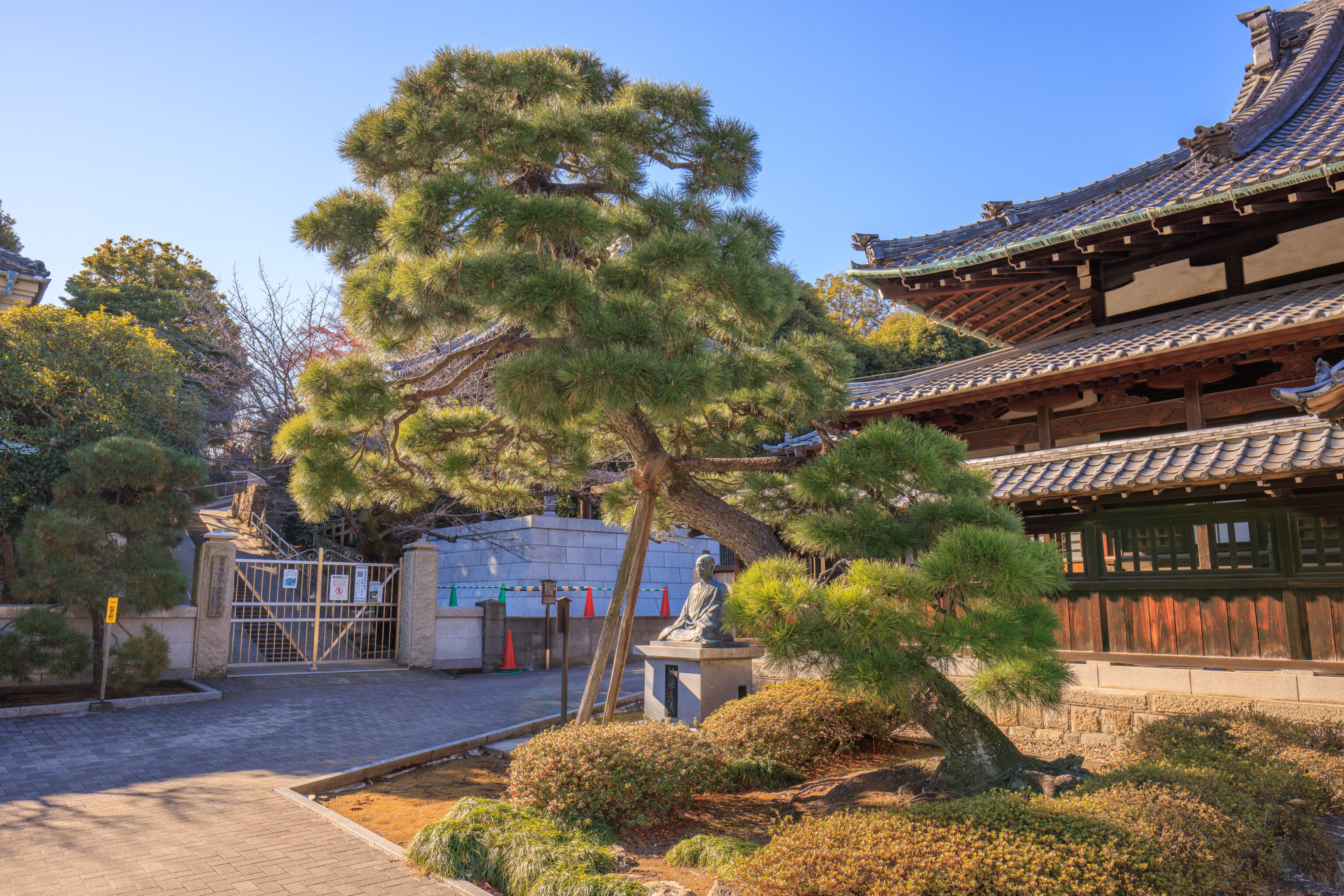
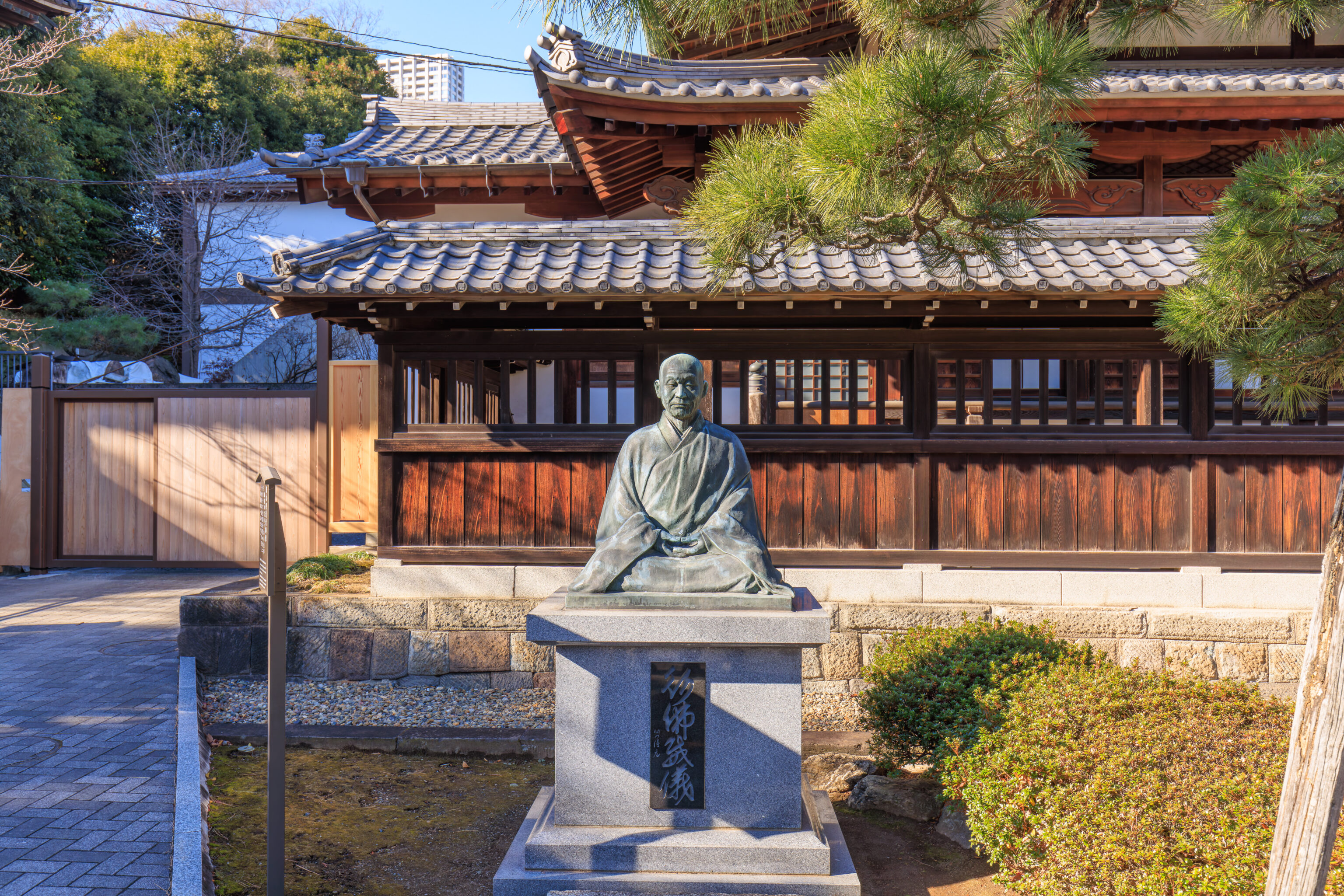
This statue is of Zen Buddhism master 沢木興道 Kodo Sawaki. He seems to be an important figure in modern Japanese Buddhism. Sengaku-ji is a Soto Zen temple, the Buddhist sect that Kodo Sawaki belonged to, which may explain the presence of his statue here.
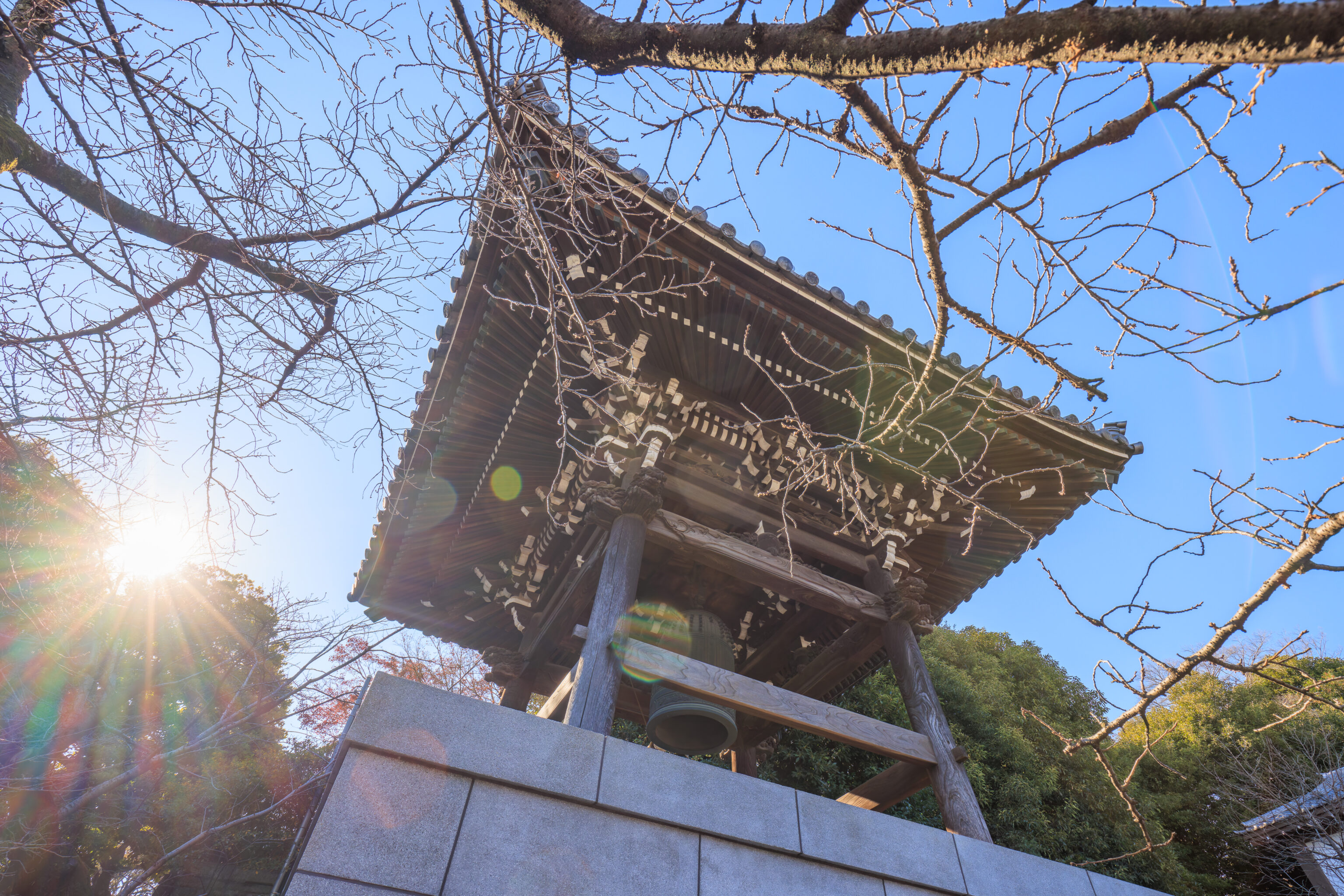
We walked by the temple’s bell tower. A sign provides a brief description:
Bonsho and Shoro (Bell and Belfry)
Constructed in 1913 under the 41st abbot. The bell sounds during morning Zazen and in the evening when the gate is closed.
On the other hand, the bell that was used at the temple from the Edo through Meiji periods is now stored at the Austrian Museum of Folk Life and Folk Art in Vienna.
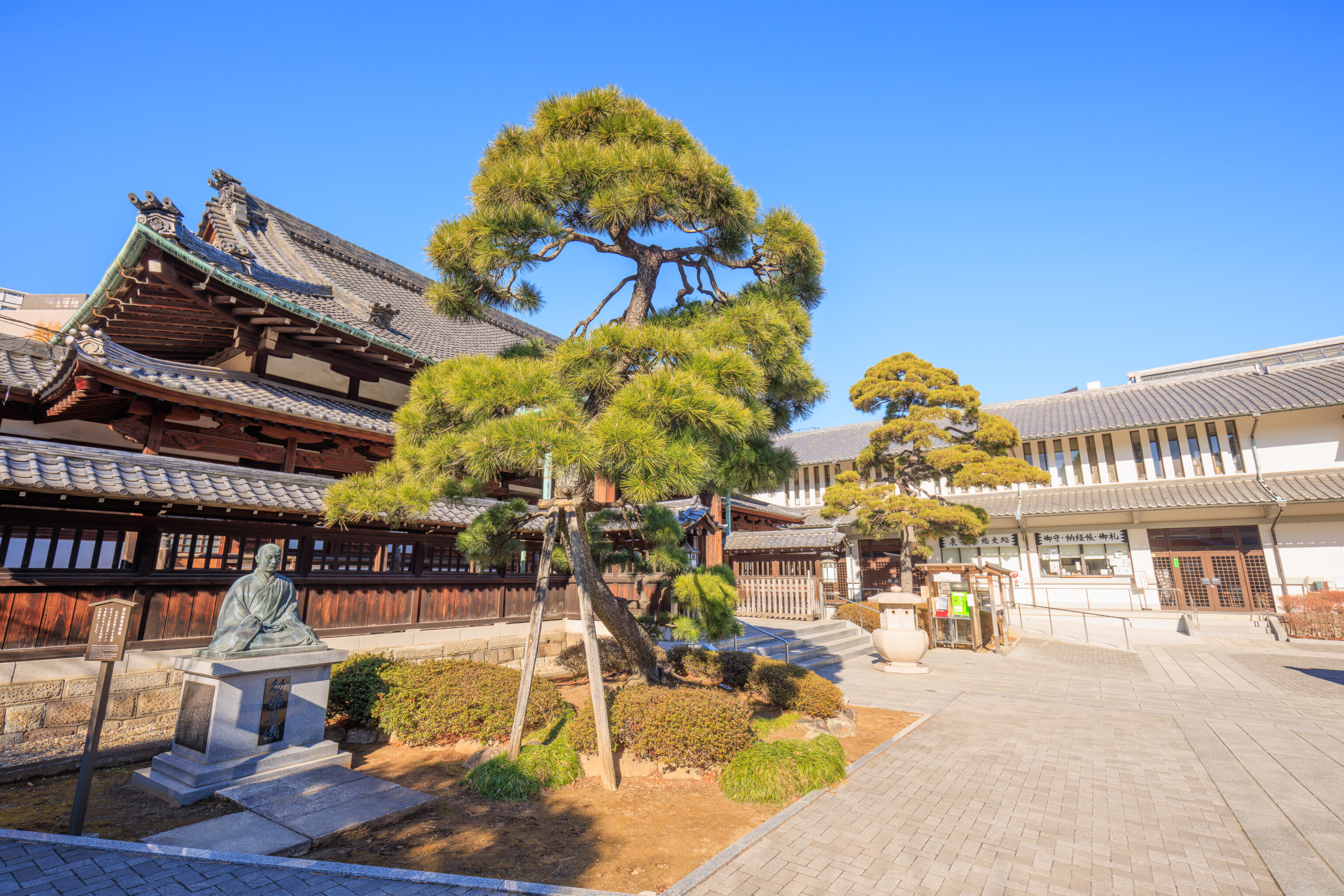
A temple view from the west side of the main courtyard.
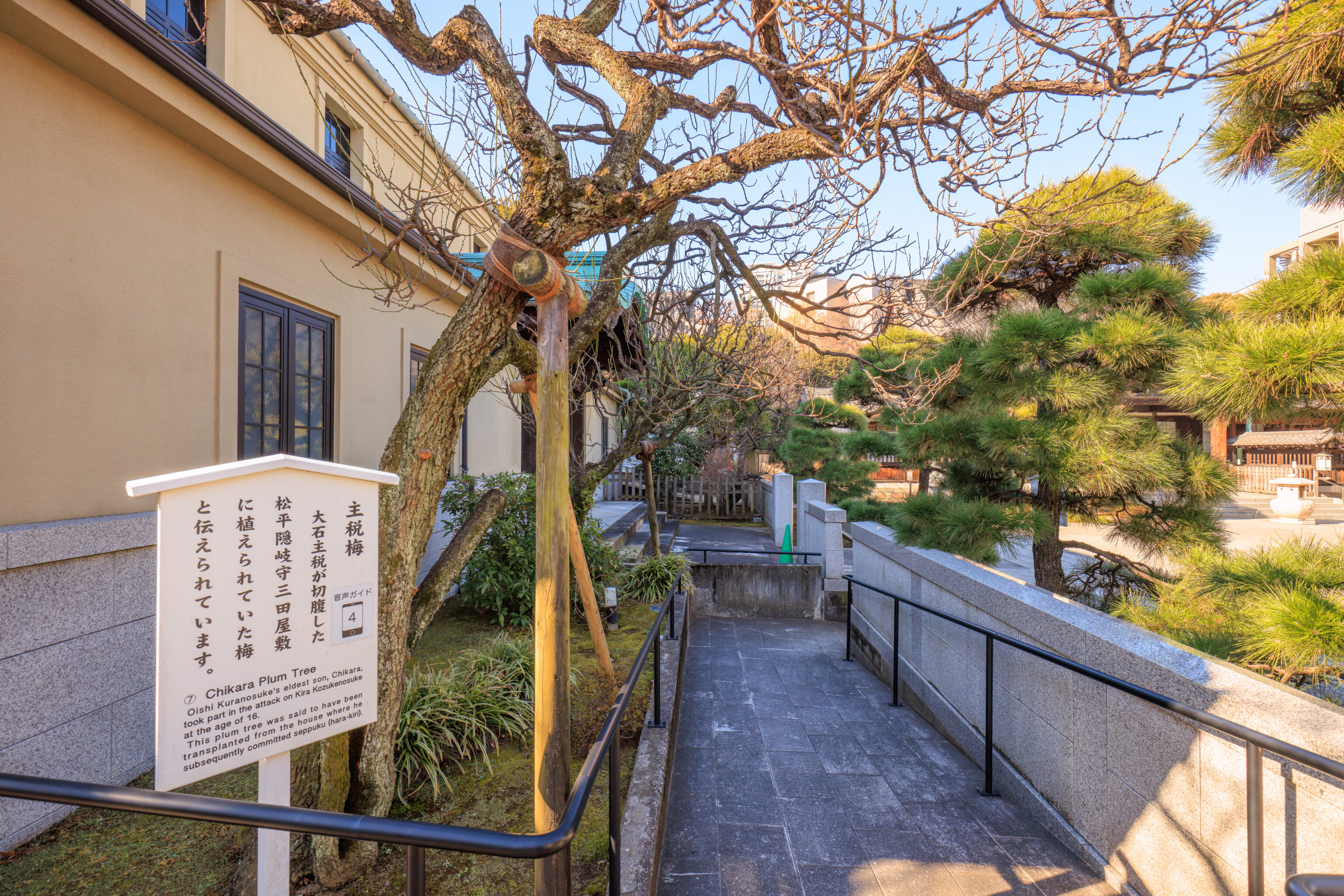
This tree is where Oishi Chikara, son of Oishi Kuranosuke, performed seppuku. The English text on the sign reads:
Chikara Plum Tree
Oishi Kuranosuke's eldest son, Chikara, took part in the attack on Kira Kozukanosuke at the age of 16.
This plum tree was said to have been transplanted from the house where he subsequently committed seppuku (hara-kiri).
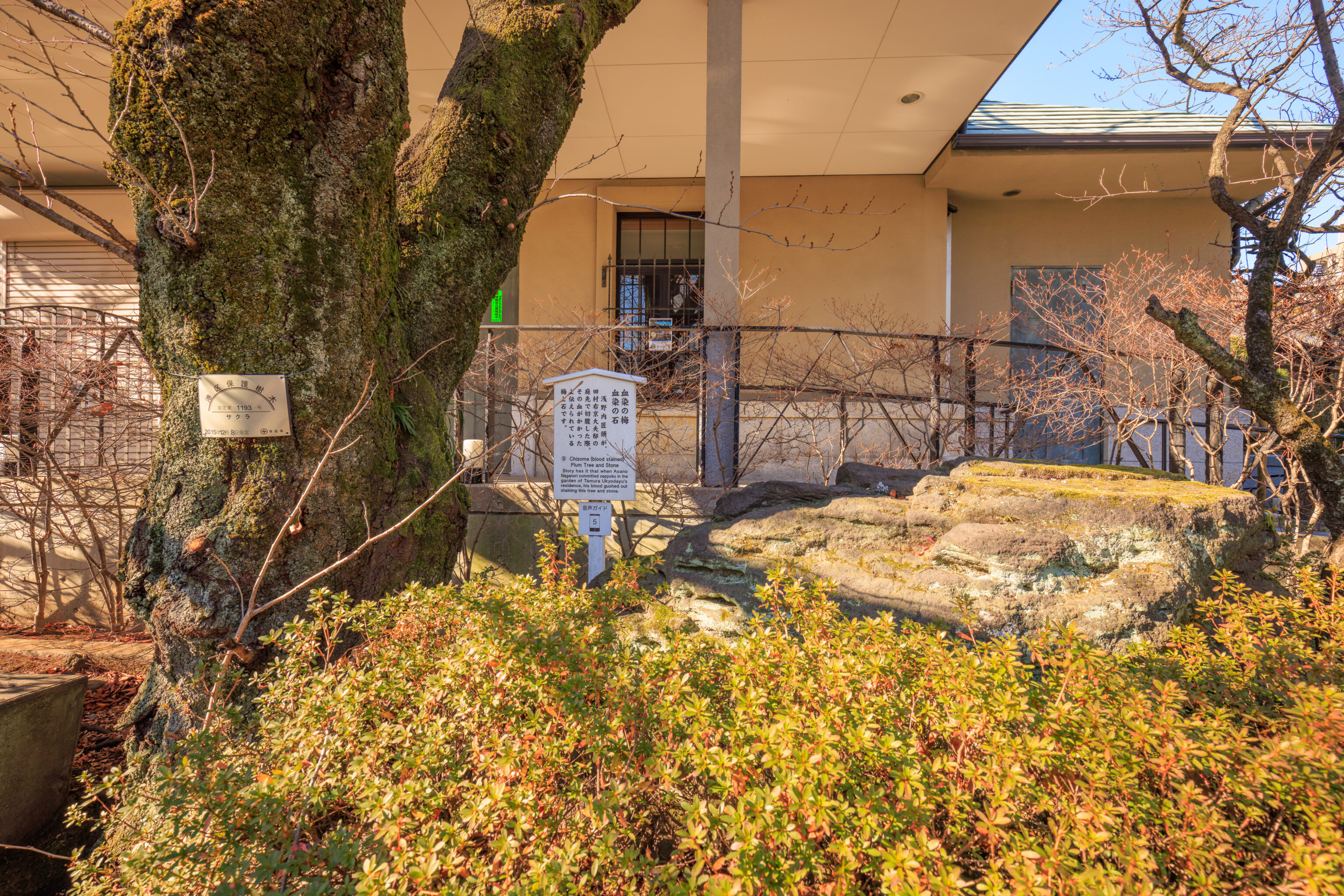
This tree and stone are said to have been stained with the blood of Asano Naganori, the daimyo of the 47 ronin, when he performed seppuku. The sign between the two reads:
Chizome (blood stained)
Plum Tree and Stone Story has it that when Asano Naganori committed seppuku in the garden of Tamura Ukyodayu's residence, his blood gushed out staining this tree and stone.
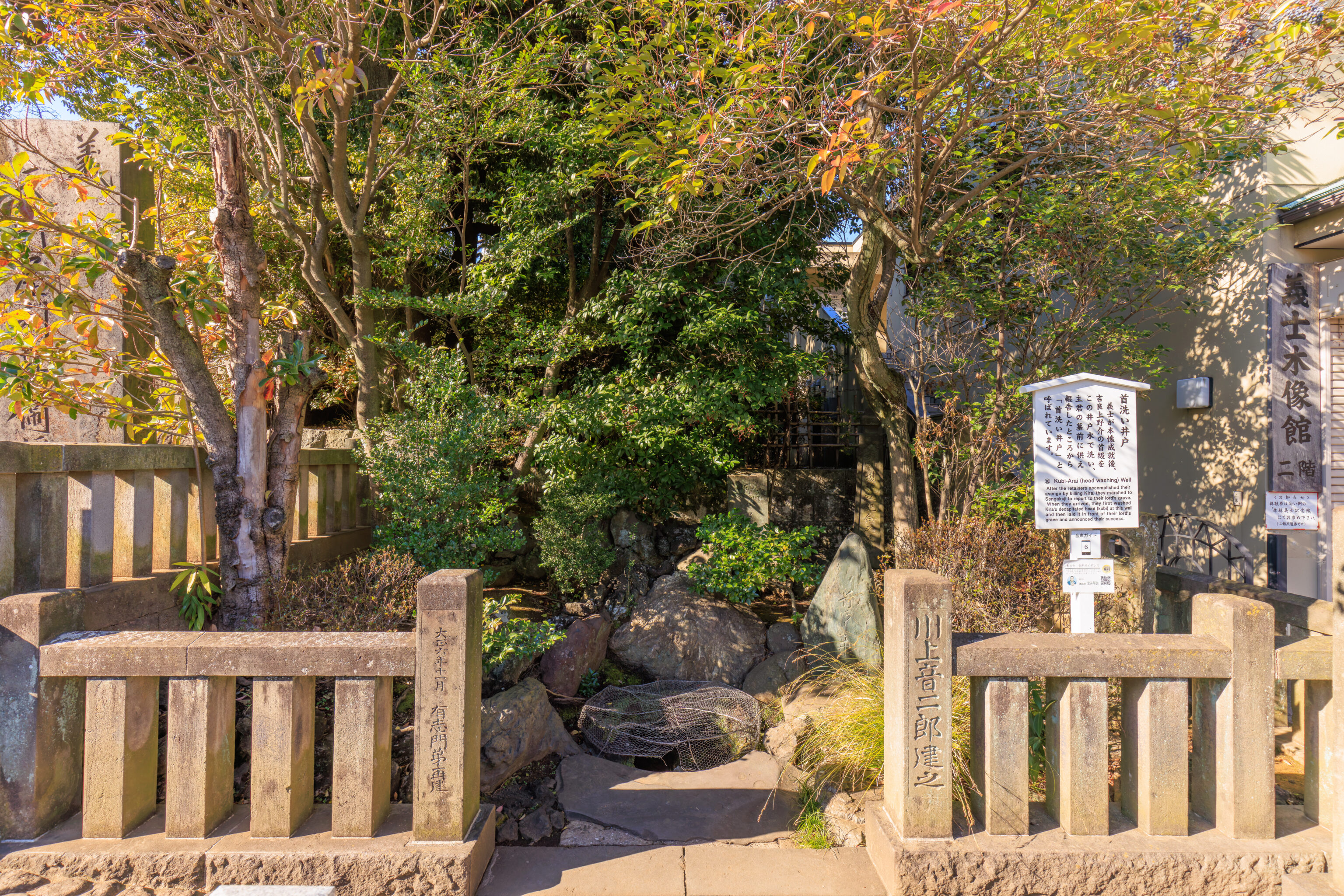
After killing Kira Yoshinaka, the ronin brought his decapitated head here where they washed it at this well before placing it on Asano Naganori’s grave.
Kubi-Arai (head washing) Well
After the retainers accomplished their avenge by killing Kira, they marched to Sengakuji to report to their lord's grave. When they arrived, they first washed Kira's decapitated head (kubi) at this well and then laid it in front of their lord's grave and announced their success.
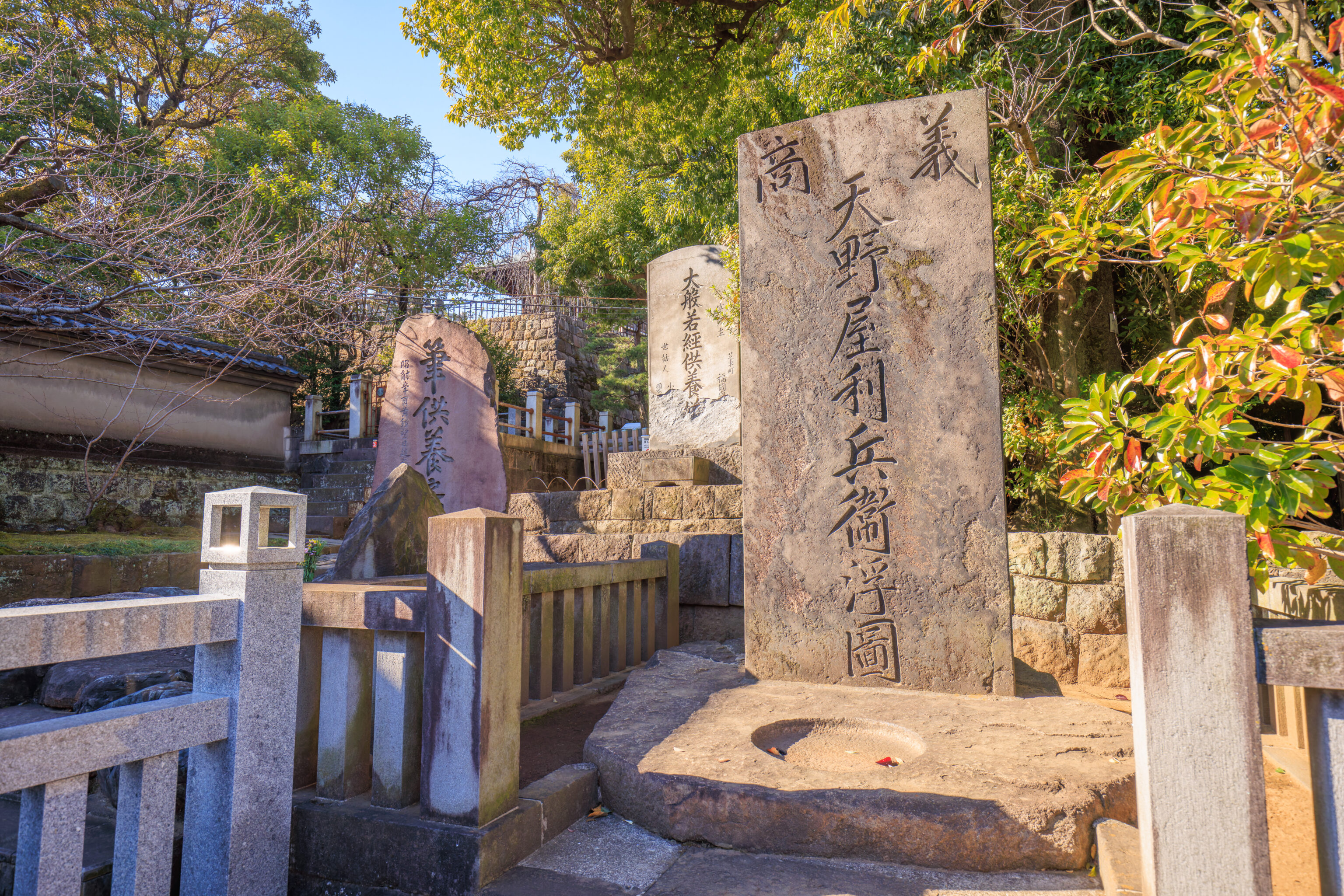
These seem to be unrelated to the 47 ronin…
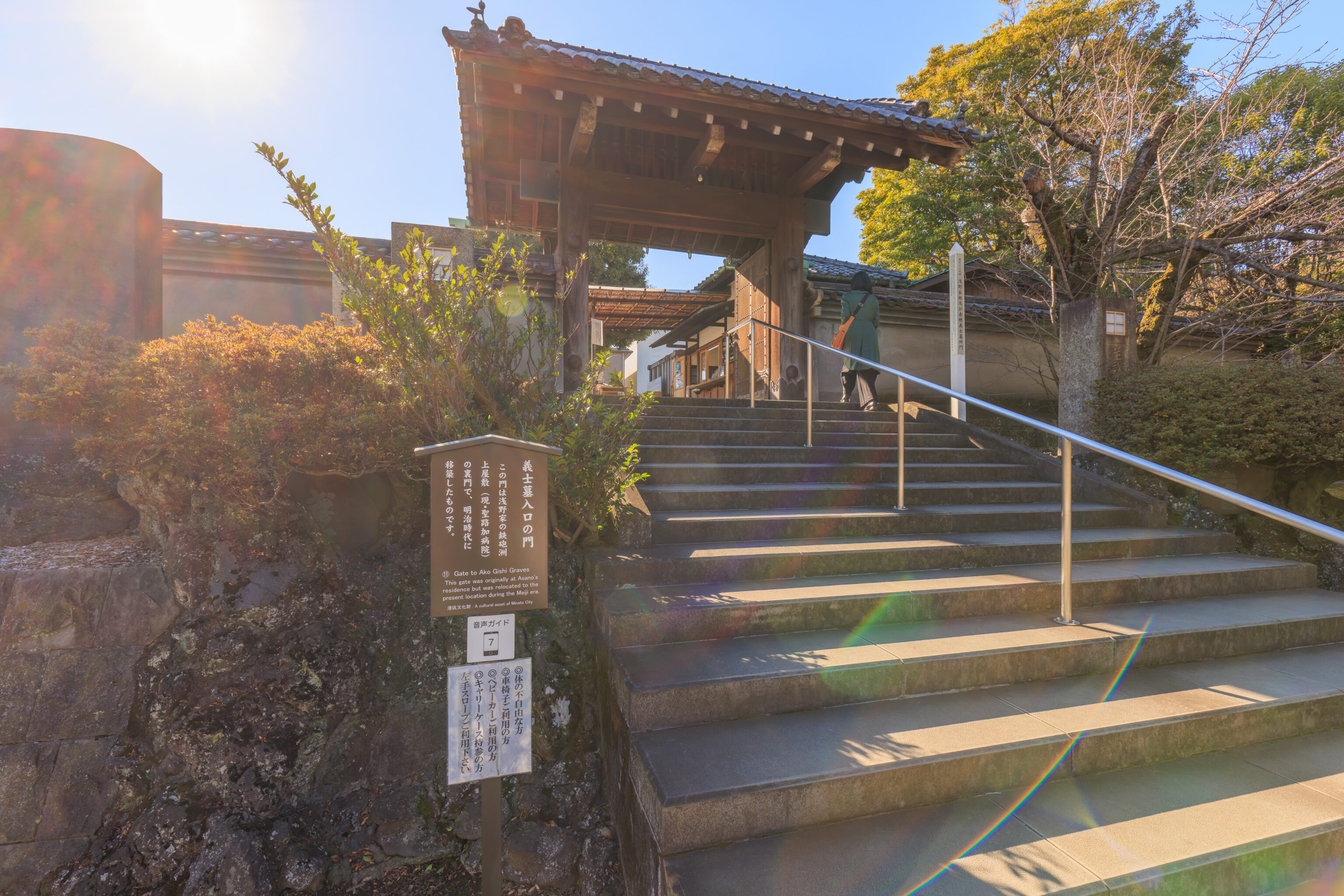
This gate was originally at Asano Naganori’s main residence (上屋敷 kamiyashiki). The sign states just that in English:
Gate to Ako Gishi Graves
This gate was originally at Asano's residence but was relocated to the present location during the Meiji era.
The Japanese text additionally states that Asano Naganori’s kamiyashiki is now home to St. Luke’s Hospital. That places it just a dozen or so blocks northeast of the former Tsukiji Market. Tsukiji is no more than 3 miles away from here.
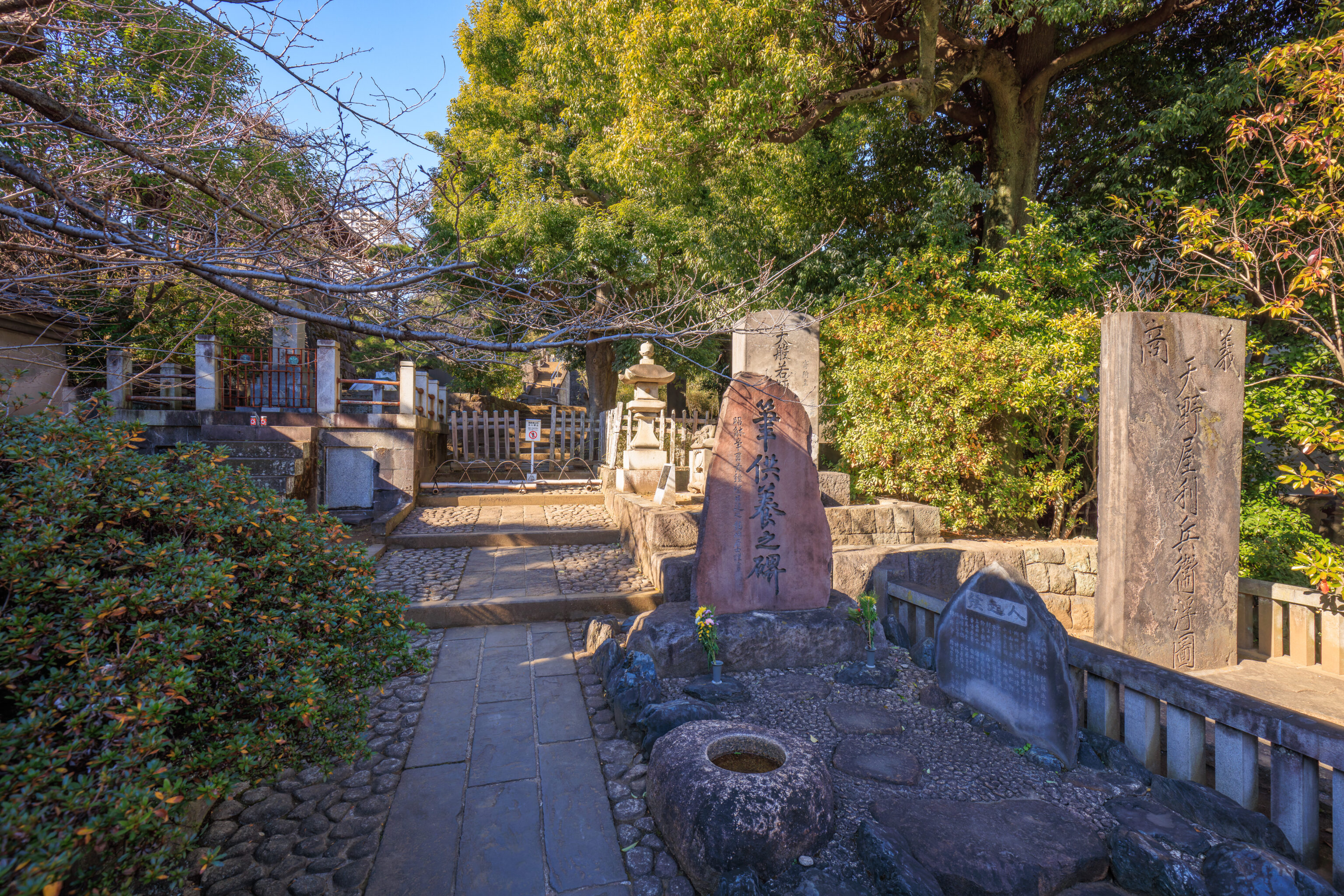
This path off to the side was closed. Instead, we went up the stairs and through Asano Naganori’s gate.
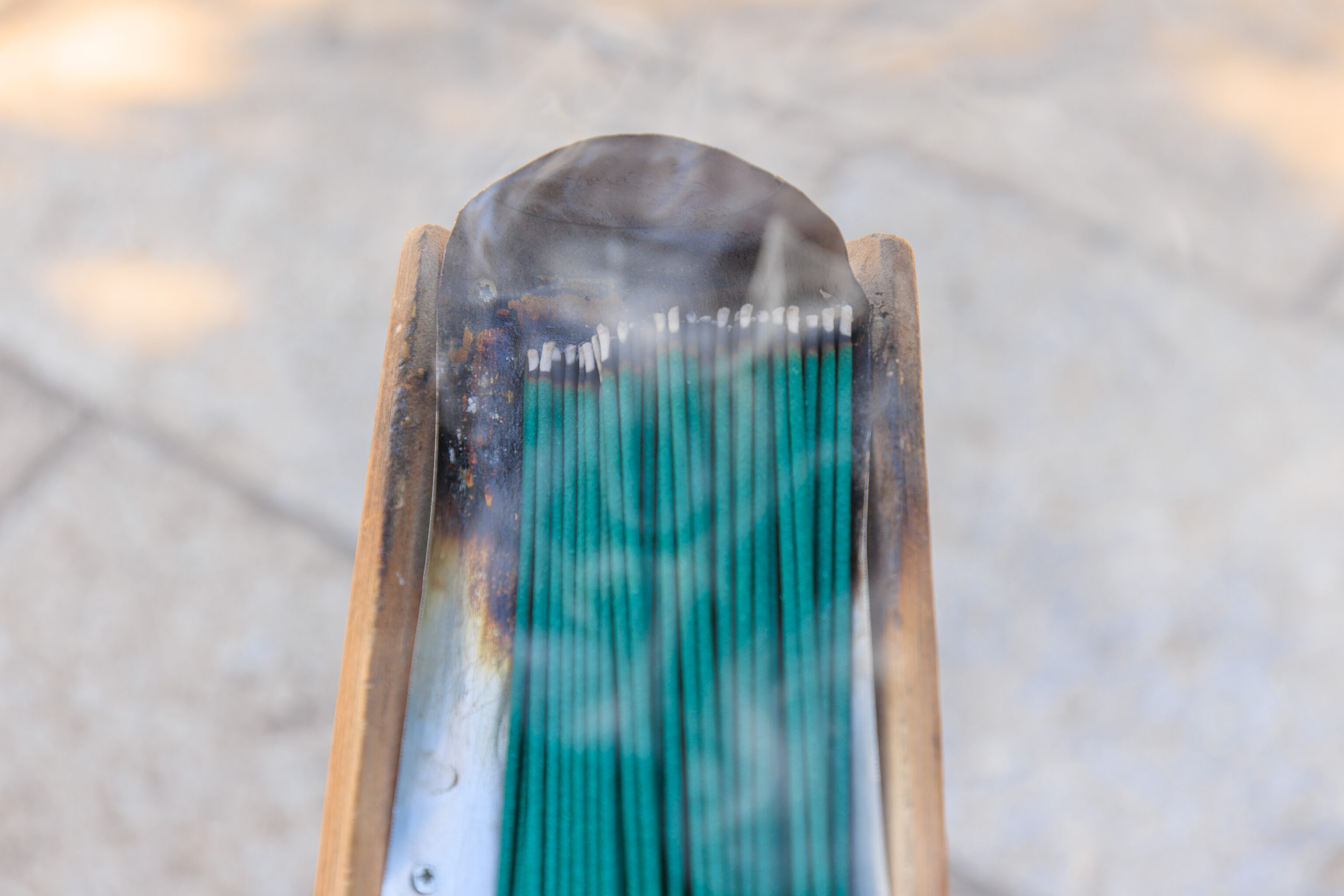
We paid to enter the graveyard containing the graves of the 47 ronin. After paying the entrance fee, visitors are given incense to place on the graves of the 47 ronin!
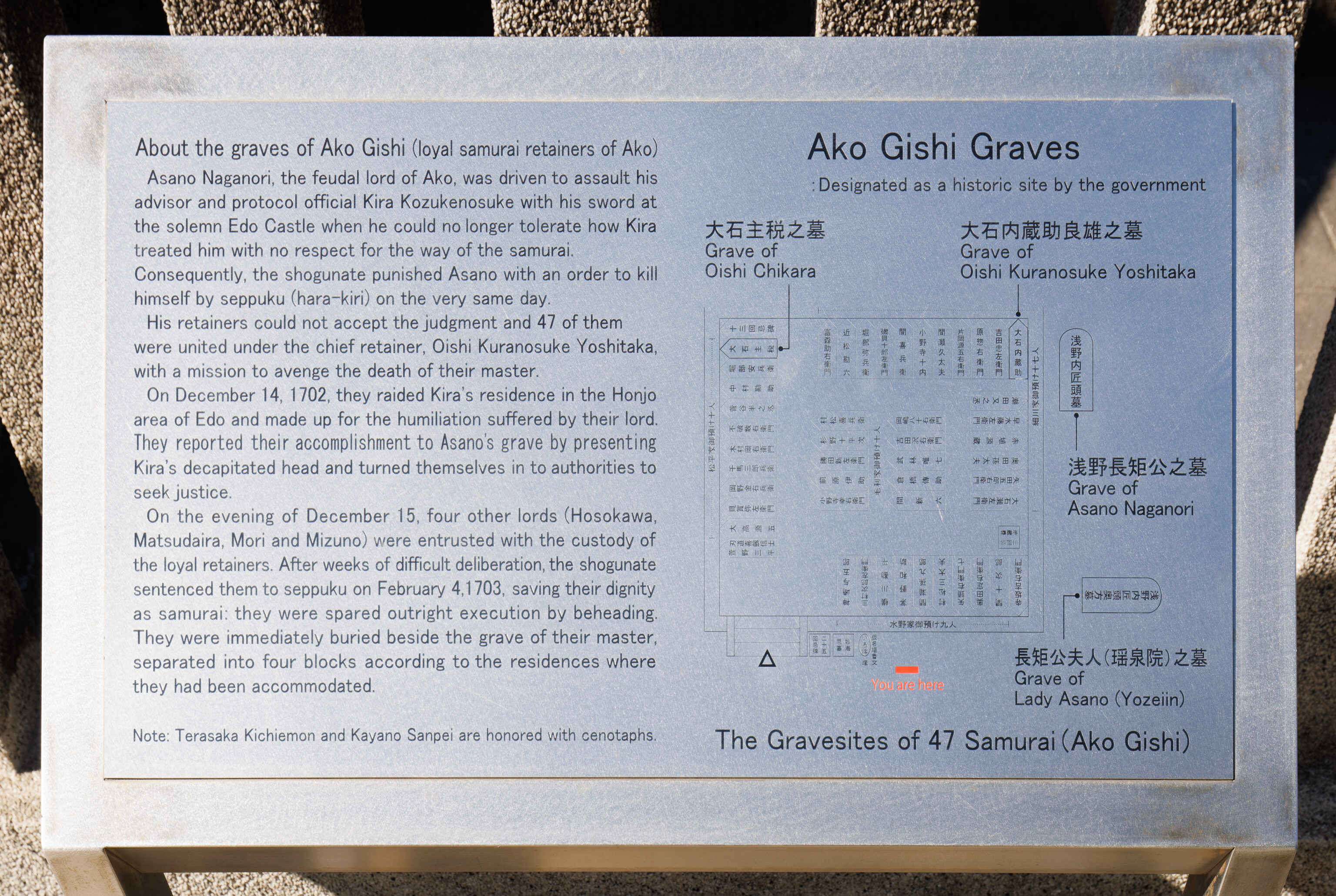
This sign contains a map with the location of each grave.
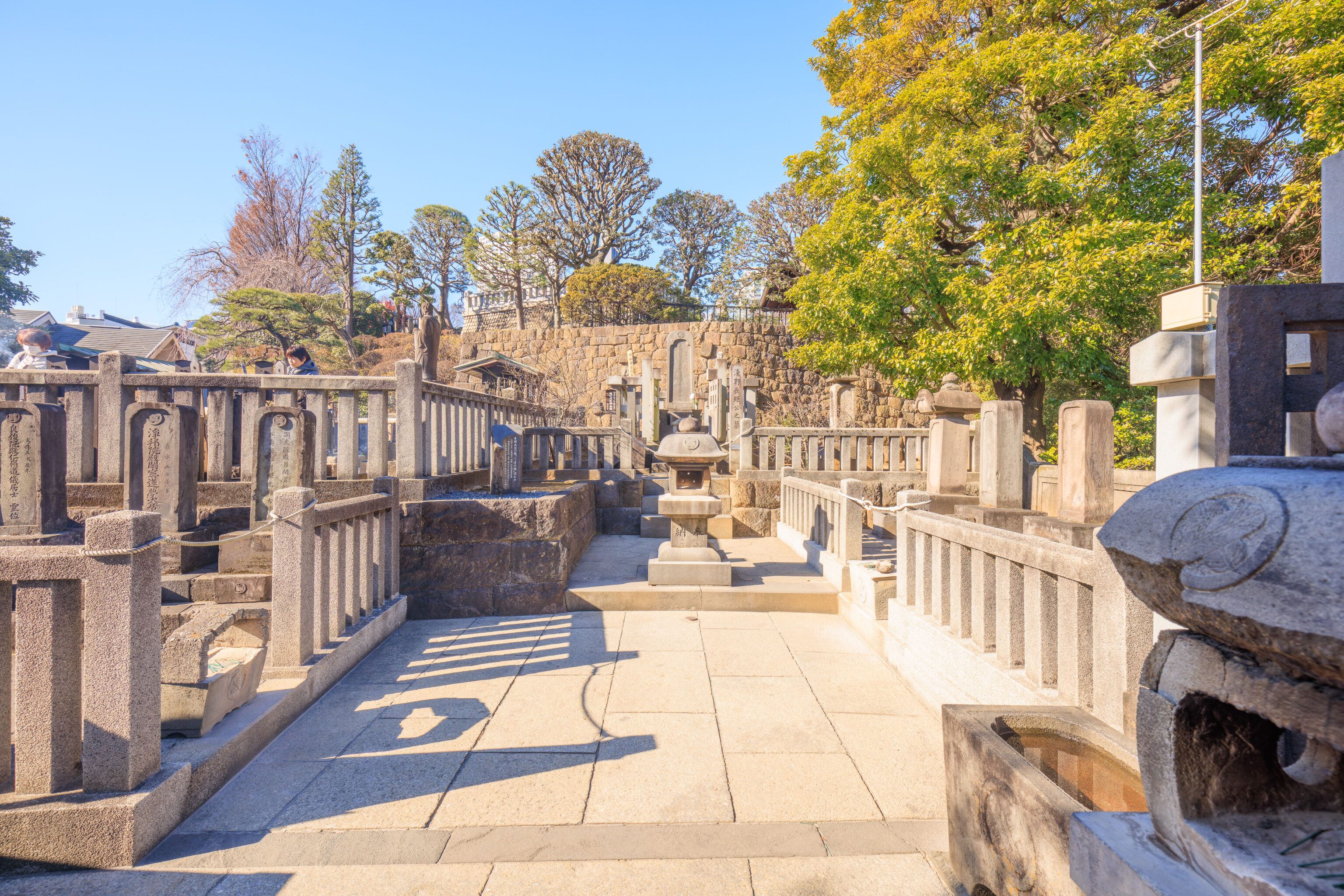
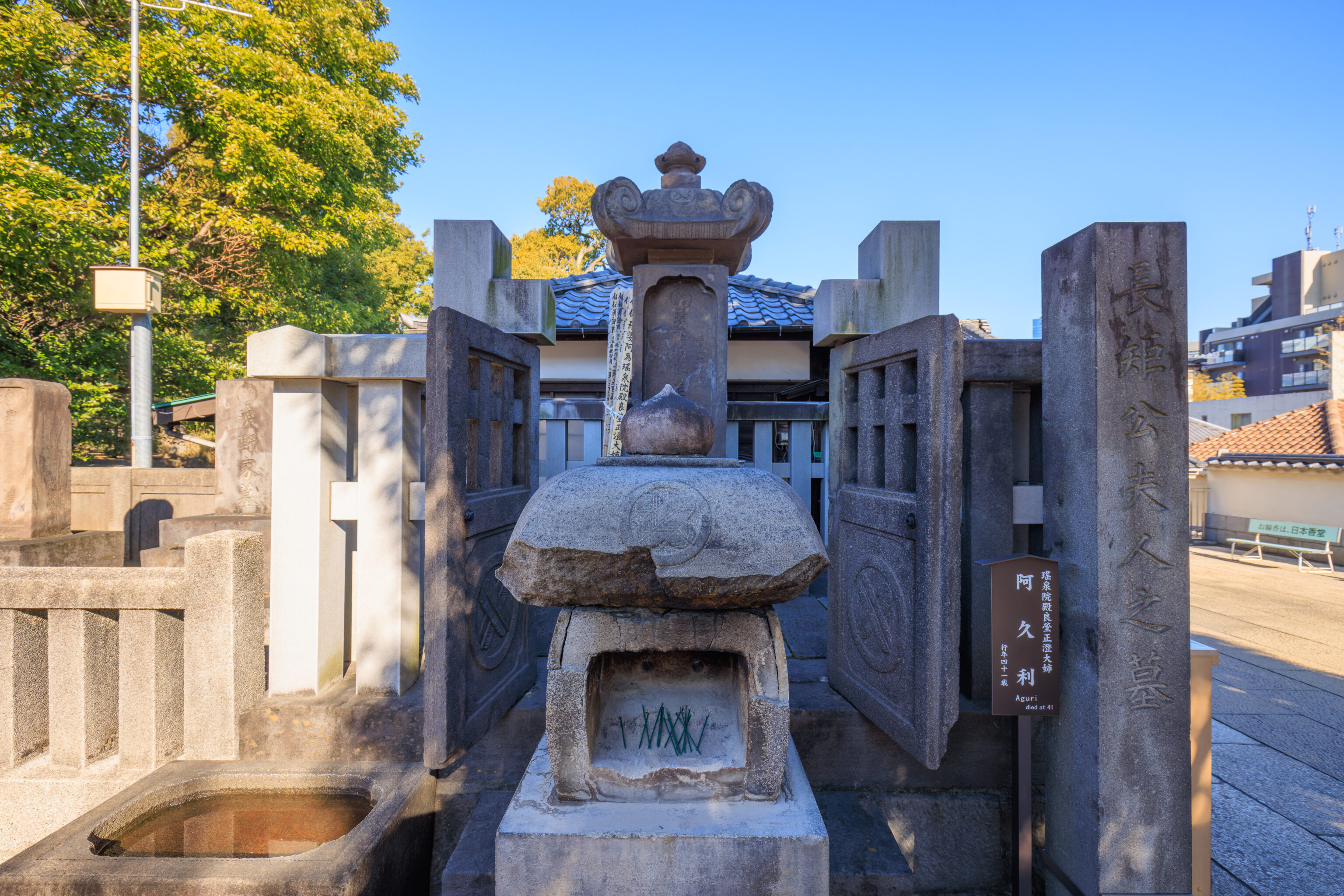
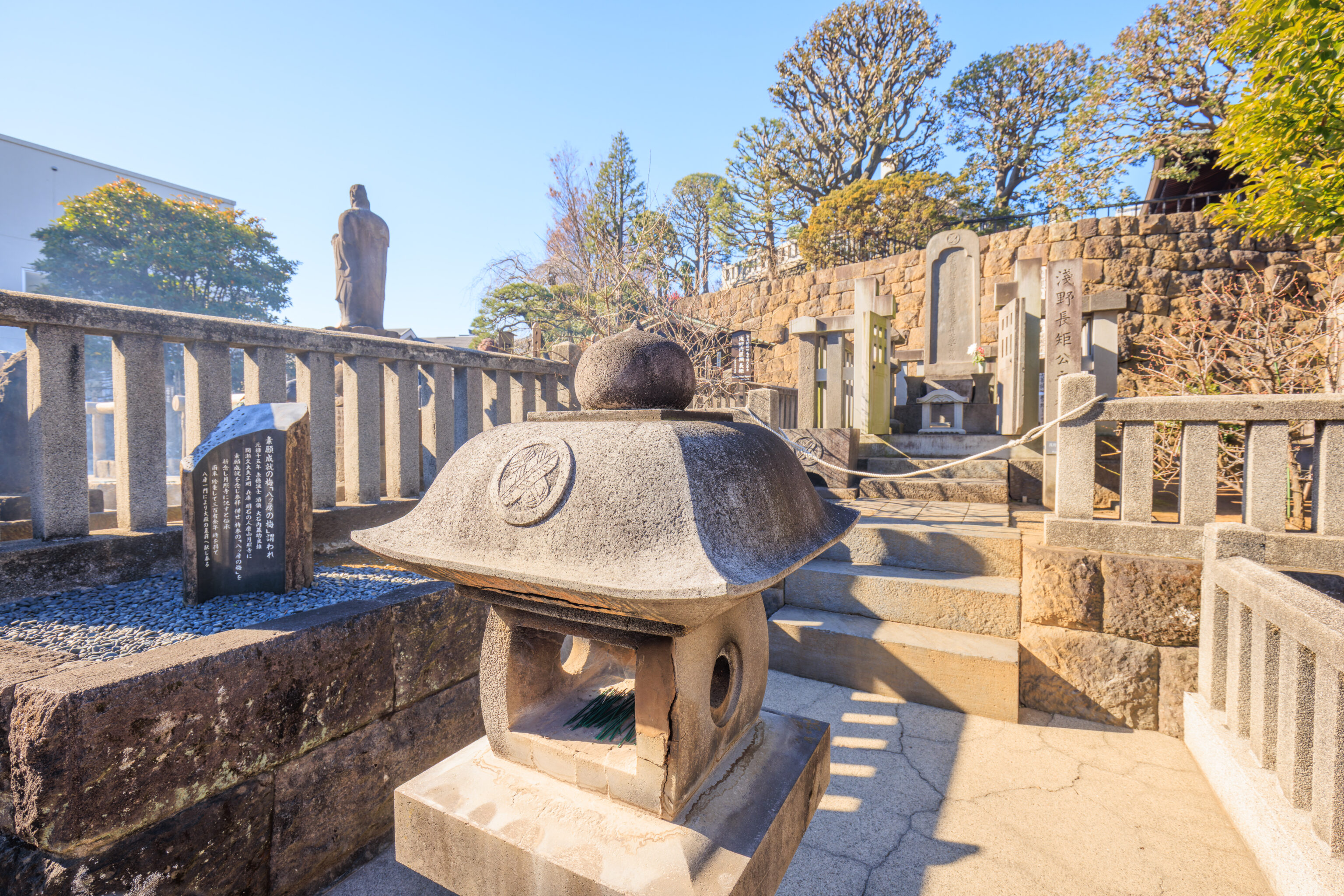
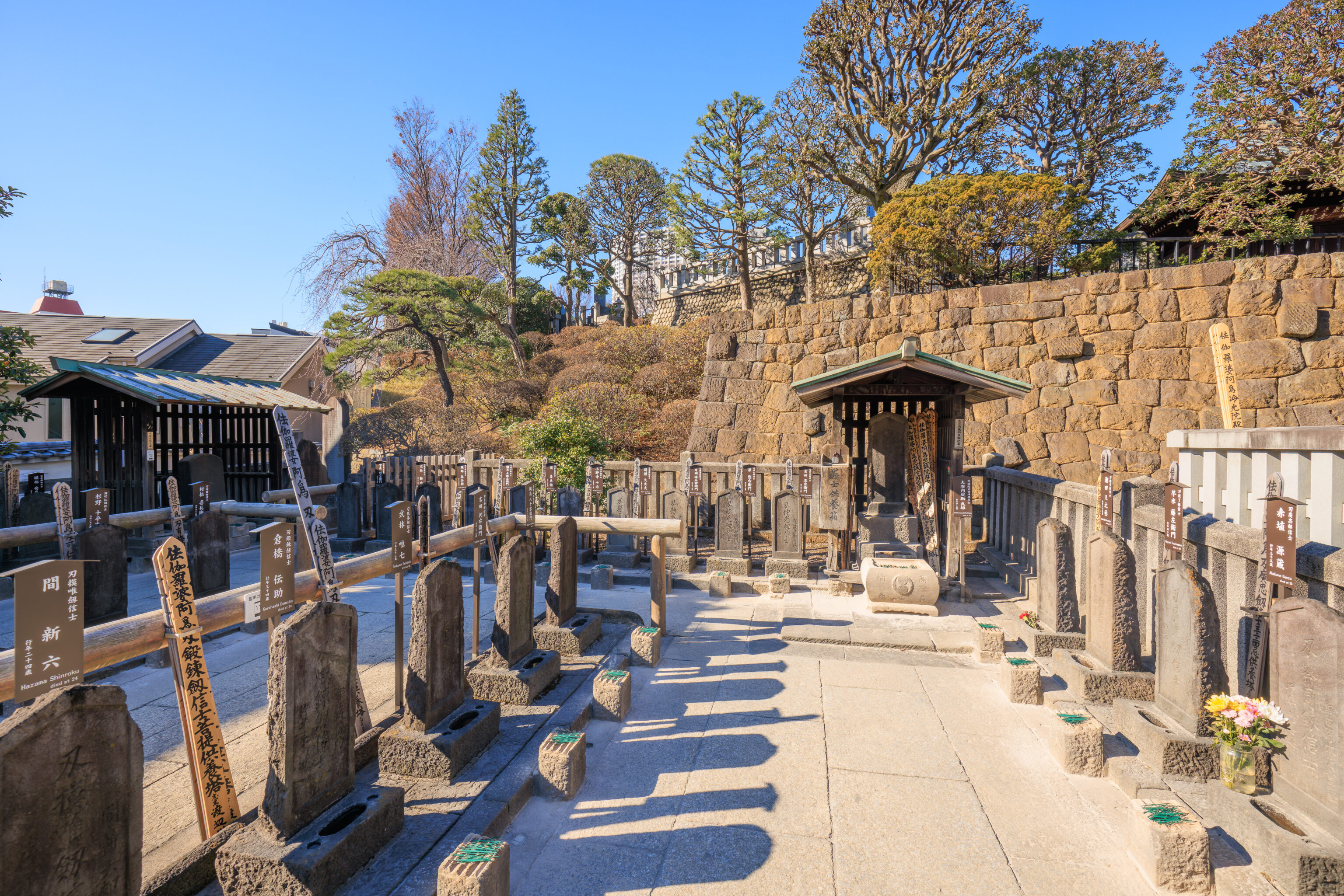
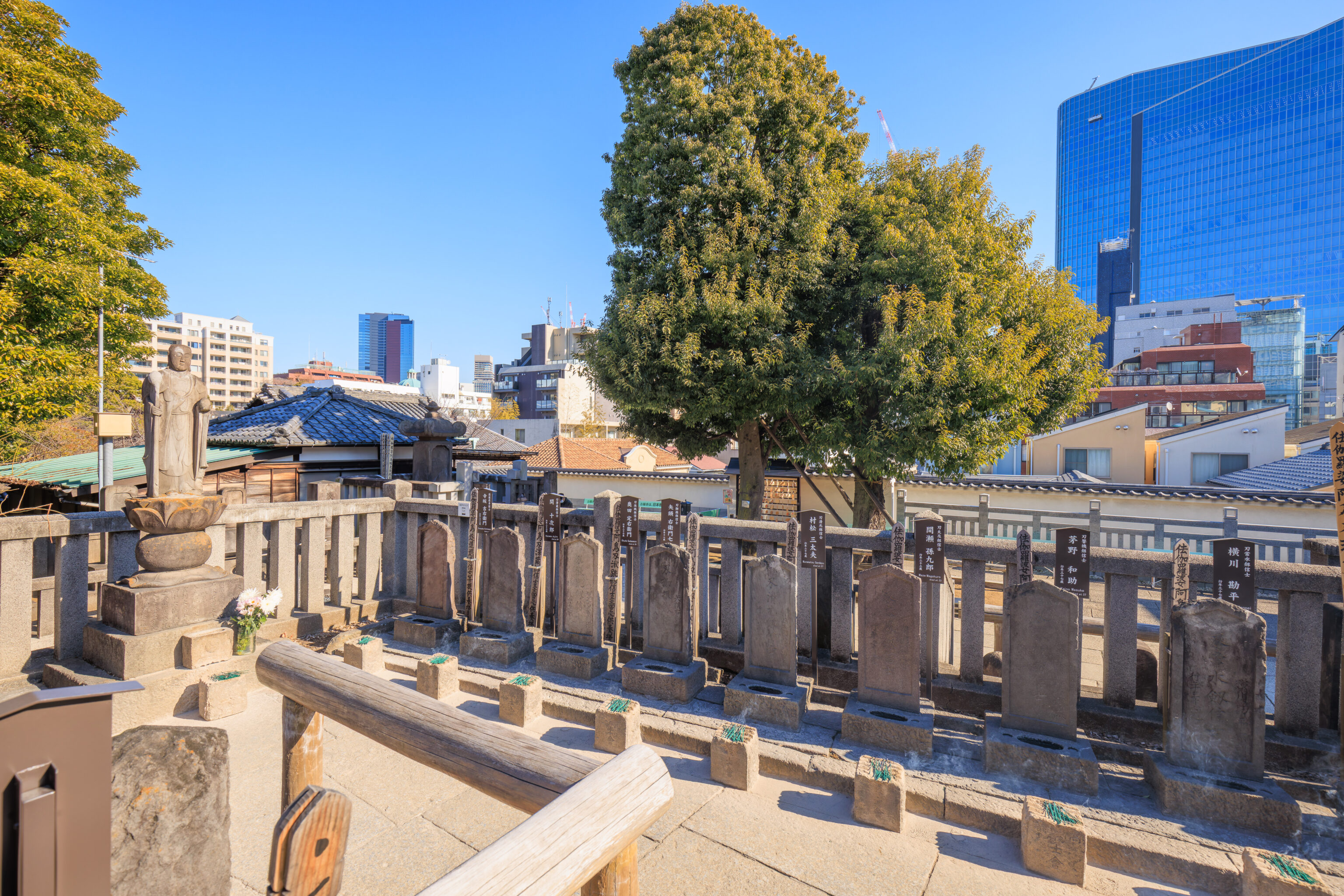
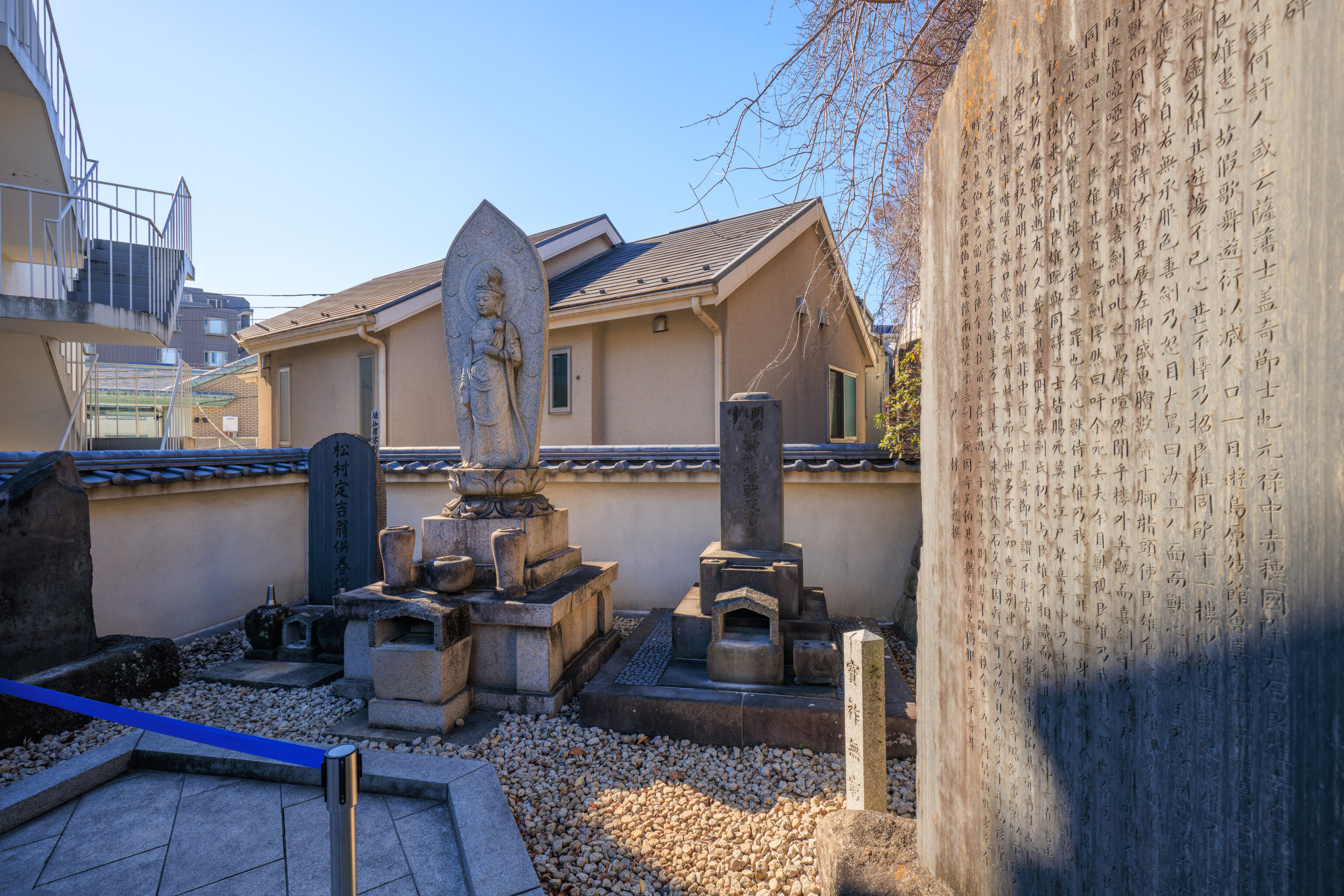
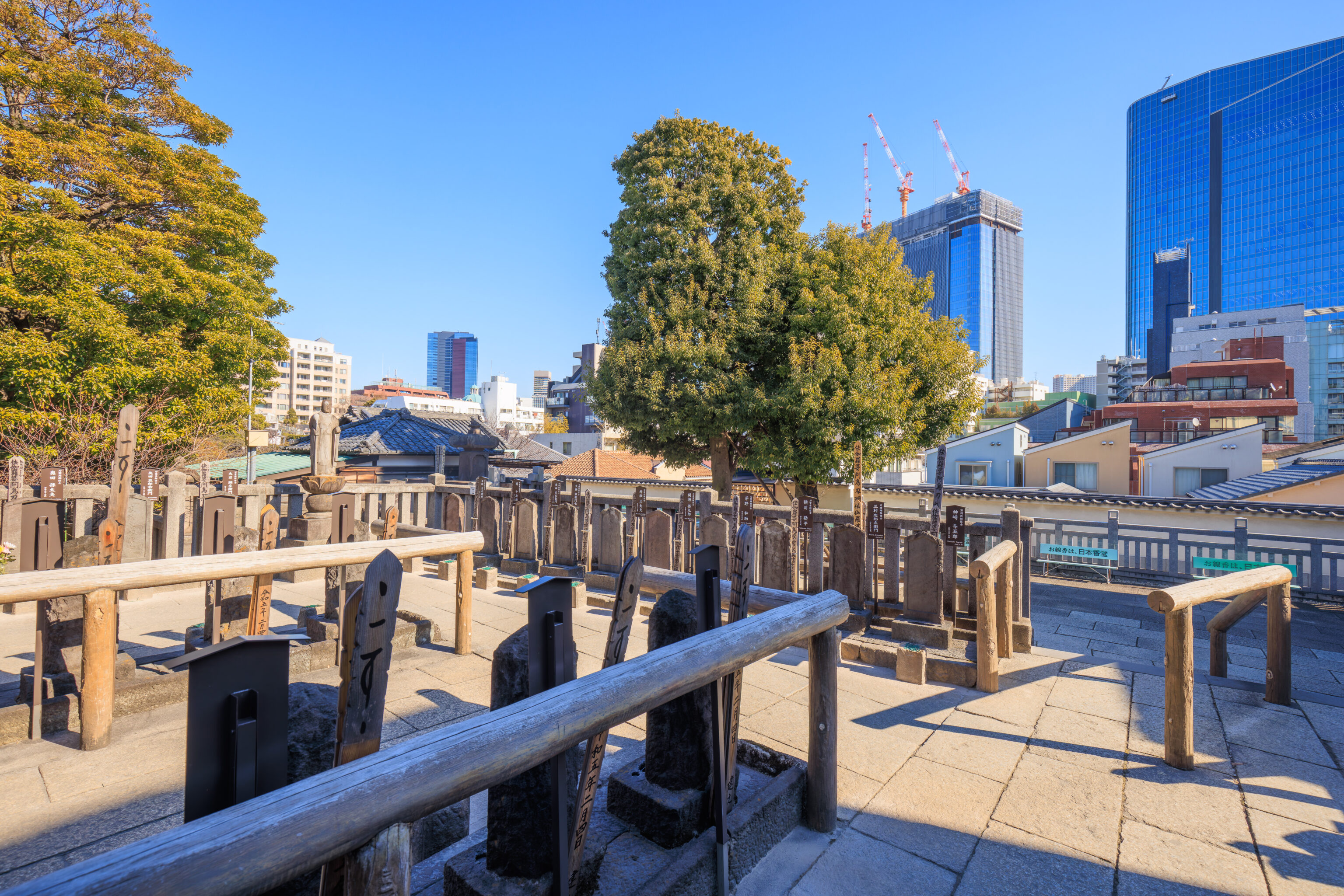
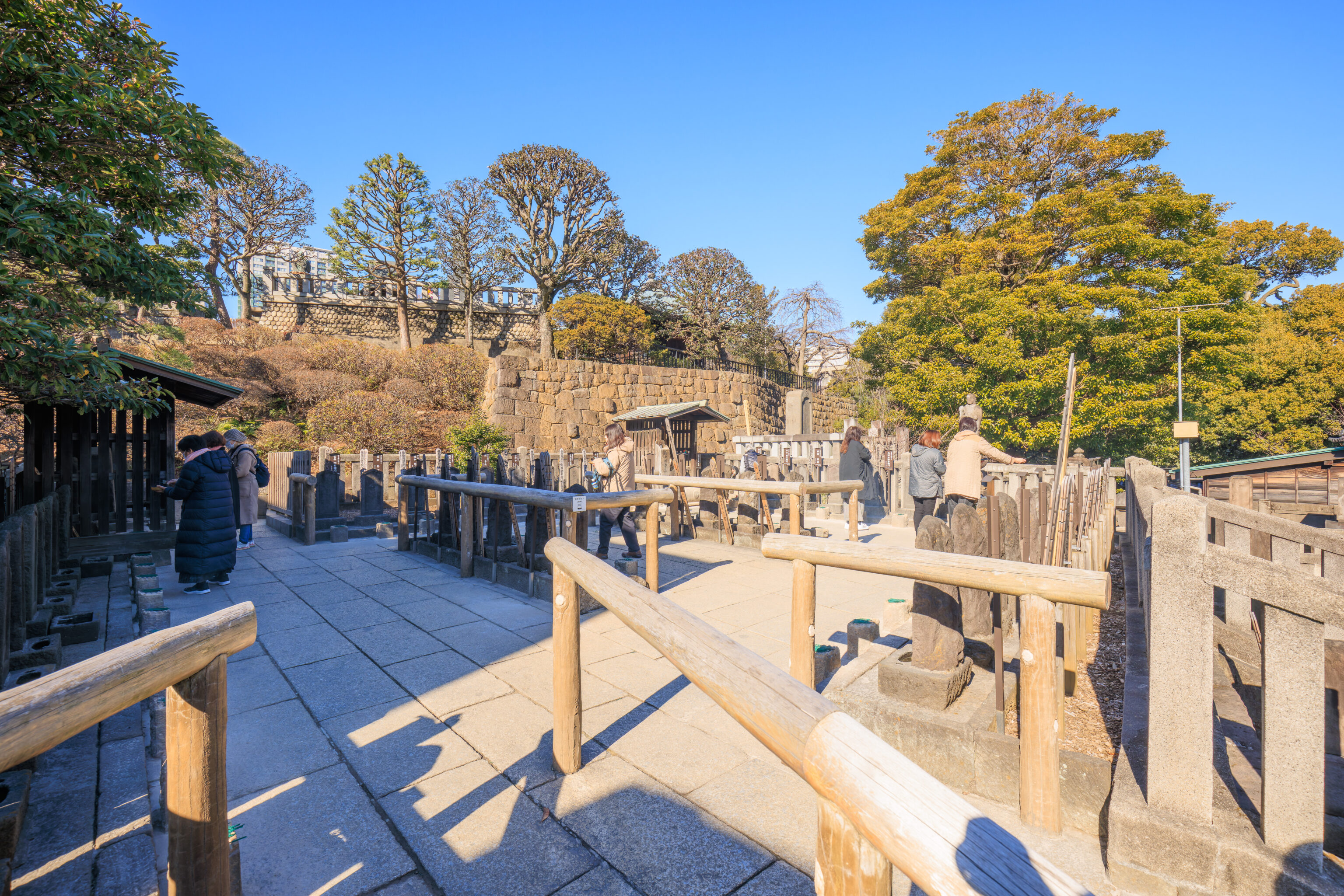
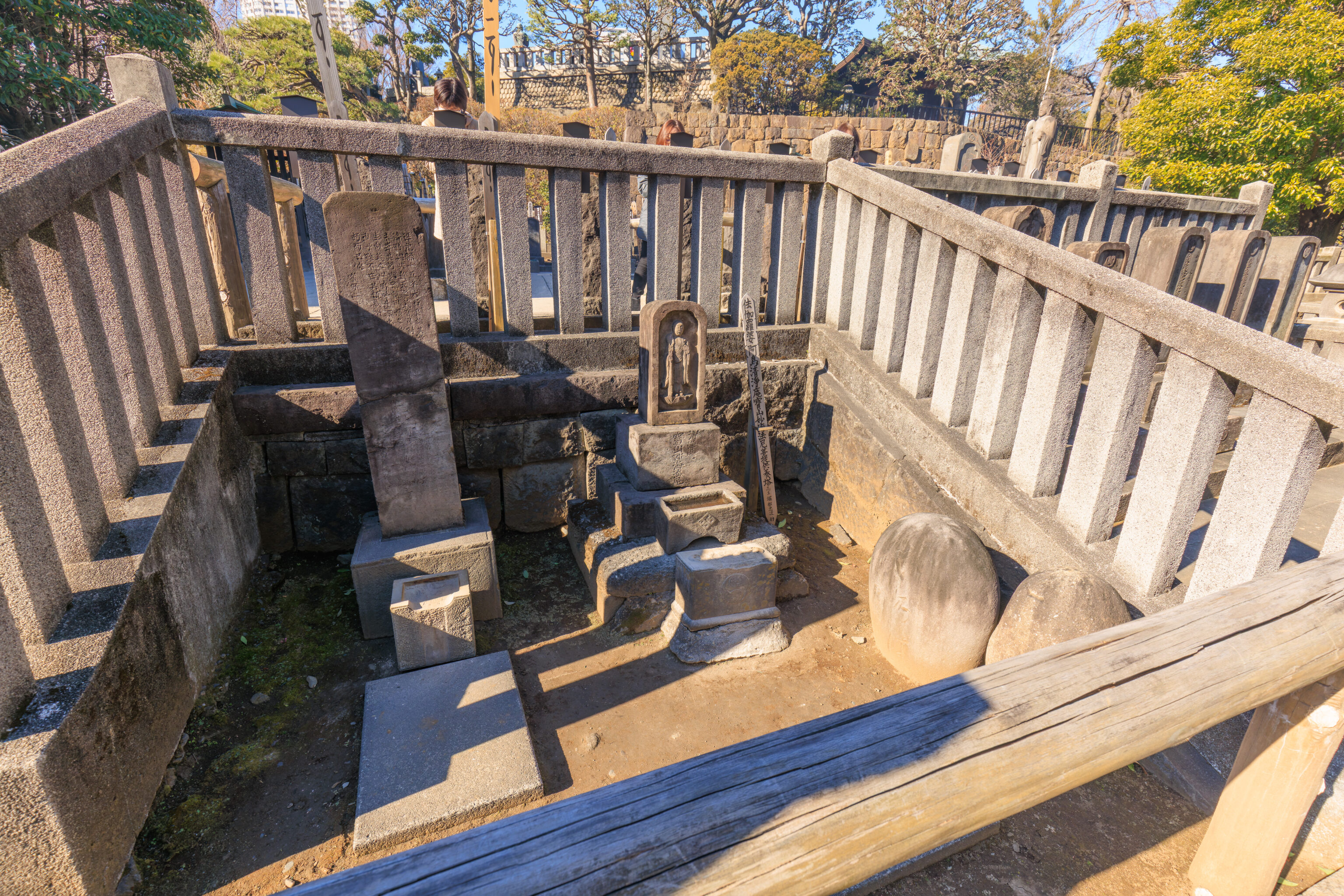
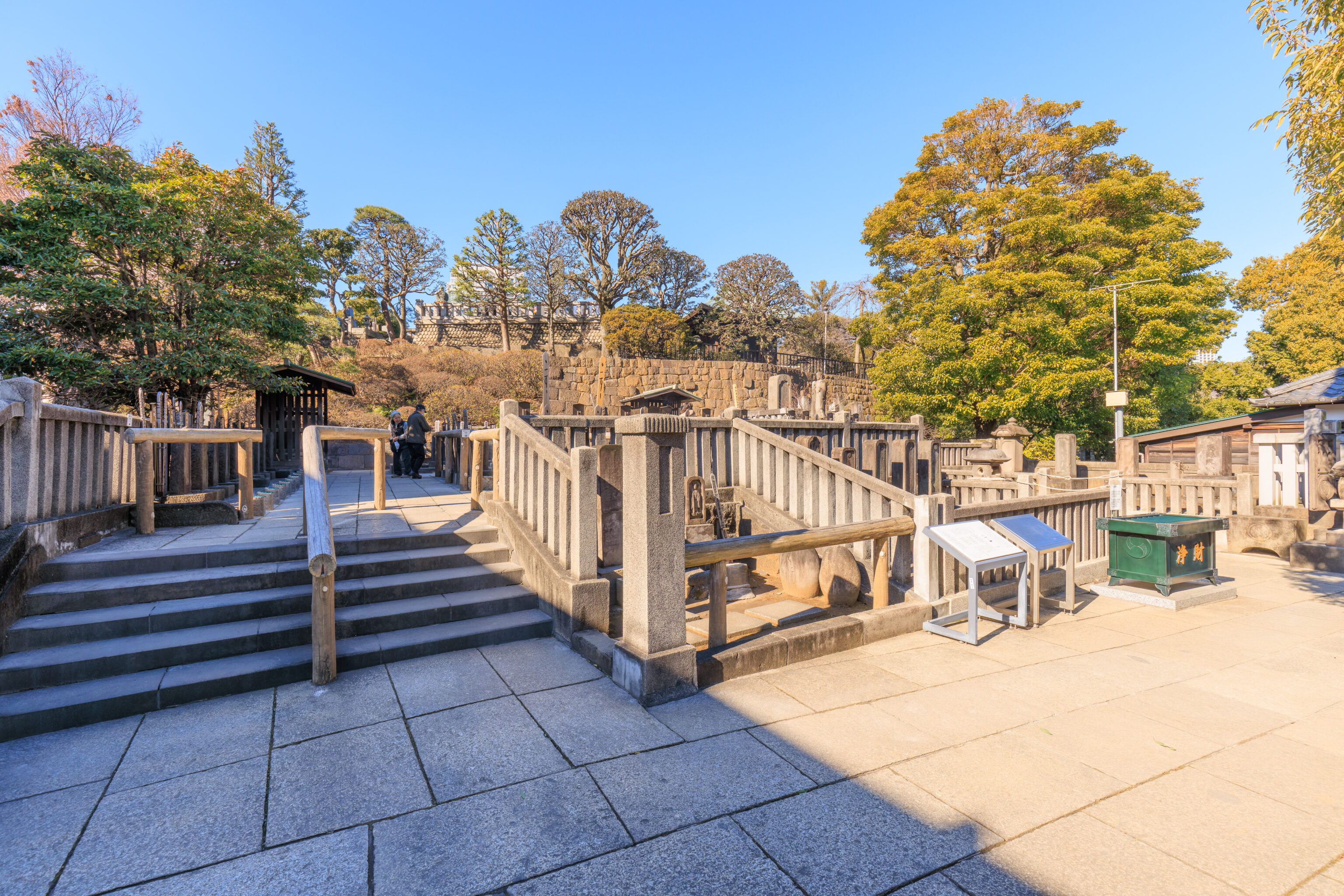
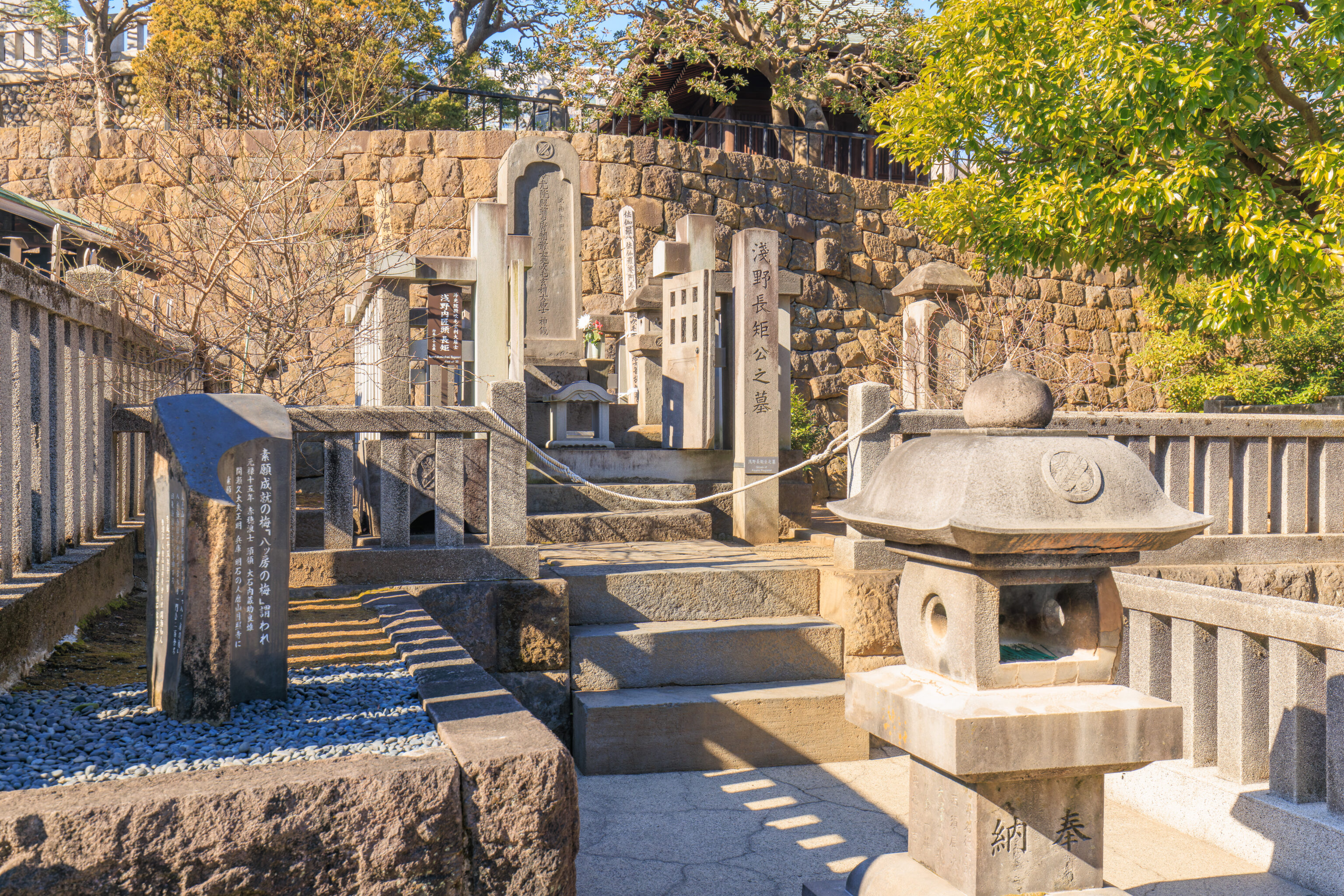
We walked through the graveyard, placing incense on each grave. They give you more than enough sticks of incense so you can leave more than one as needed to use up the entire supply provided.
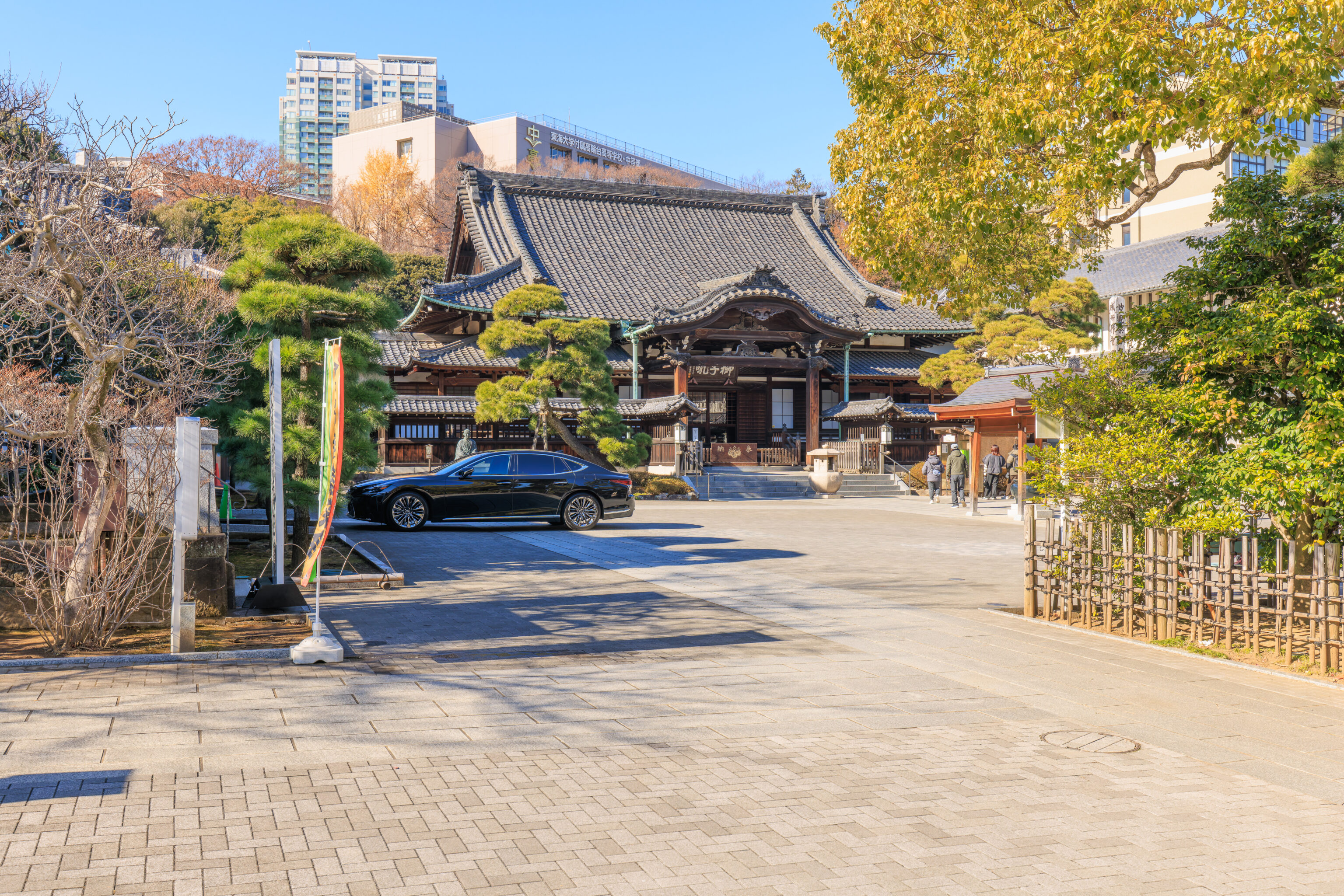
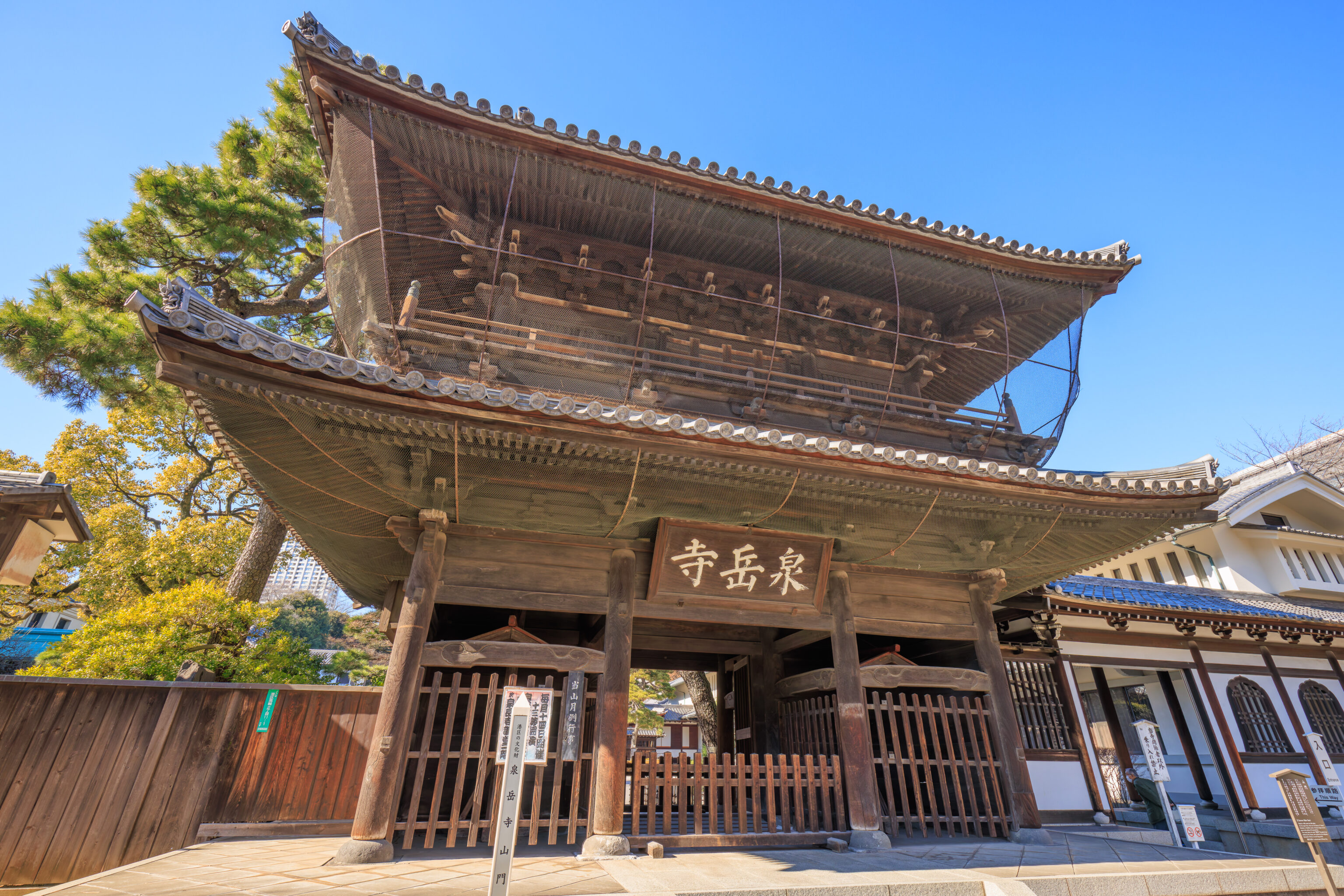
After placing all the incense, we headed out. Visiting Sengaku-ji was definitely a different experience from most Japanese temples as there was a participatory element that isn’t really present during a normal visit to a temple.
Happo-en
We started to walk towards 八芳園 Happo-en, a garden to the west of Sengaku-ji.
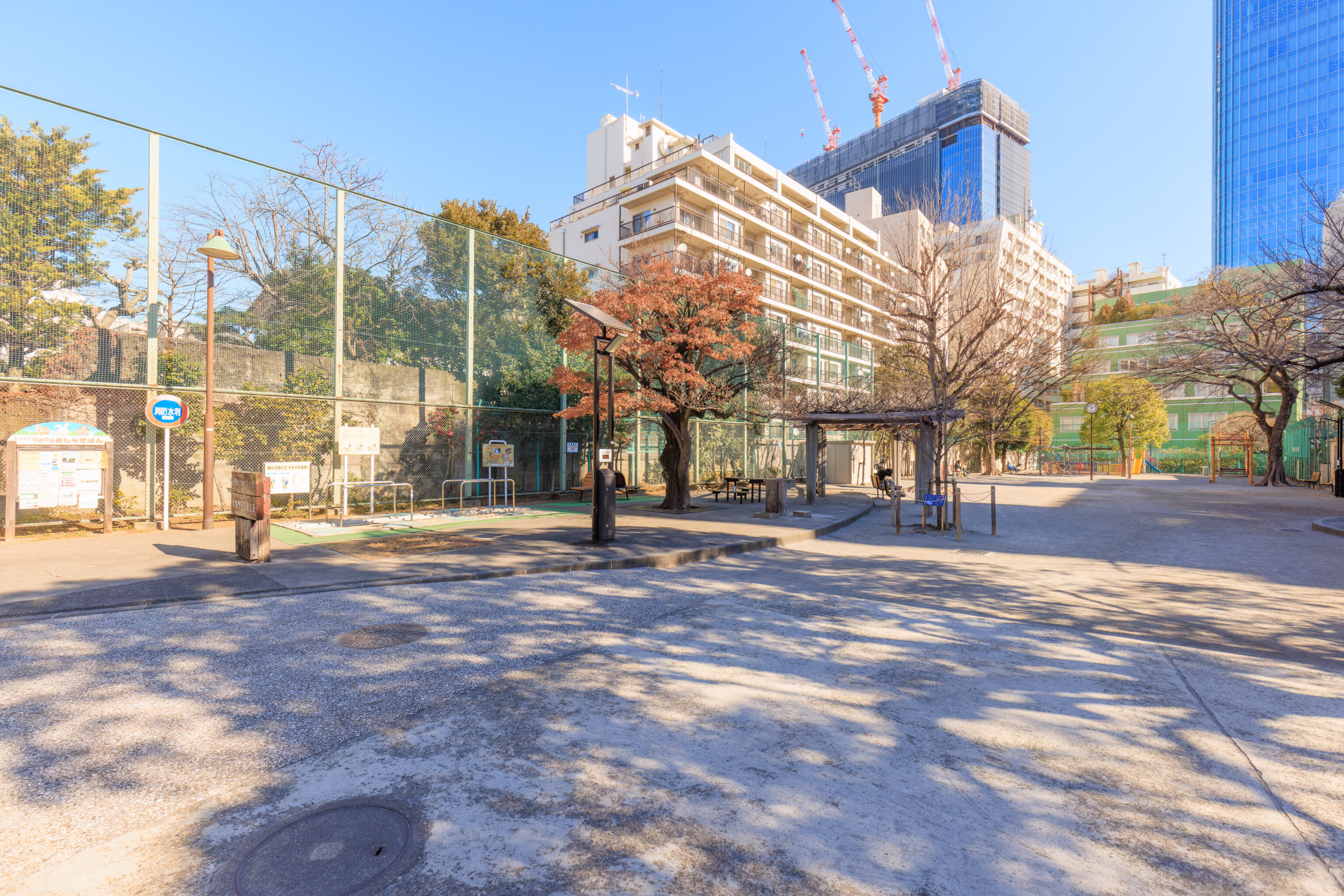
We walked by a small local park which had some playground equipment.
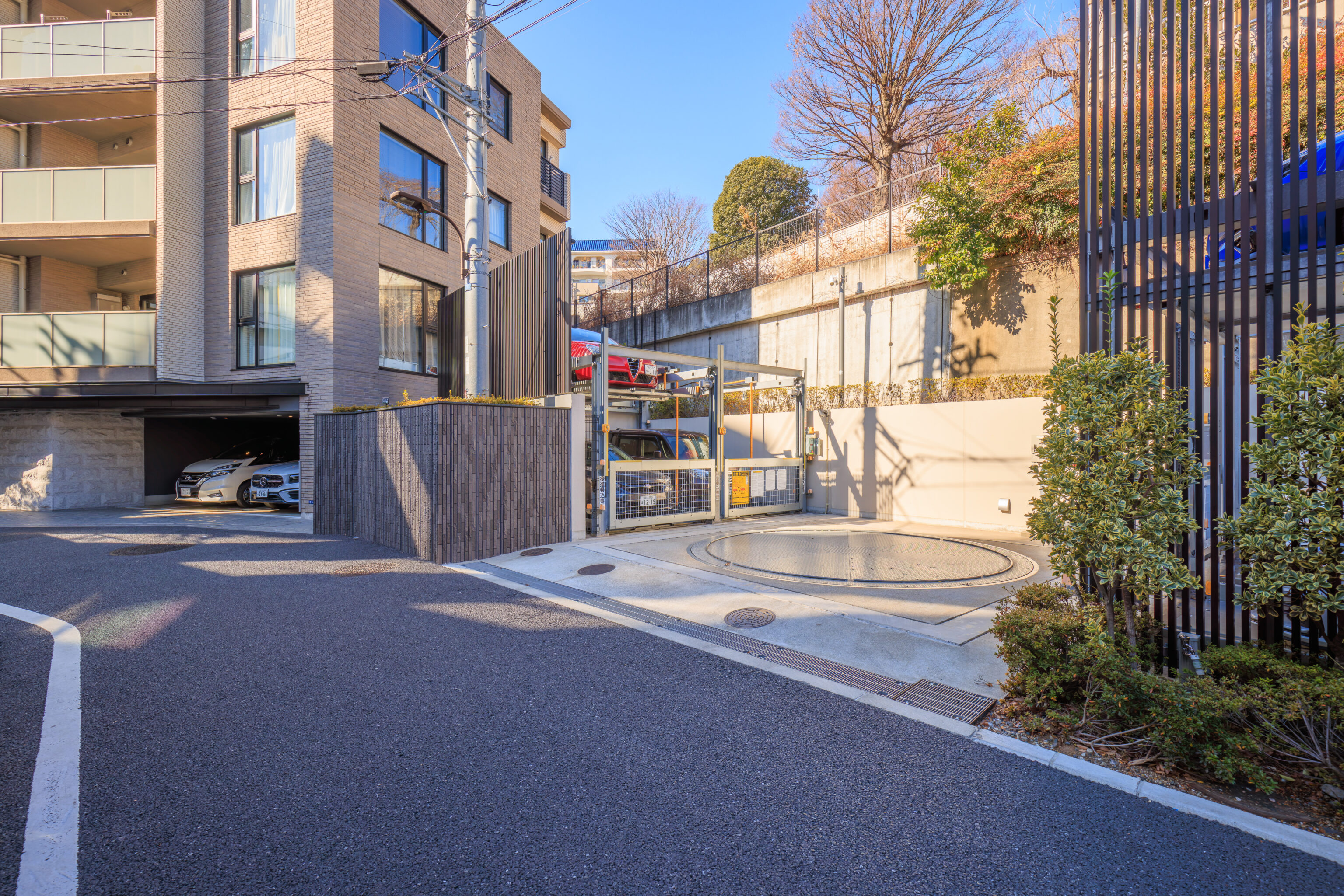
We passed by a tiny parking lot with what looks like a turntable and vehicle lifts.
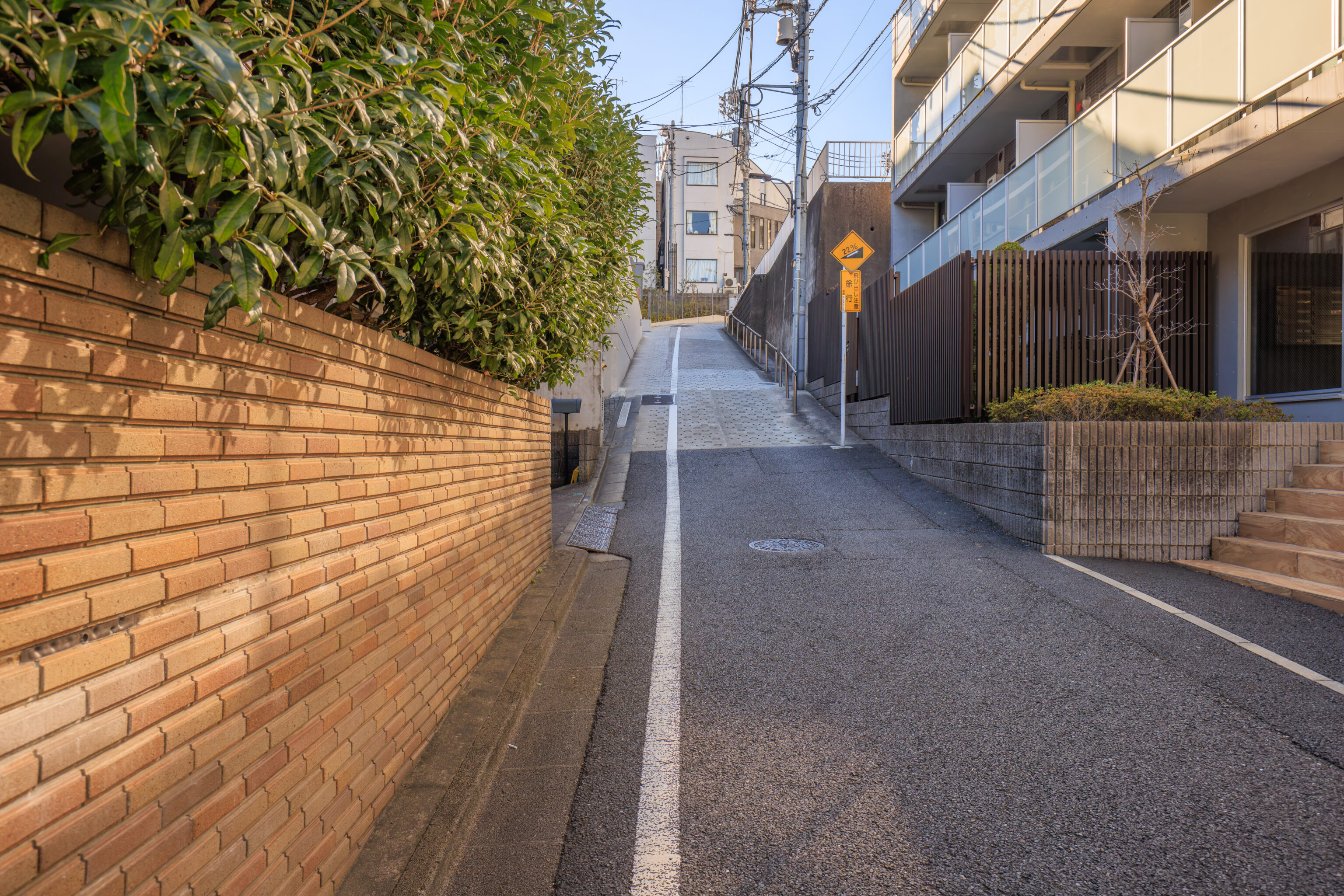
The path to Happo-en started through a residential neighborhood with some narrow streets. We started to walk uphill not far from Sengaku-ji.
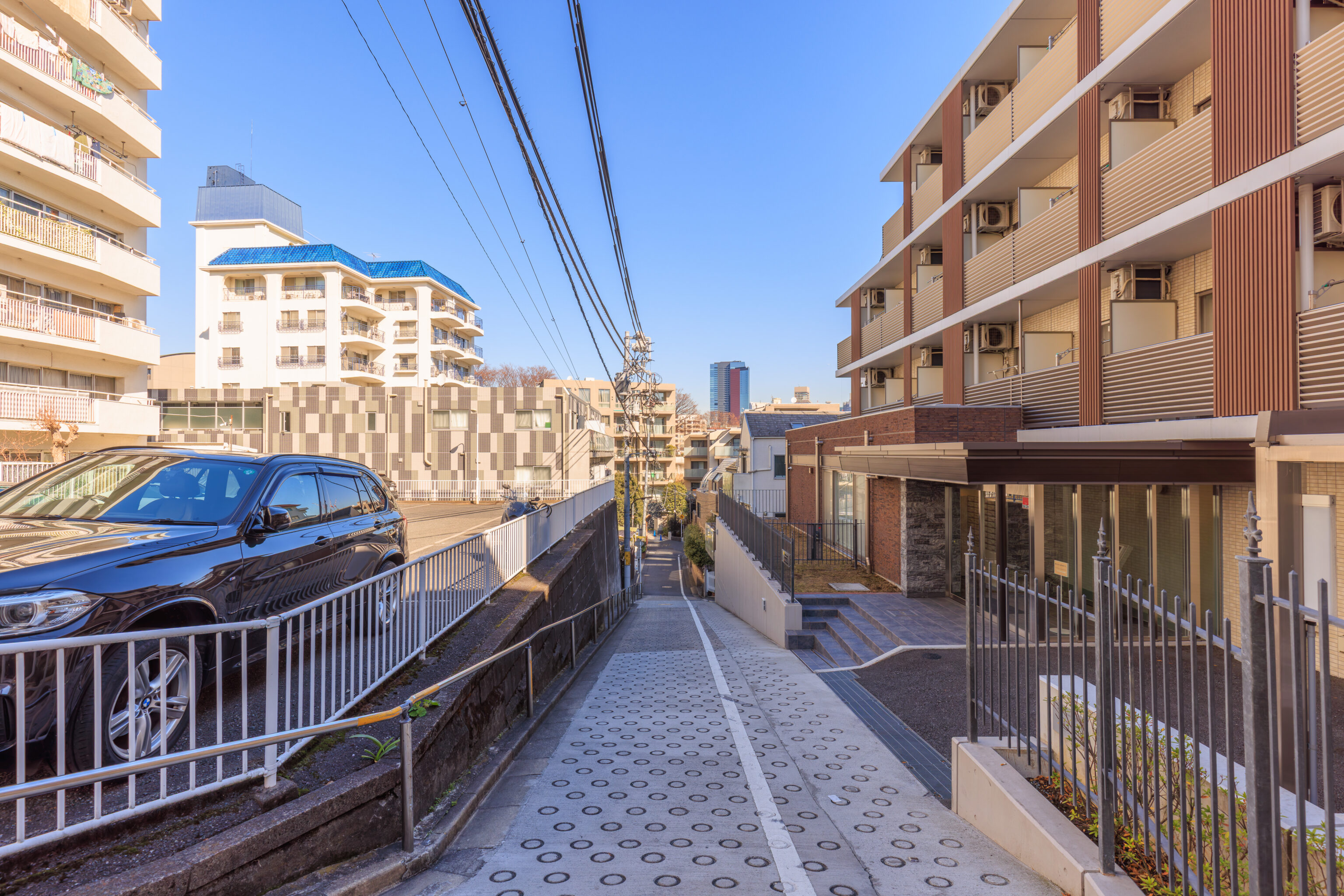
The view from the top of the hill.
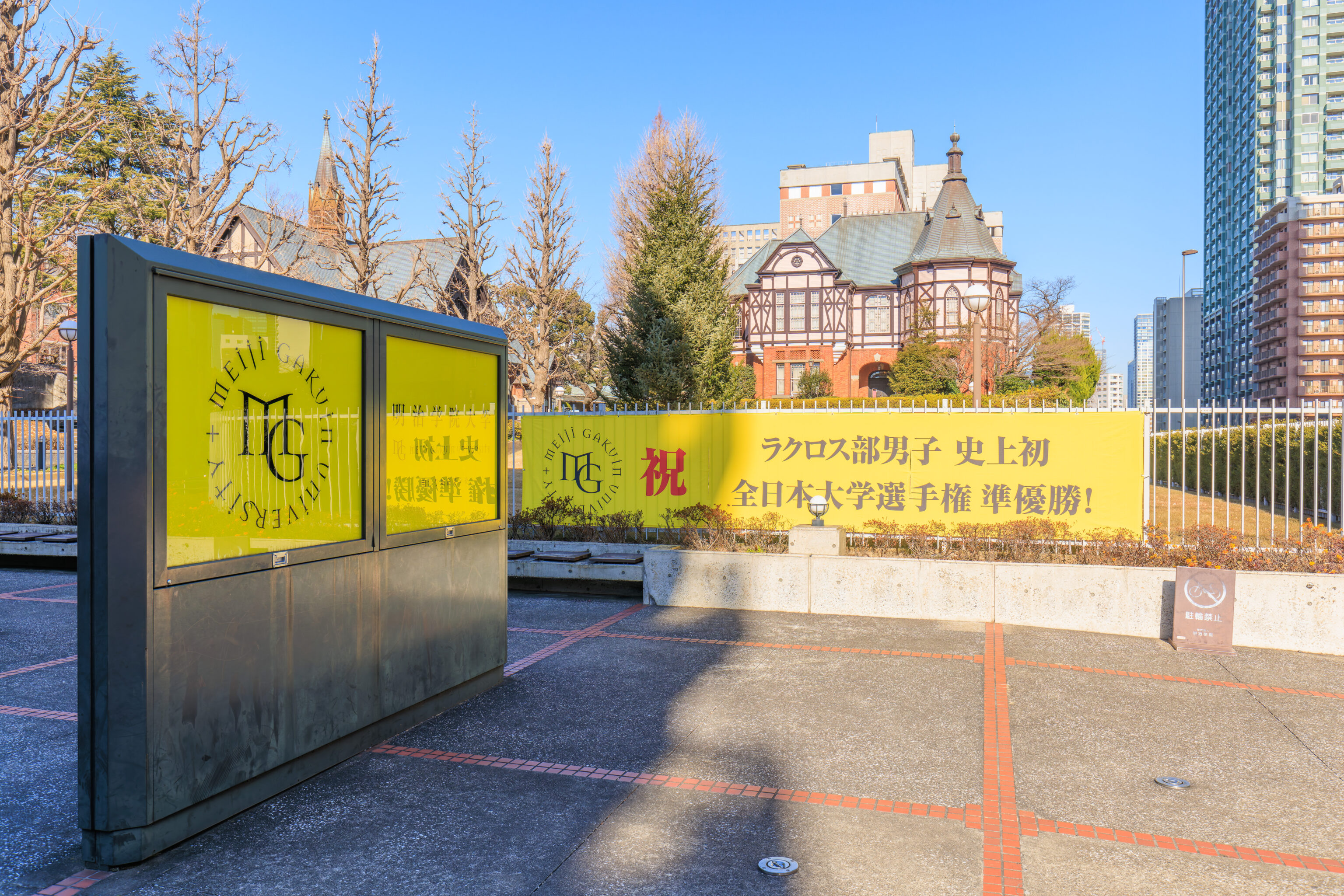
We soon reached a larger road and came upon the 明治学院大学 Meiji Gakuin University, a Christian school. This western looking building houses the 明治学院歴史資料館 Meiji Gakuin Historical Museum.
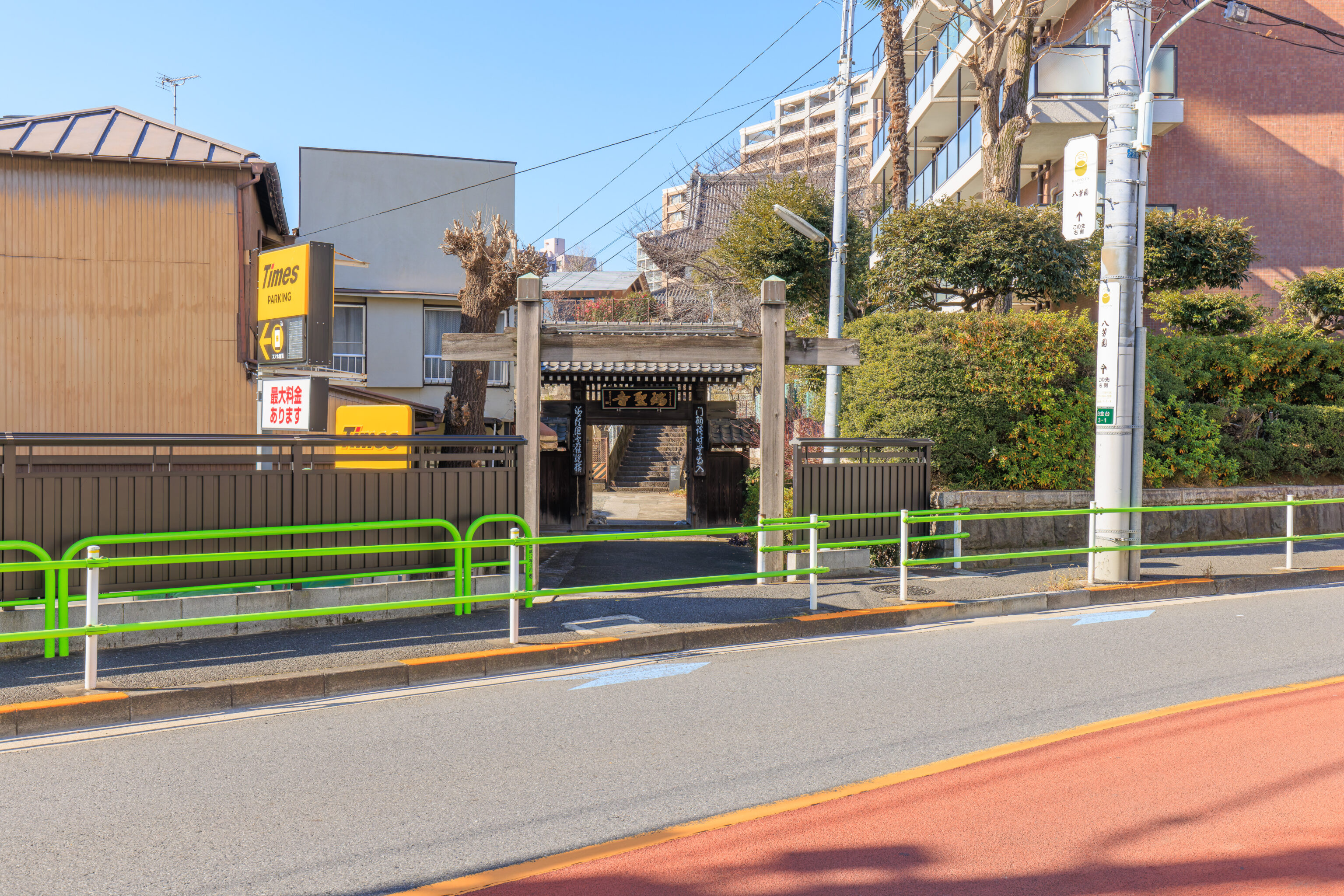
We passed by a small side gate that leads into 瑞聖寺 Zuisho-ji, a Zen Buddhist temple.
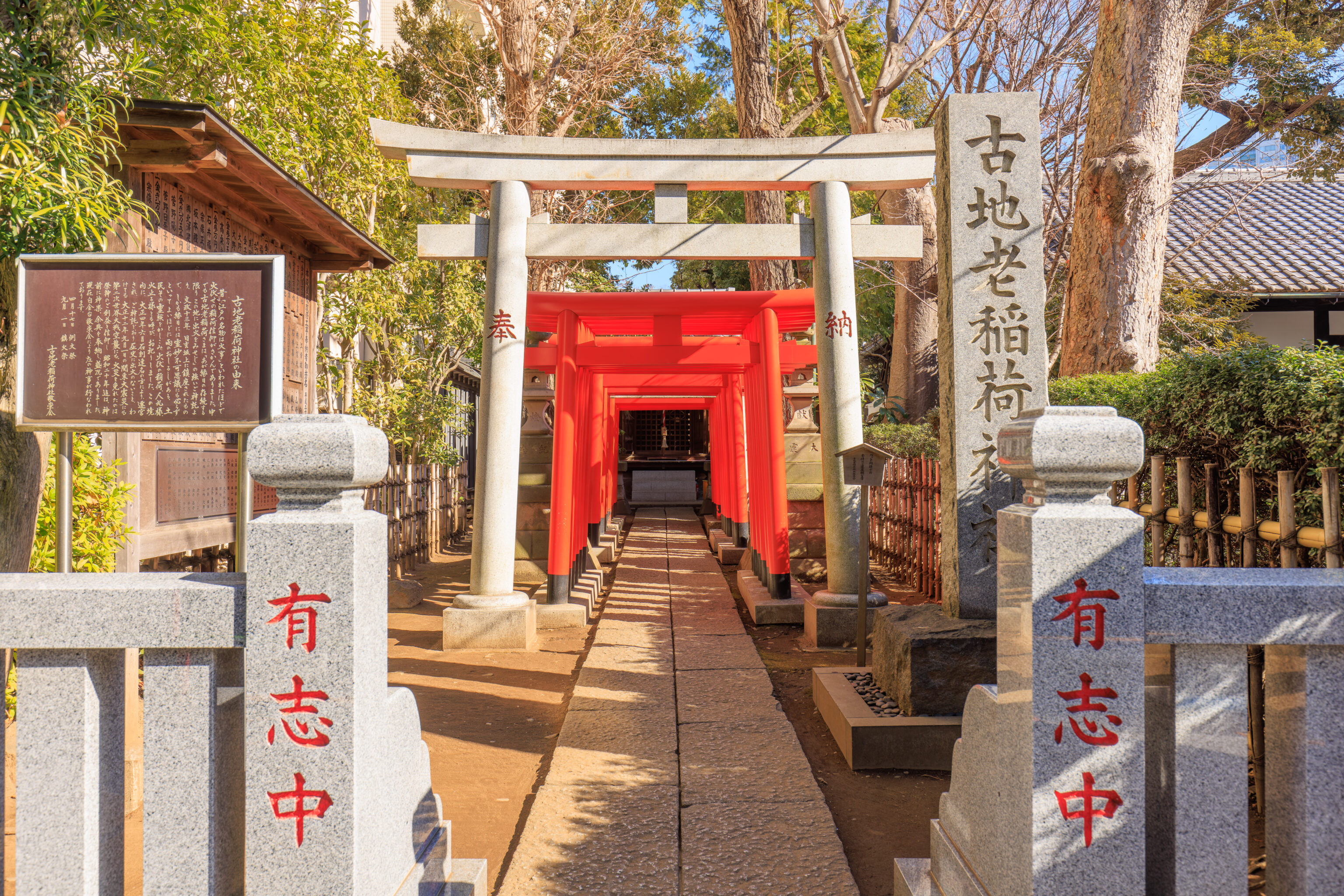
We came upon 古地老稲荷神社 Kojiro Inari-jinja, a small Shinto shrine, by the entrance to Happo-en.
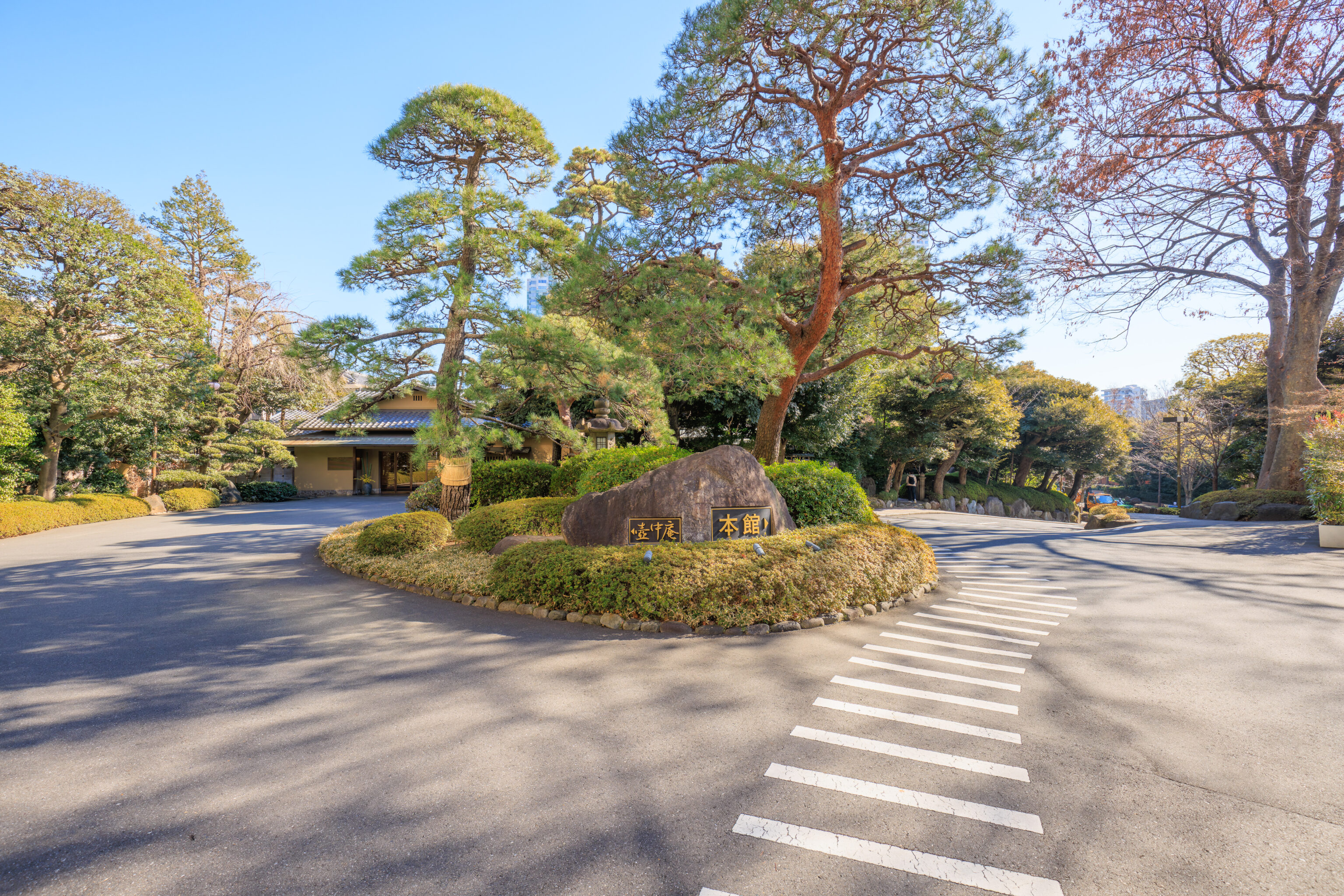
Happo-en is a garden that contains restaurants and a wedding venue. There is conflicting information about if it is really open to the general public. Most sources indicate that one can visit for free but the official stance seems to be that entry is only permitted if you are a paying guest at one of their facilities. However, there wasn’t any enforcement of this policy and they seemed OK with tourists being present, which is what online sources say.
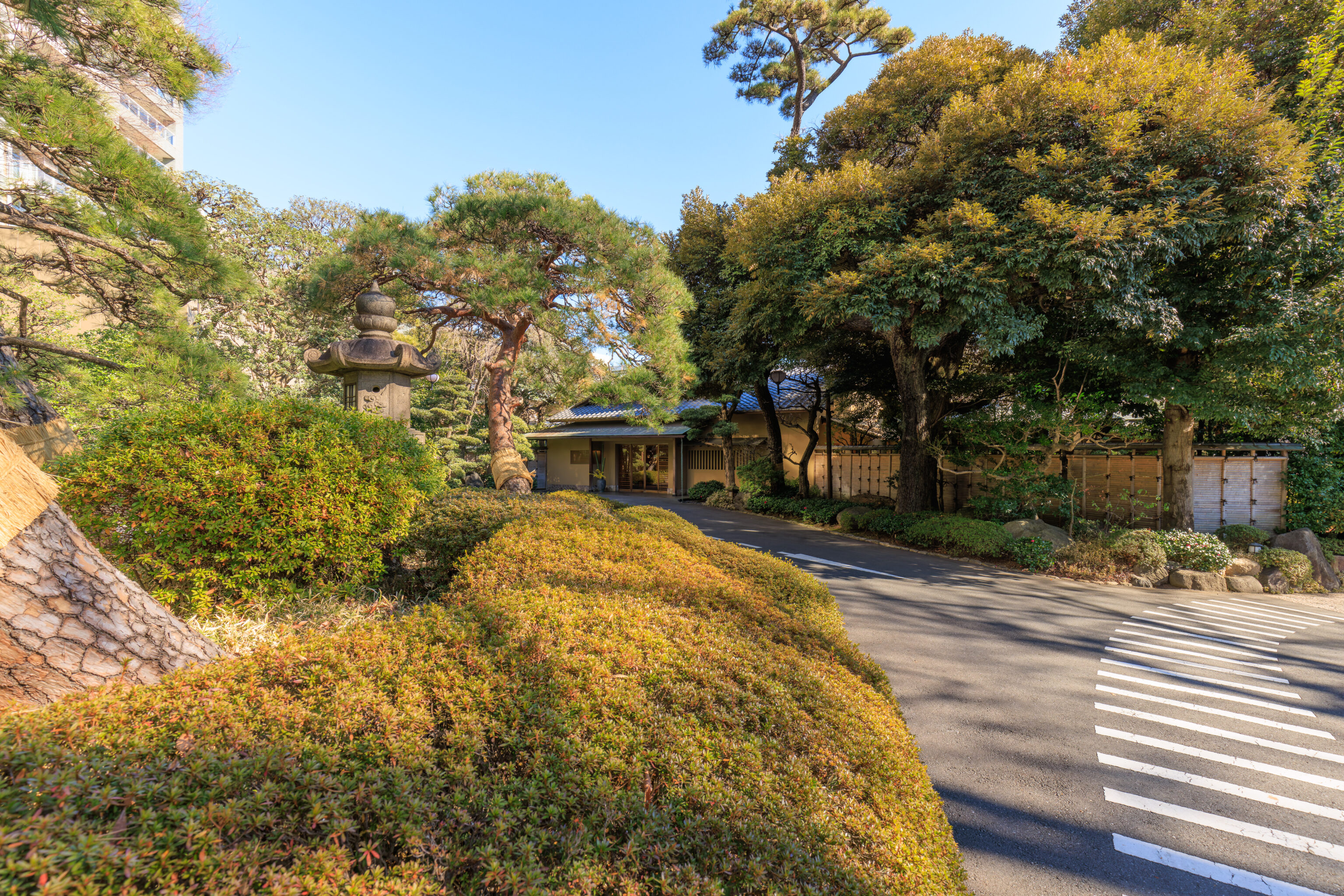
We, along with another visitor, did accidentally go thorough a gate somewhere near here that was left open by a maintenance worker.
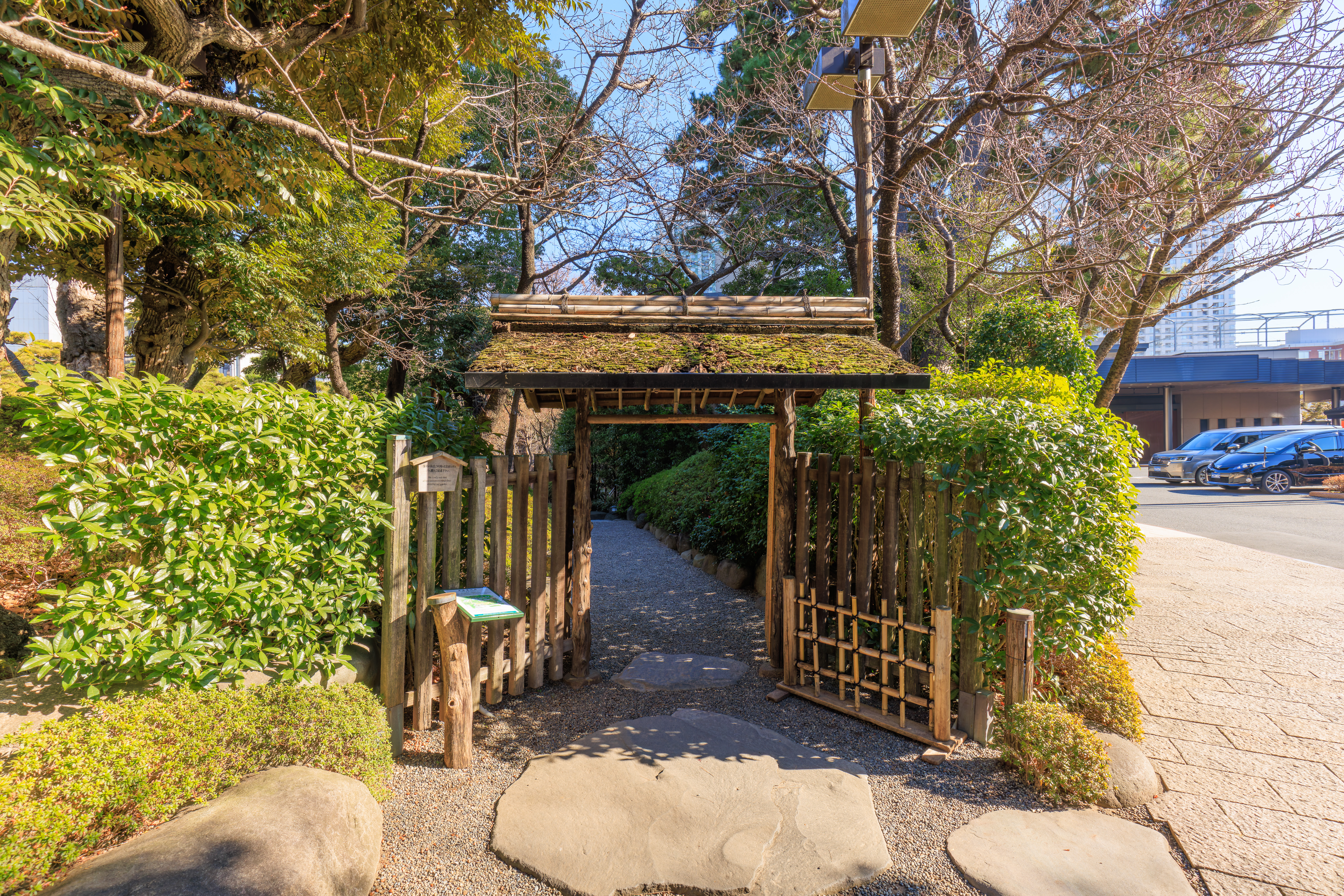
This is the actual entrance to the garden area.
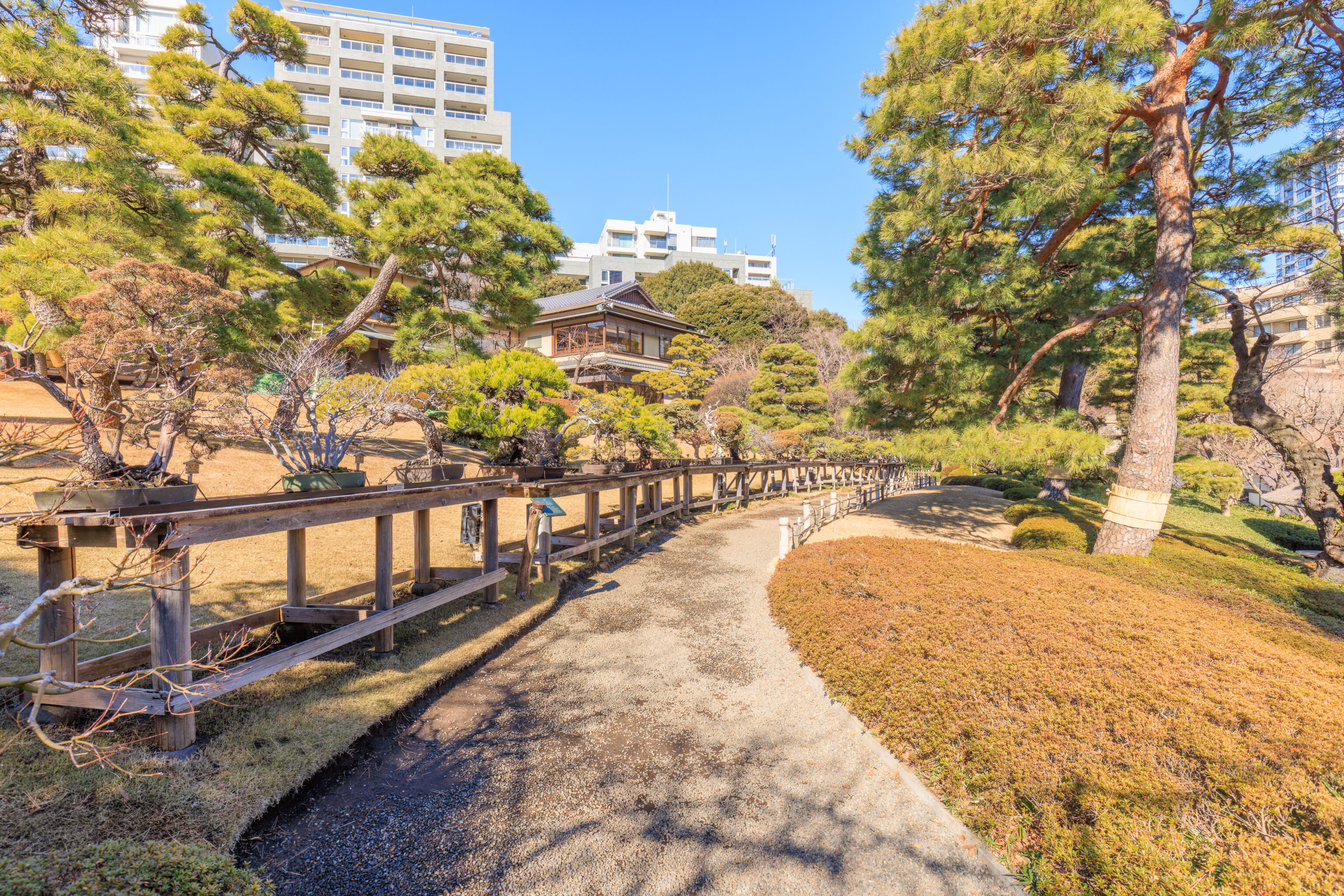
After entering the garden, we started to walk through clockwise. We came across a line of bonsai.
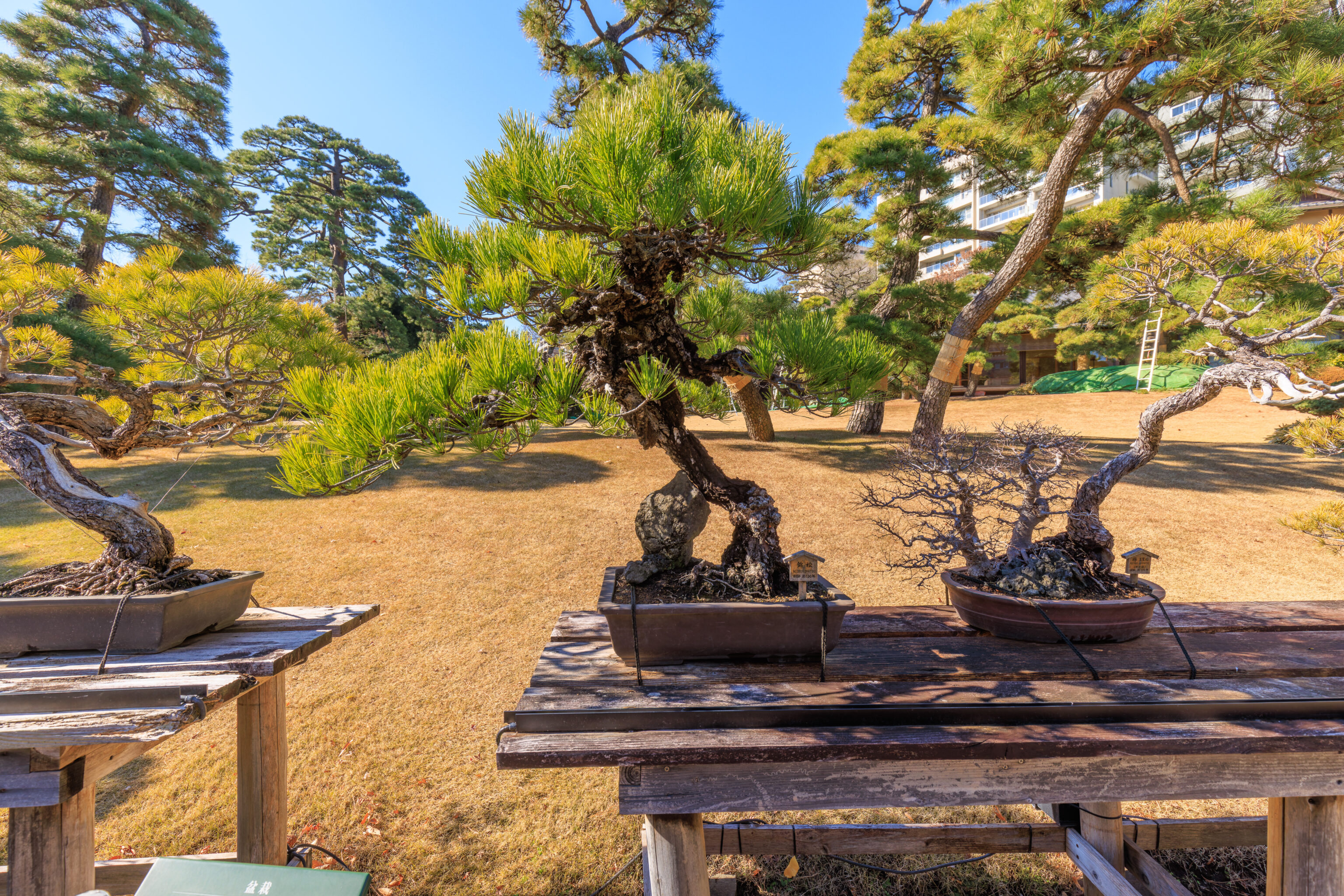
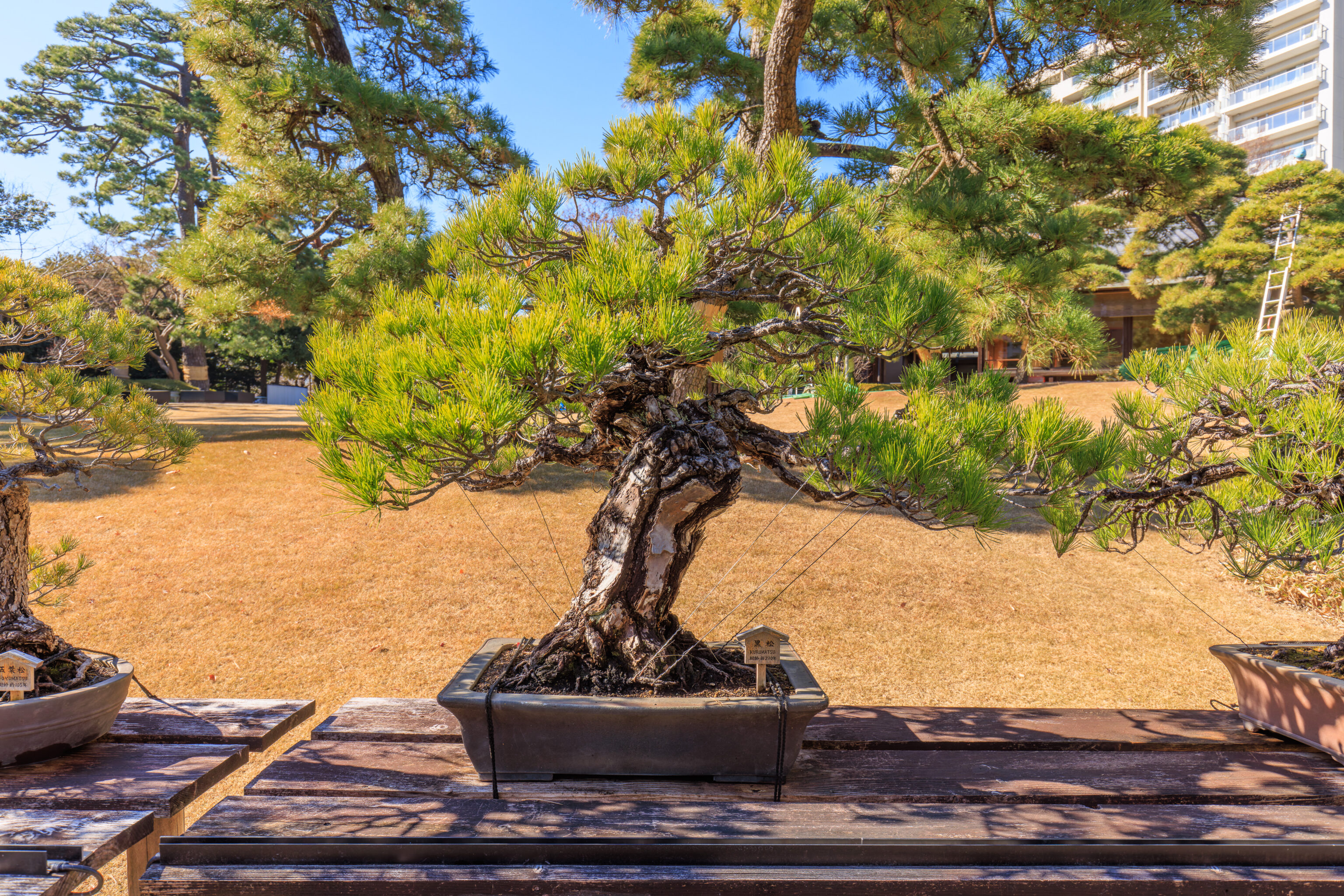
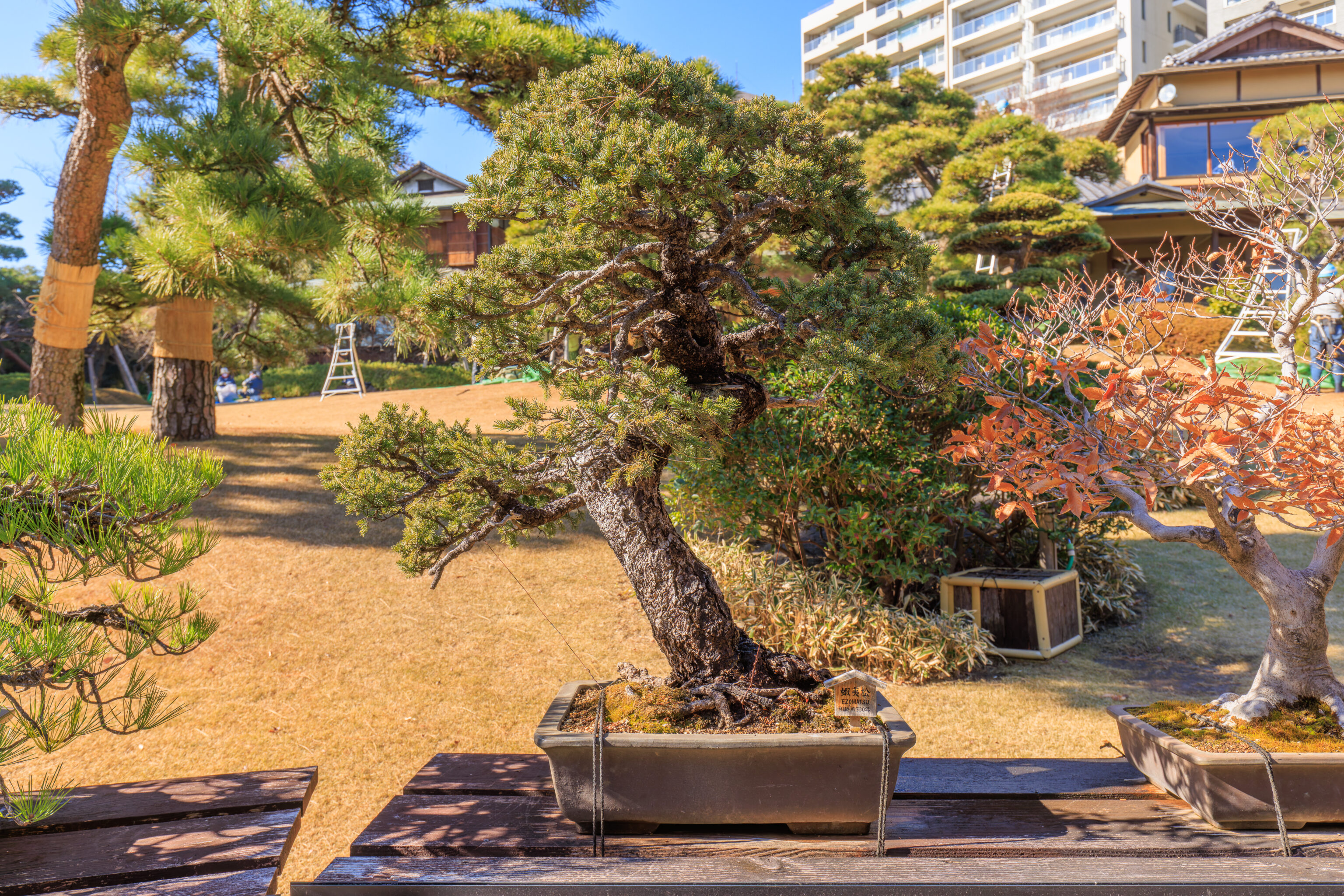
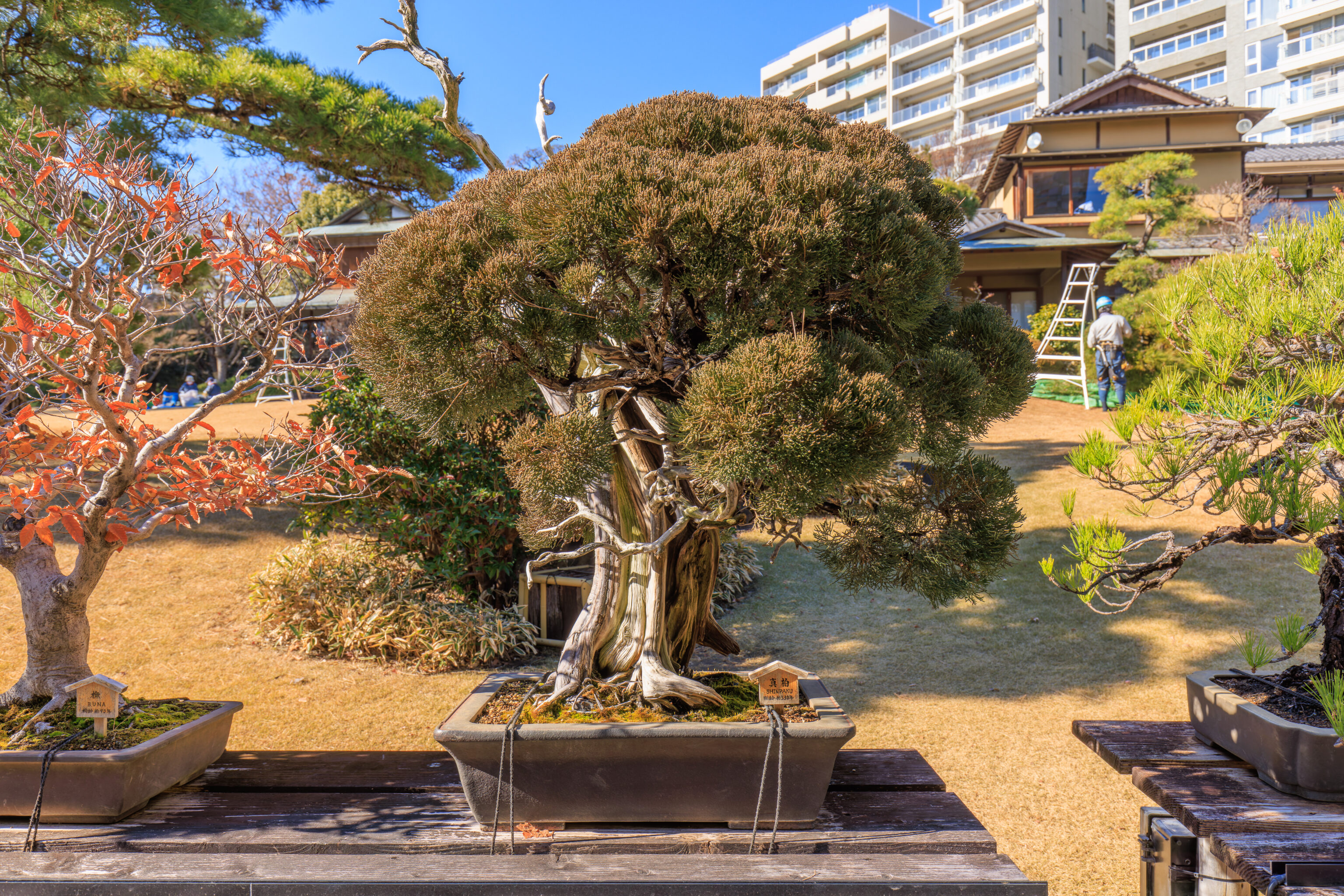
The tiny little signs at the base of each bonsai indicate their approximate age. The last two were the oldest at around 530 years old!
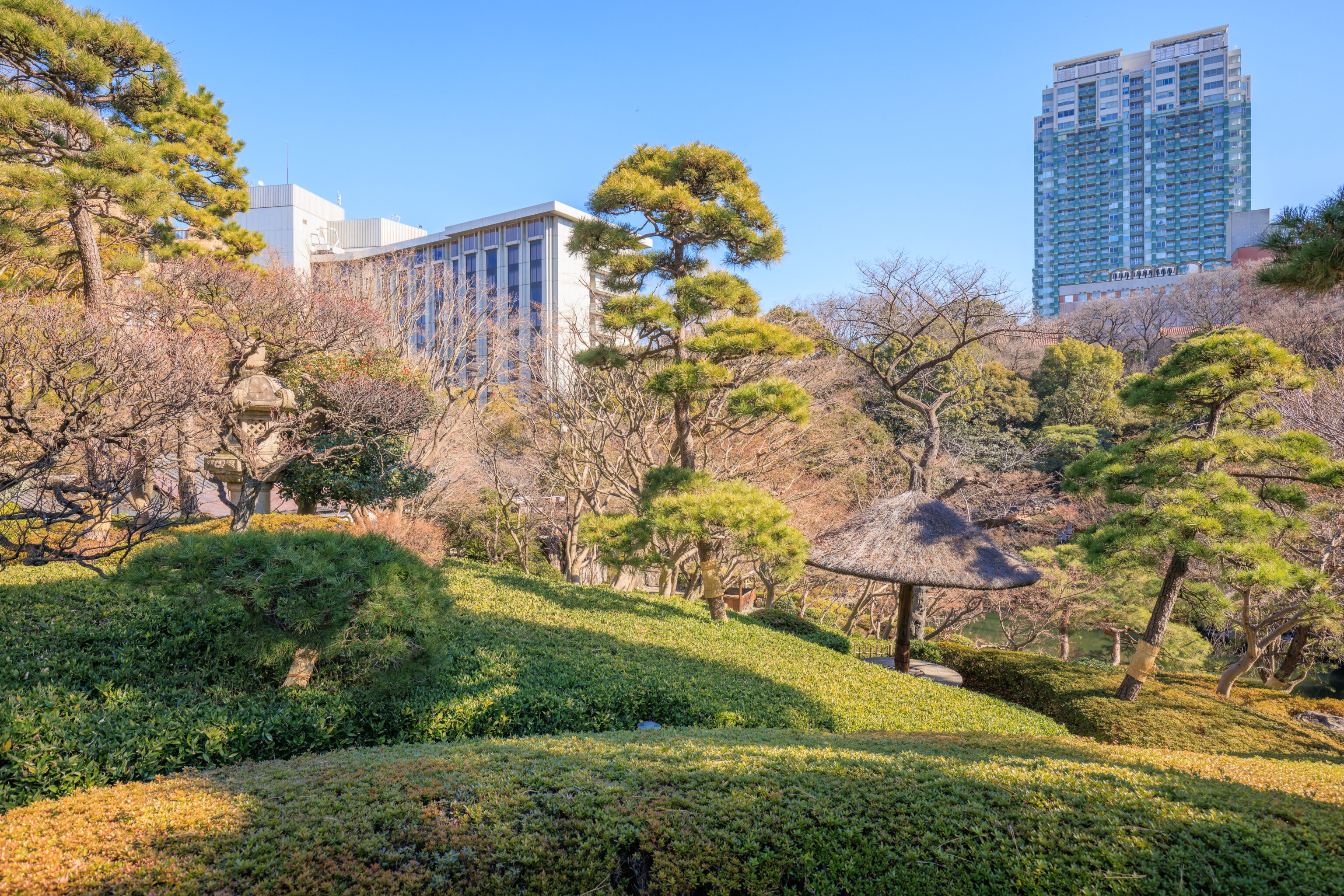
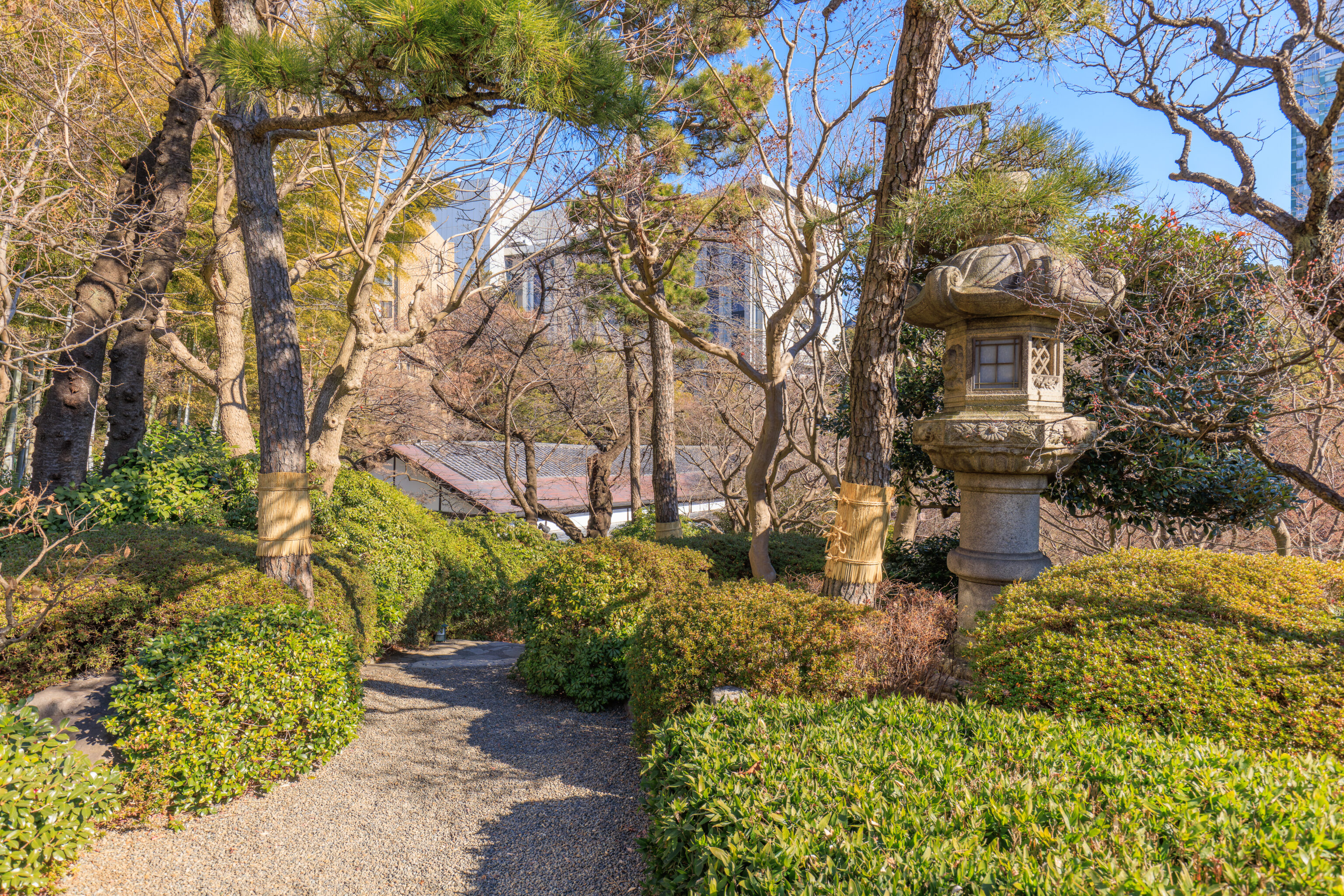
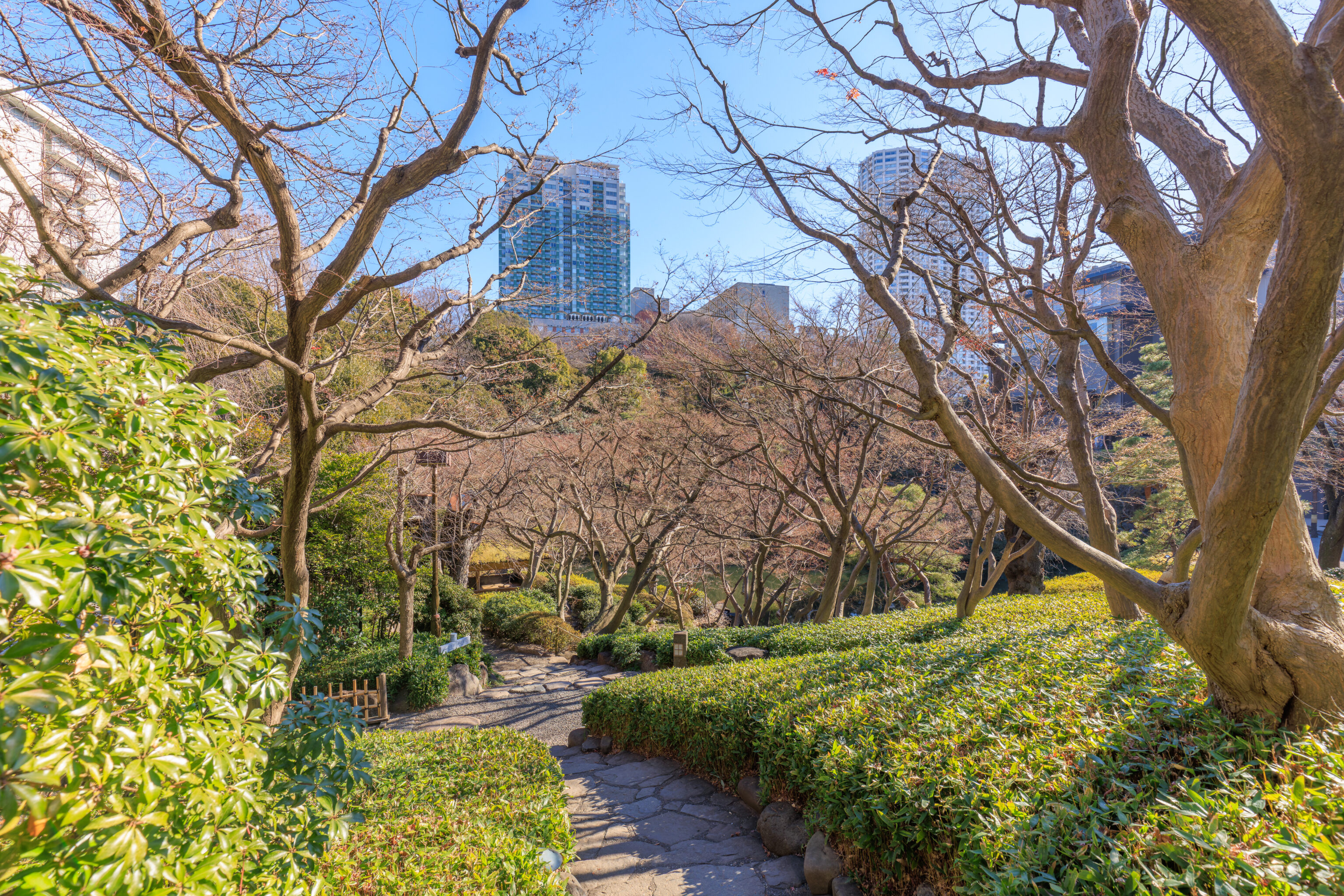
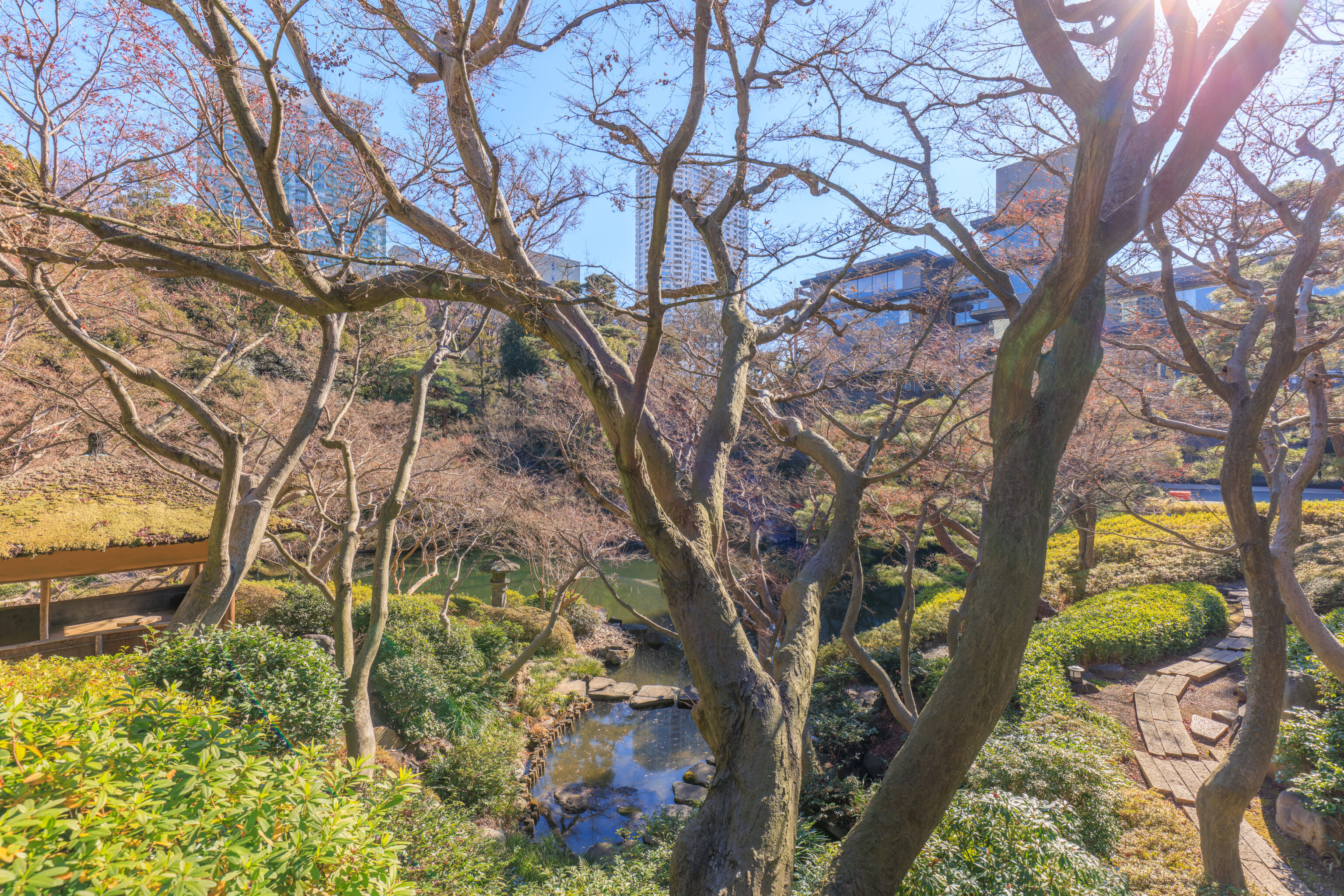
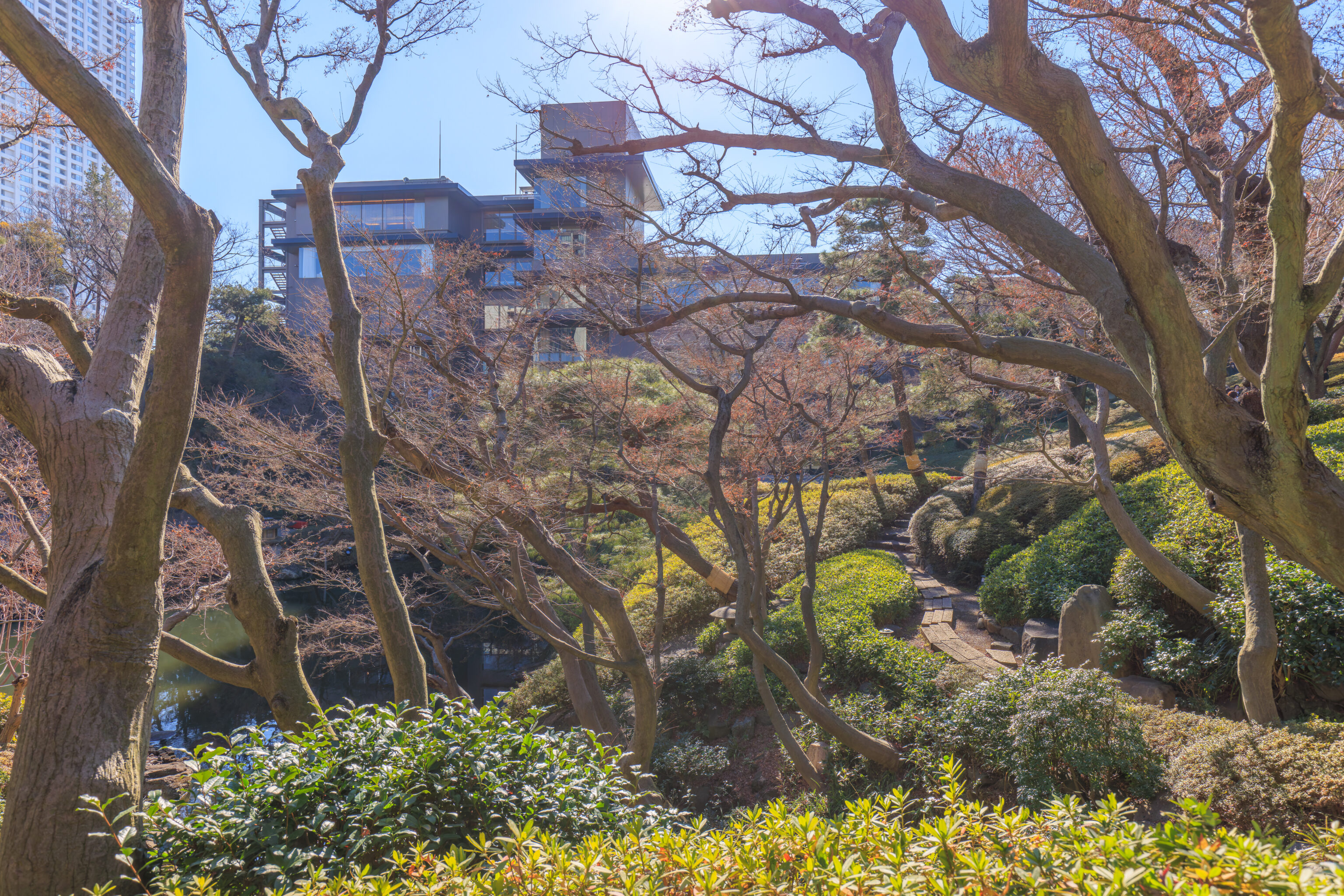
We continued walking through the garden. There are quite a few leafed trees here, meaning the garden probably looks better during the other seasons. We only saw a few other visitors during our visit, although we did see a small group doing a photo session.
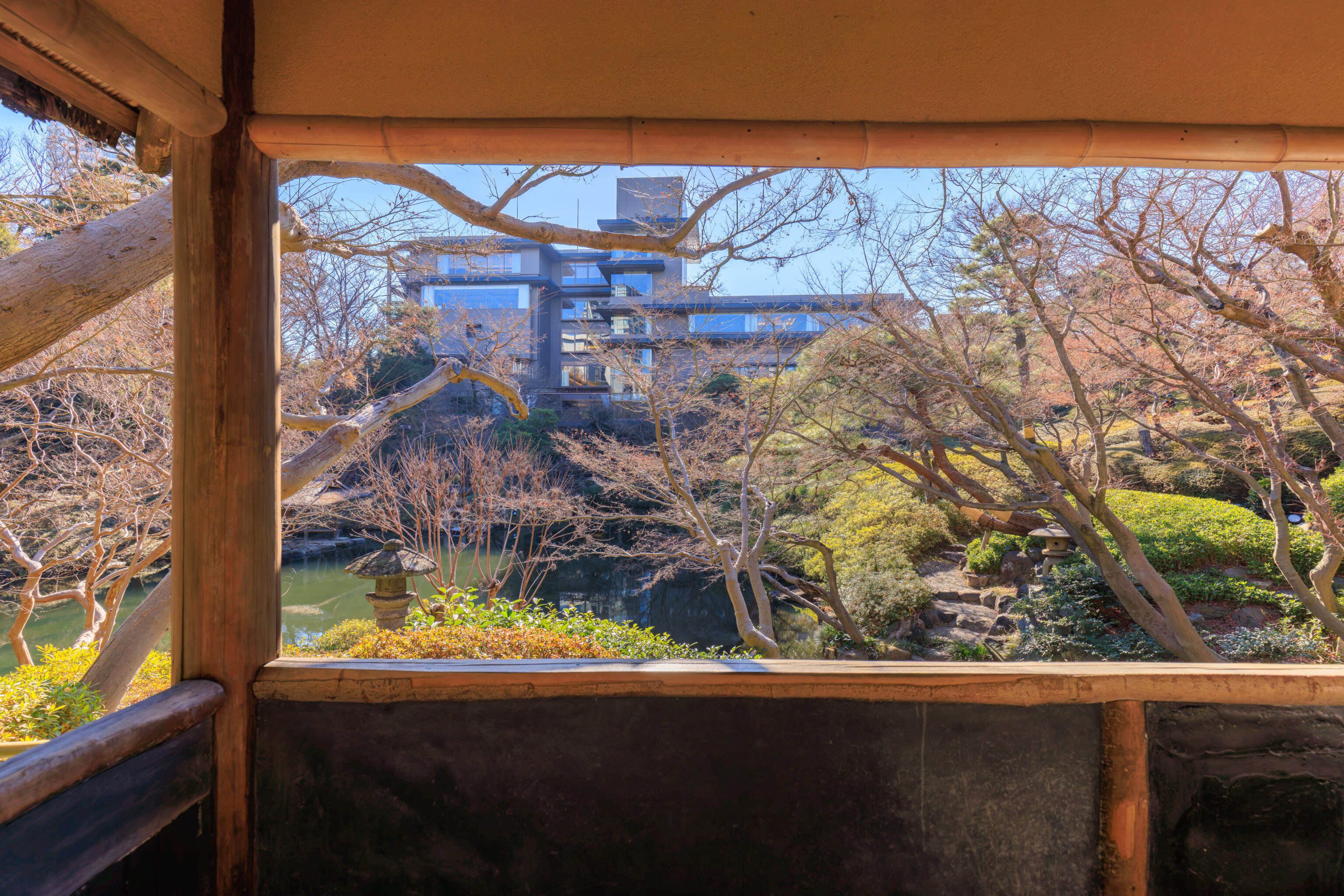
There was a small structure with seating for resting and enjoying the view.
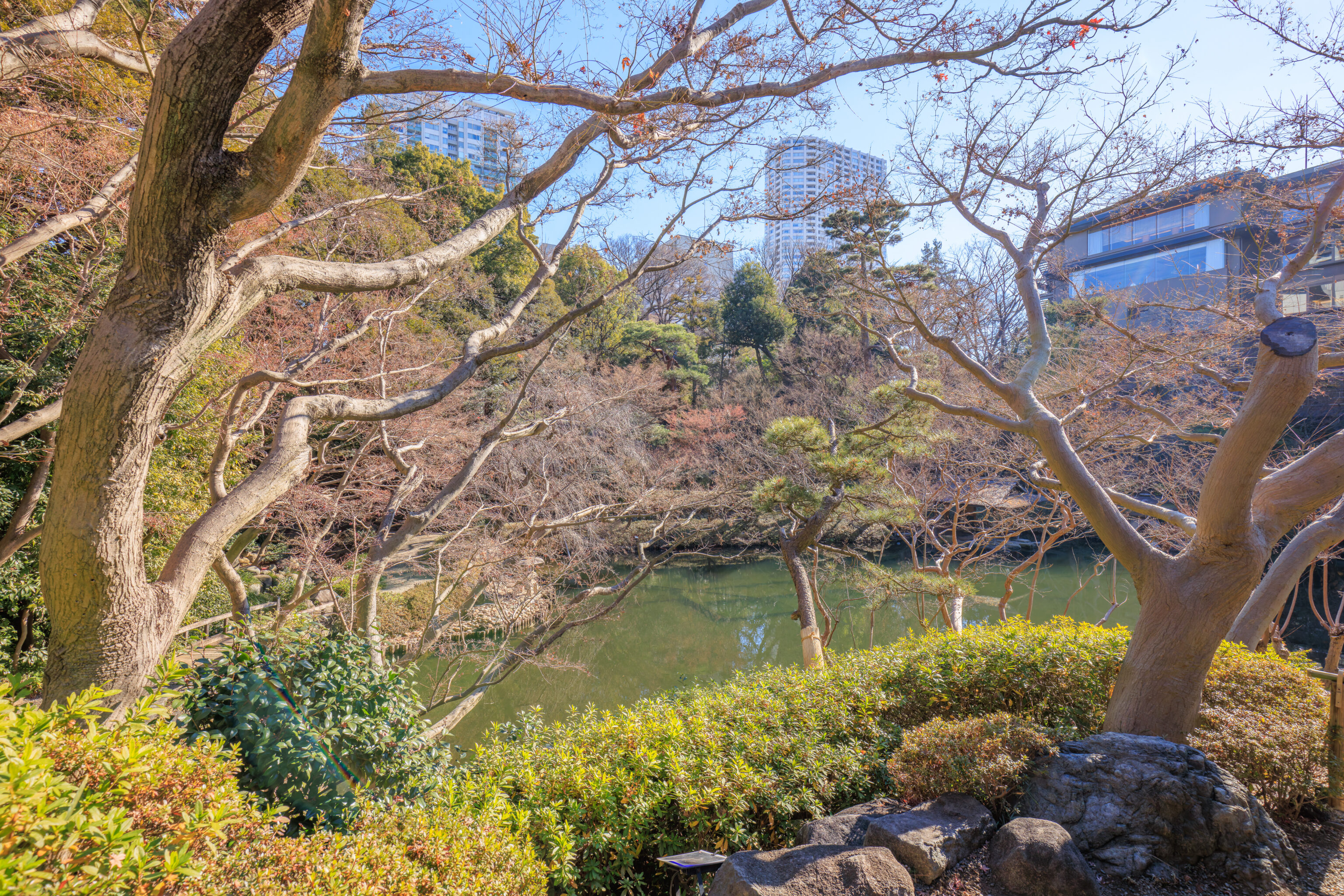
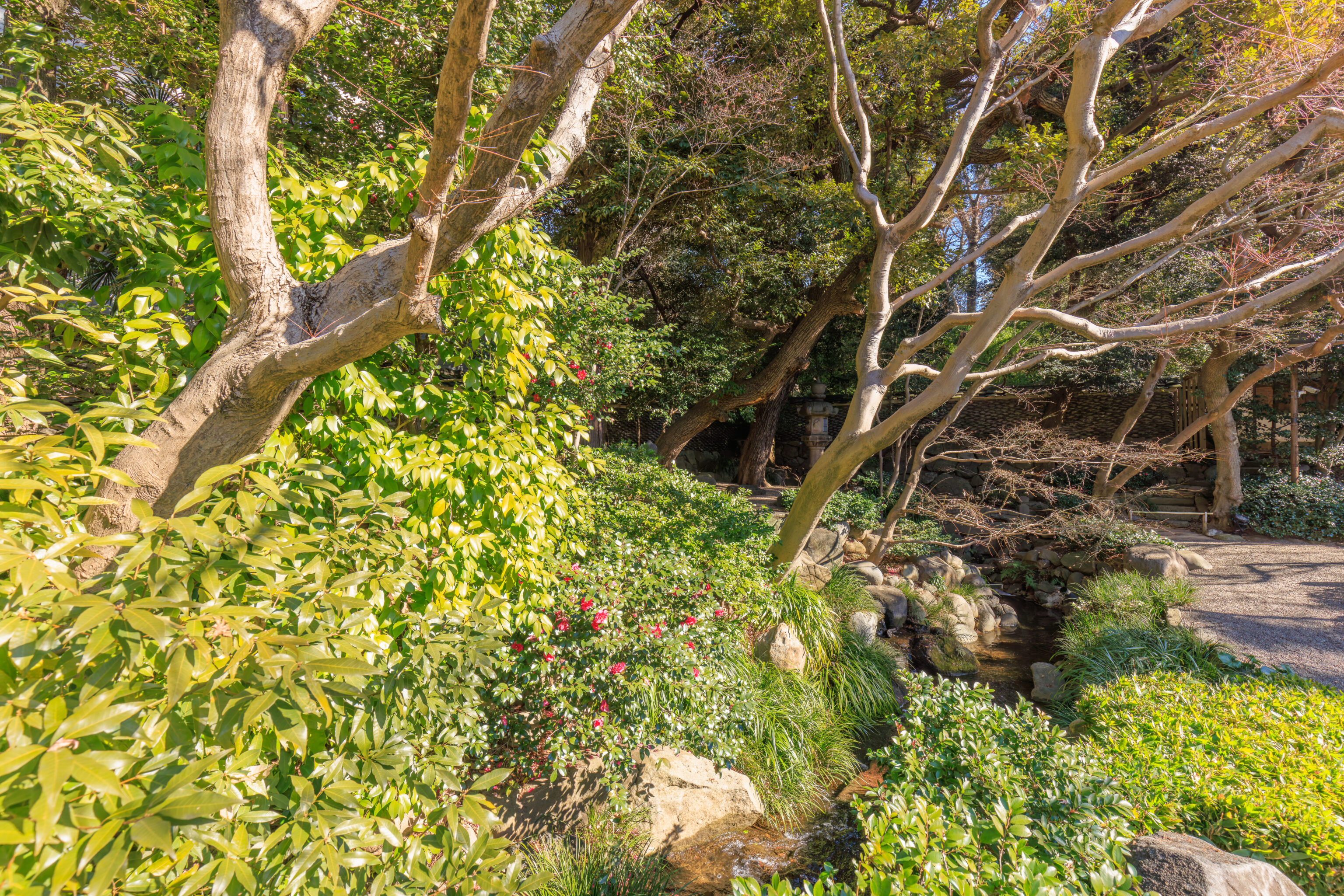
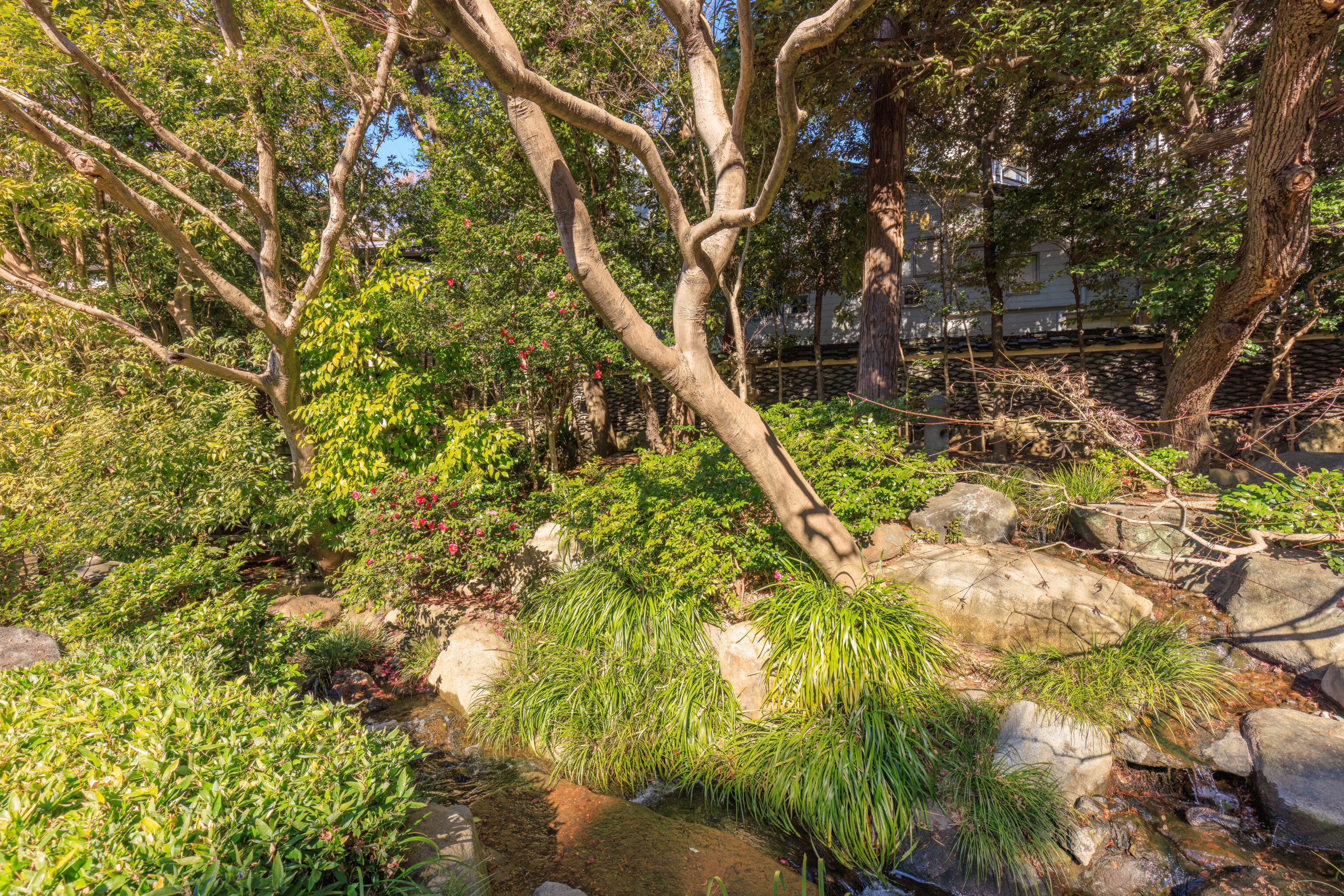
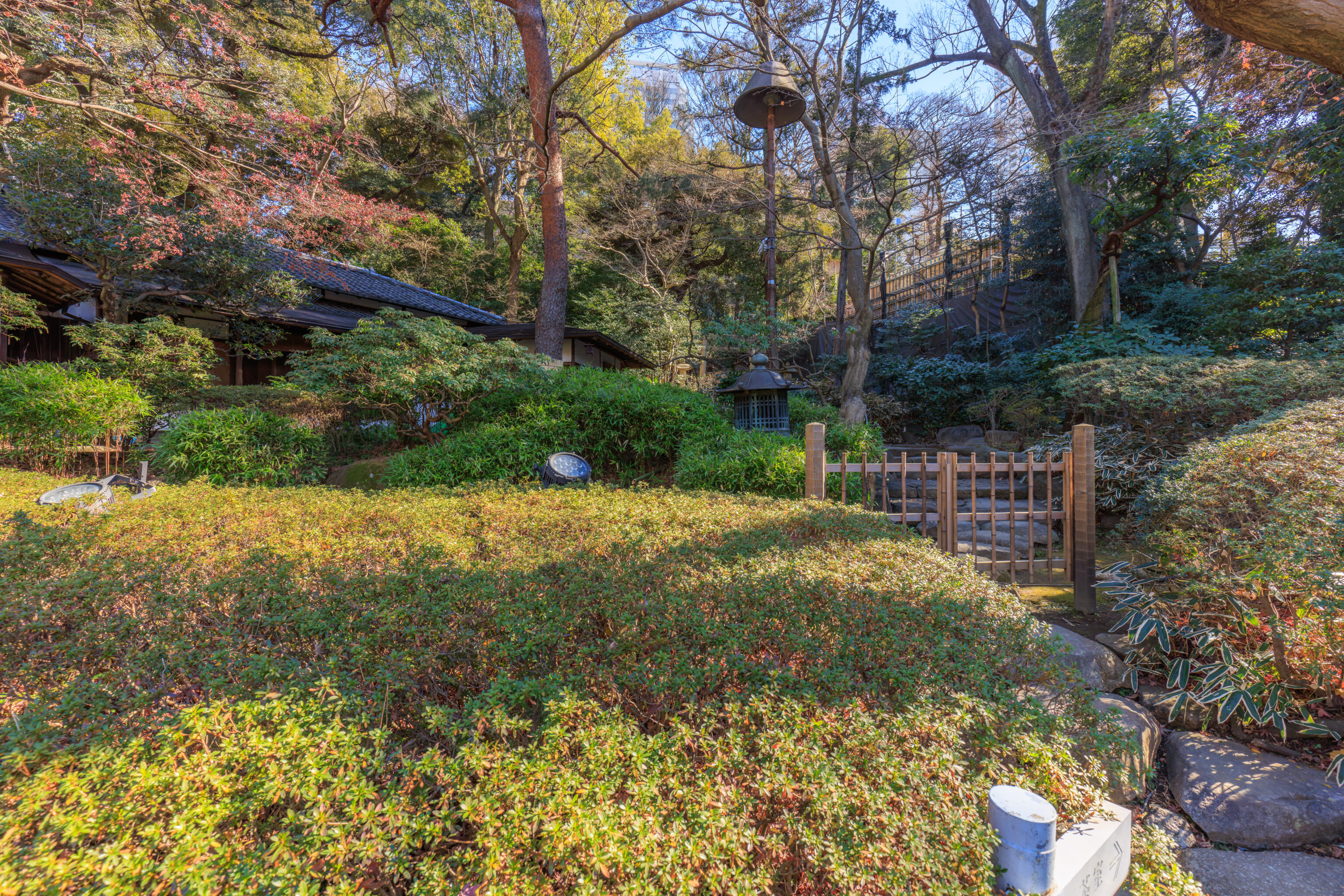
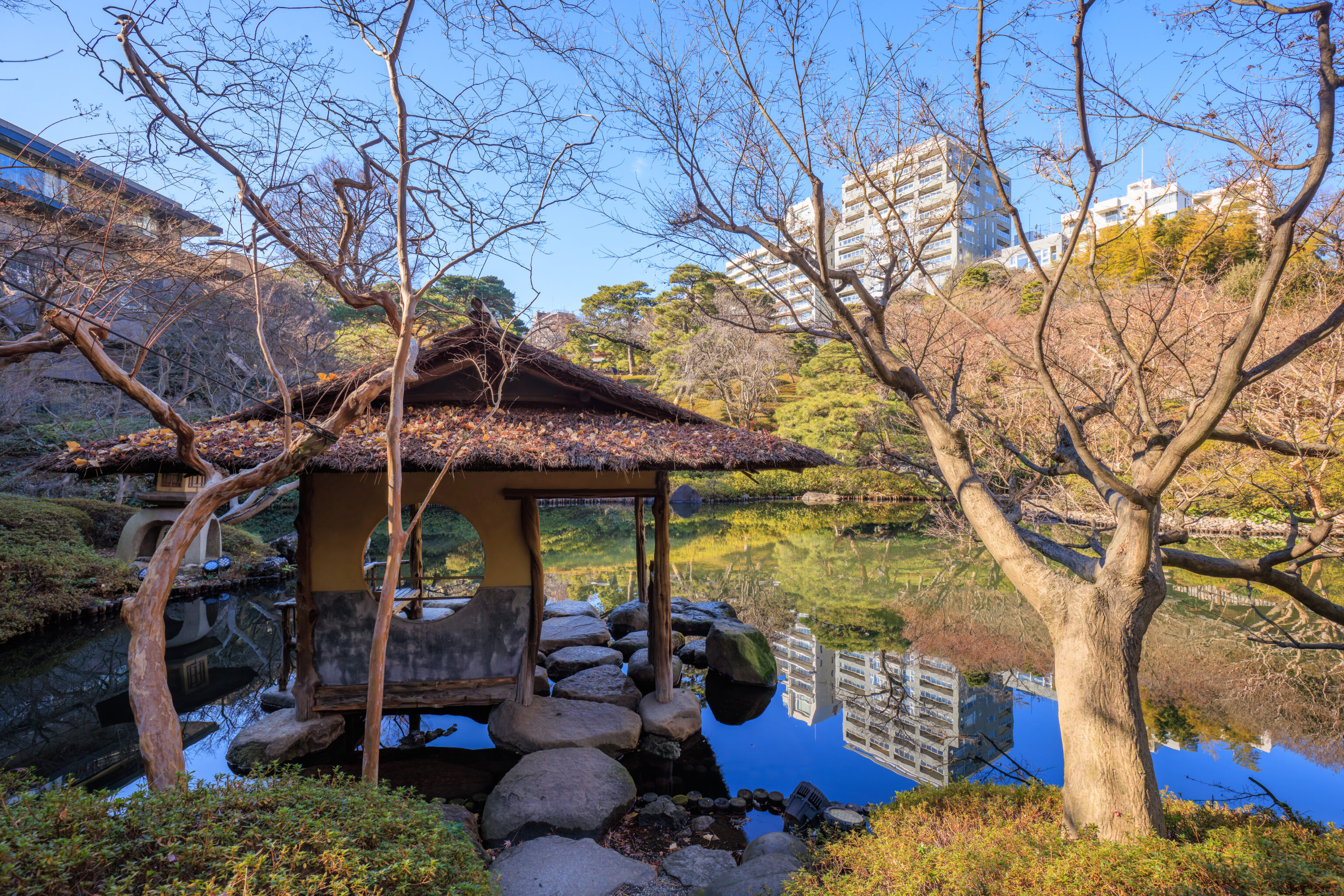
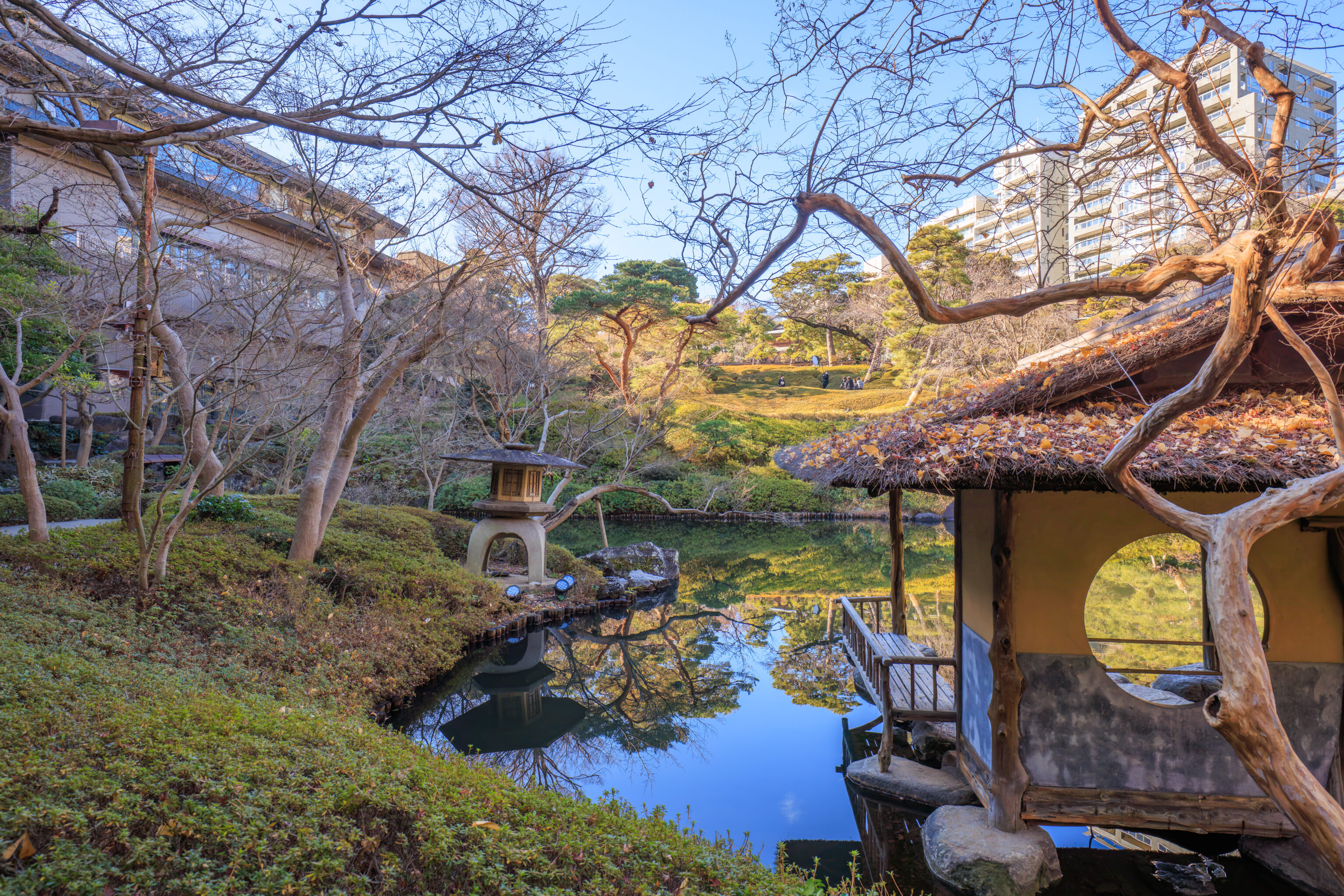
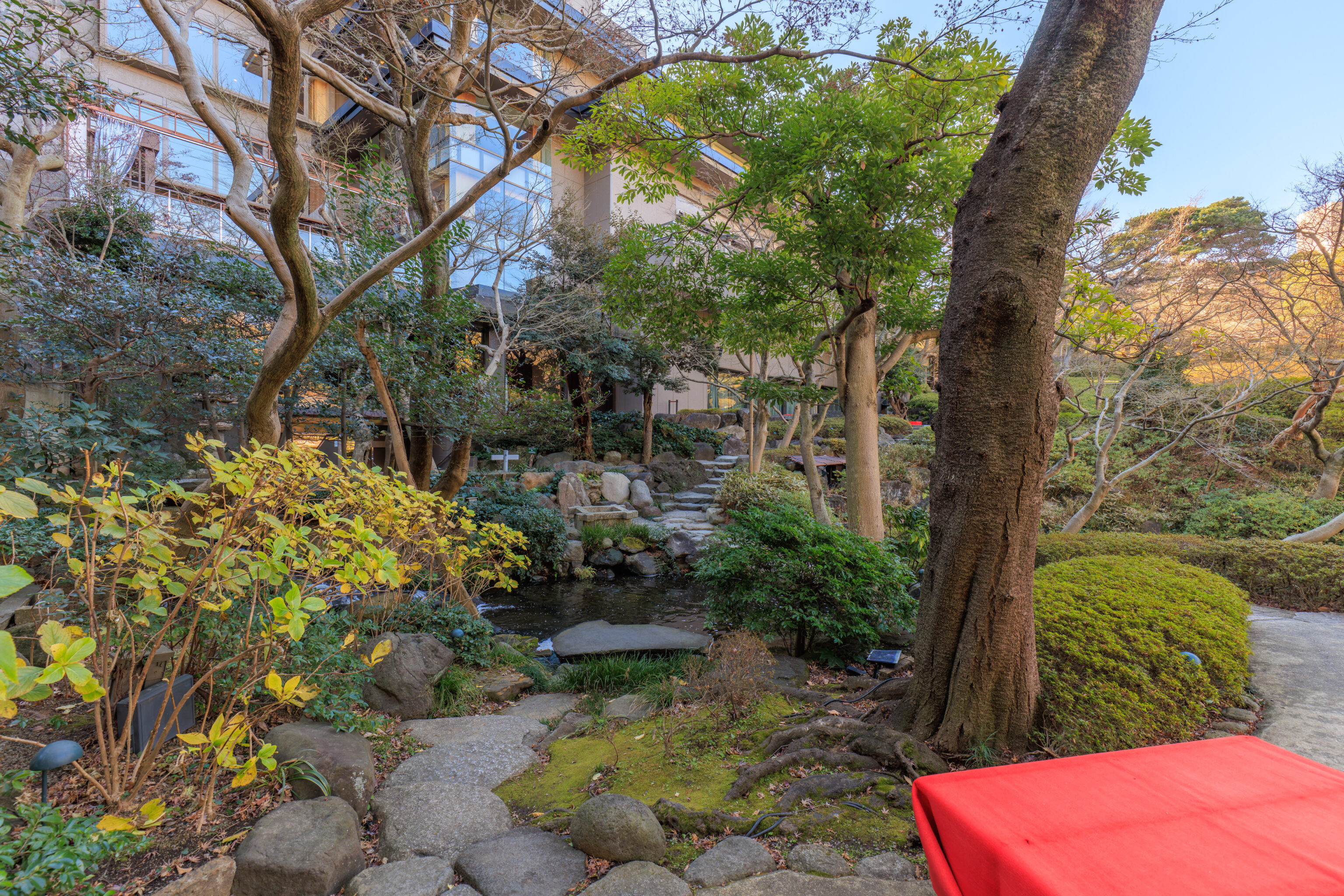
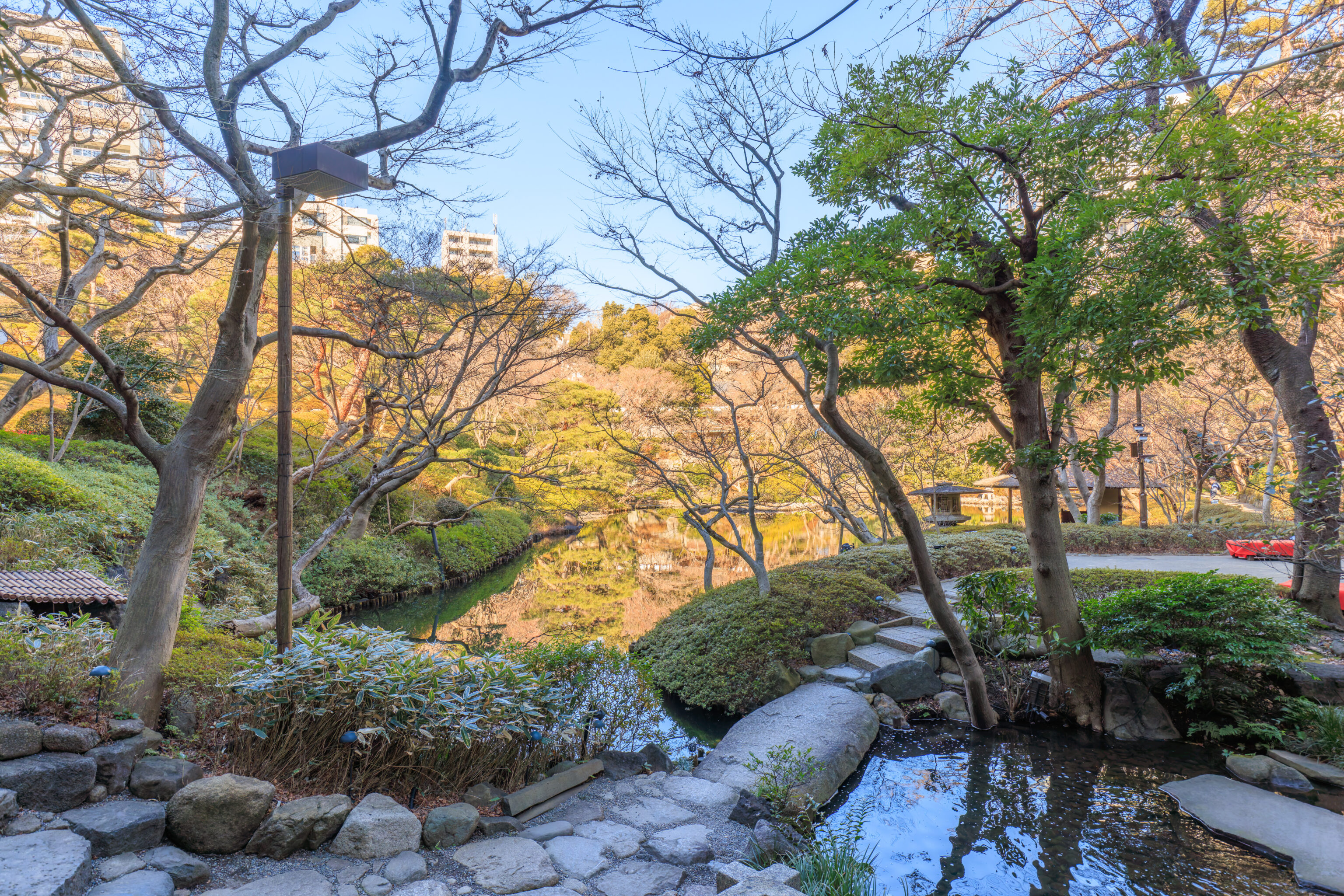
The path descends to a pond and some small streams. There is another covered seating area here by the pond.
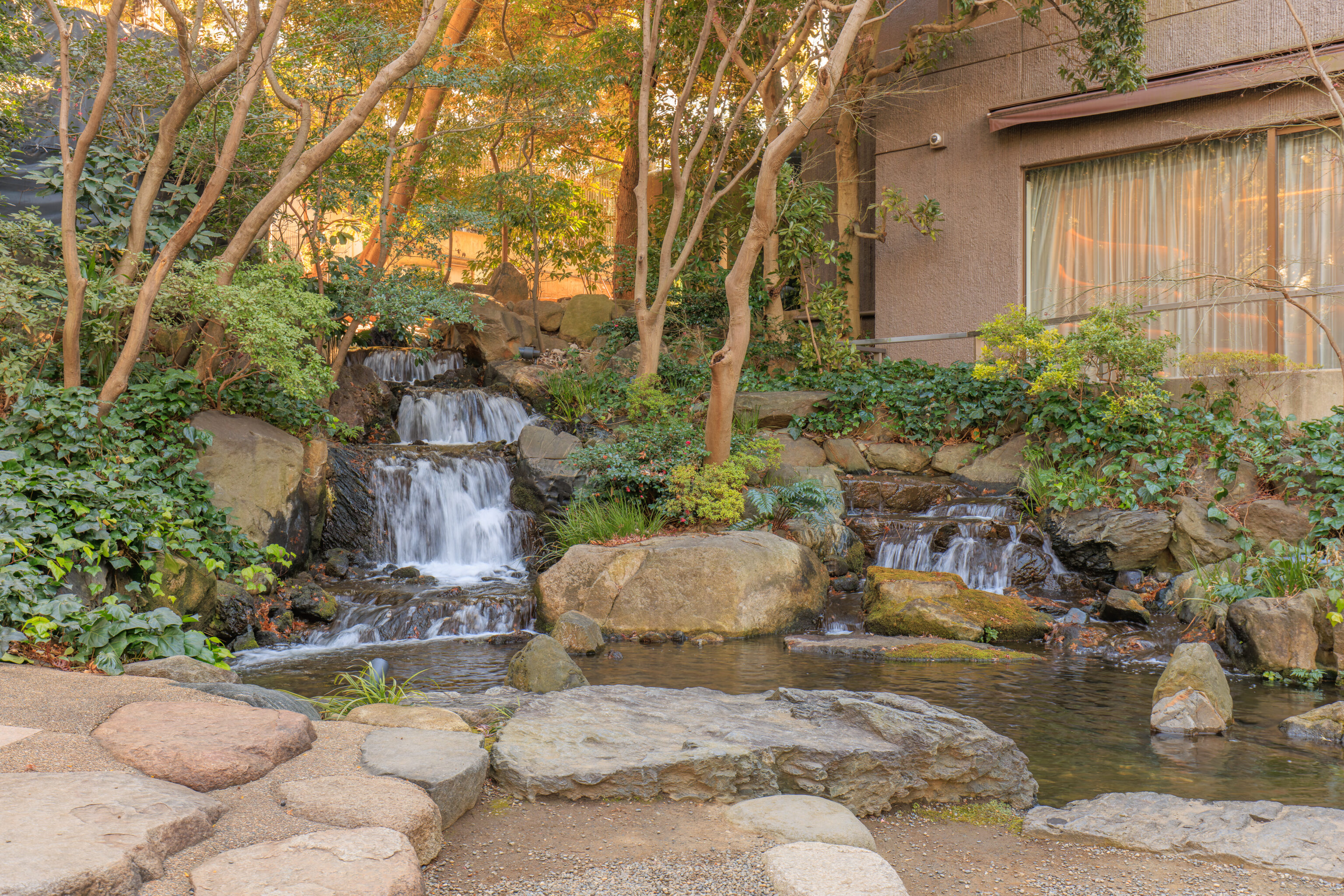
There was a small waterfall by the path.
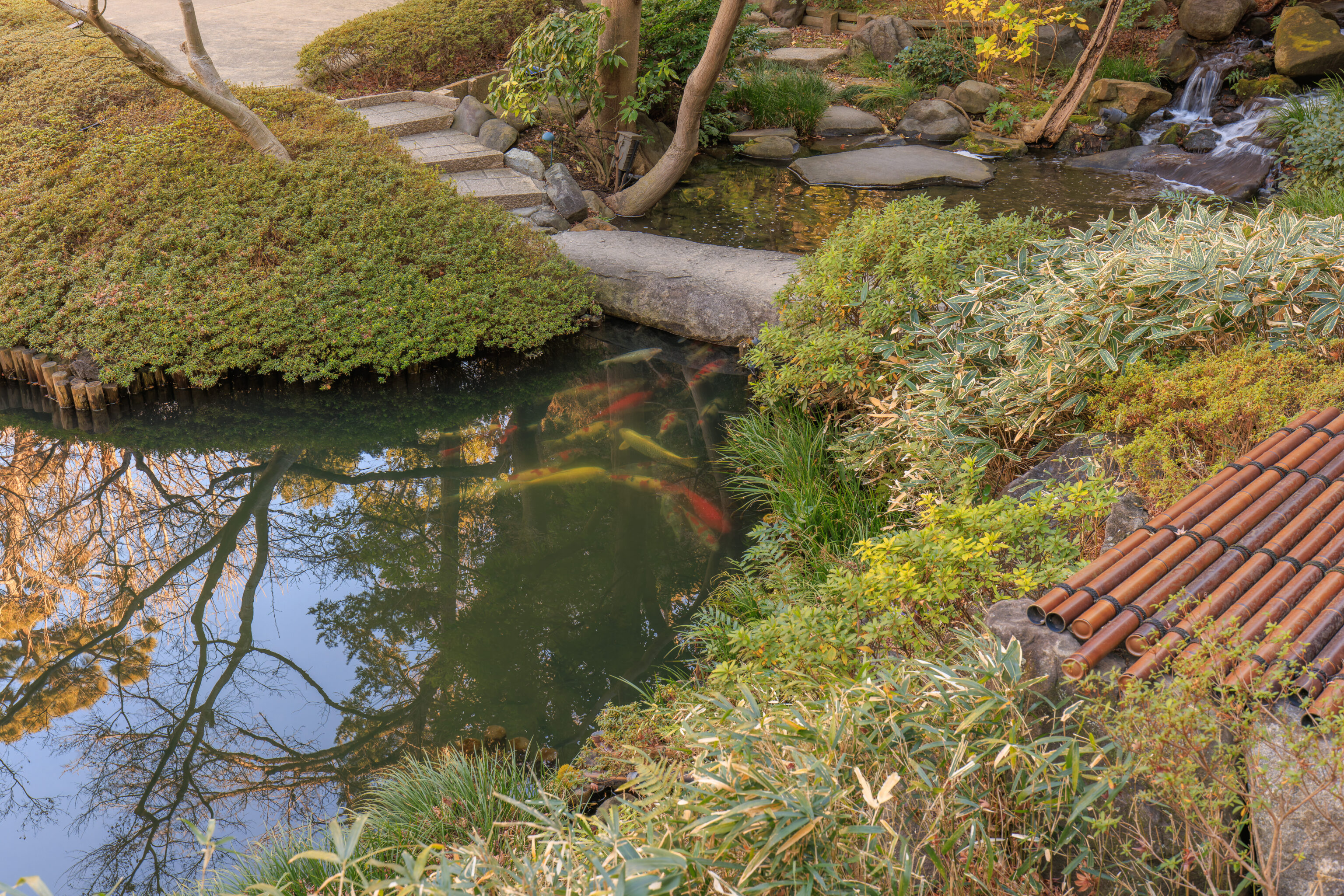
Some koi were idle by this small stone bridge. We’re not sure why they seemed to like this one spot.
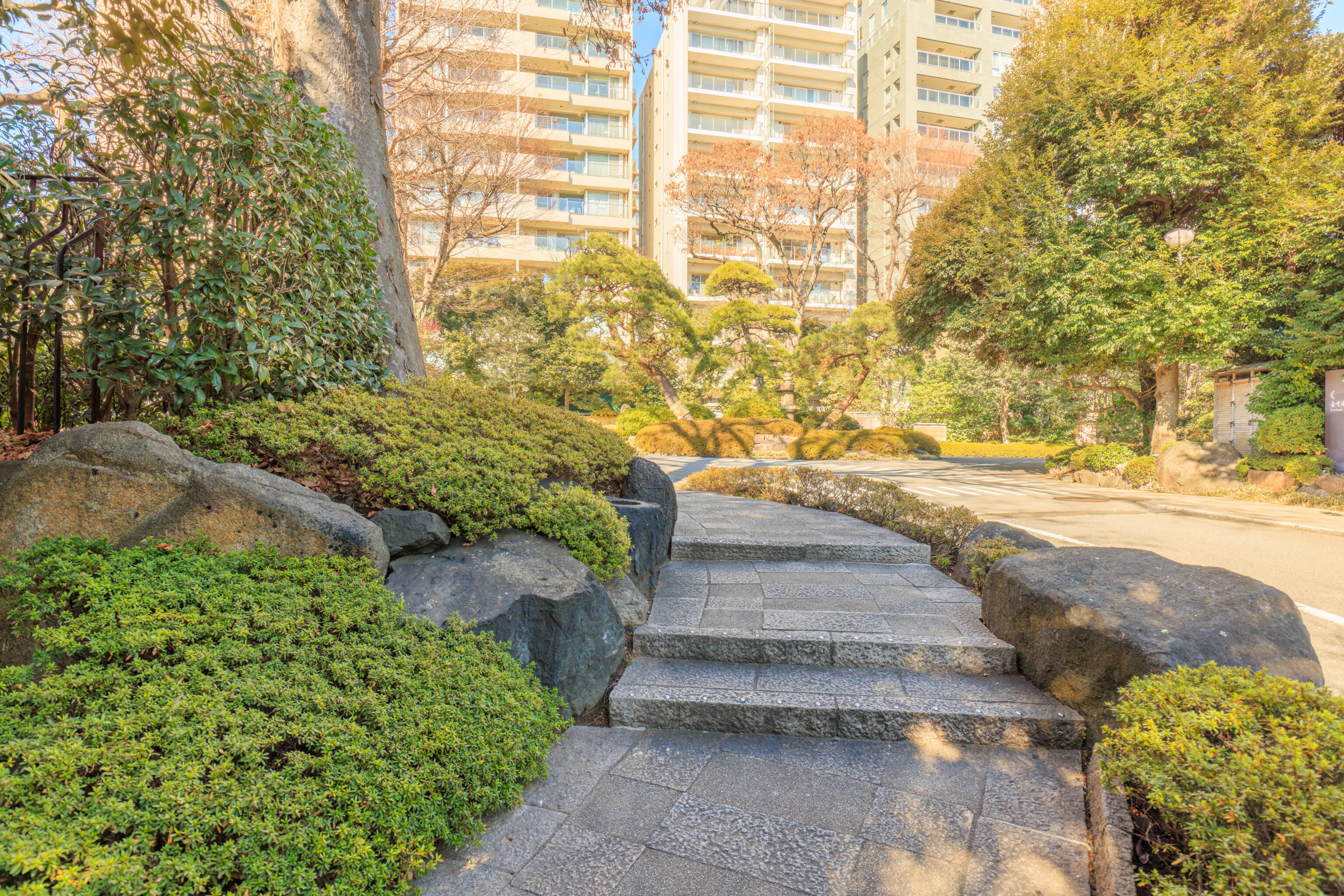
We didn’t stay for long, just 30 minutes or so. After our visit, we started to head back to the InterContinental to pick up our luggage.
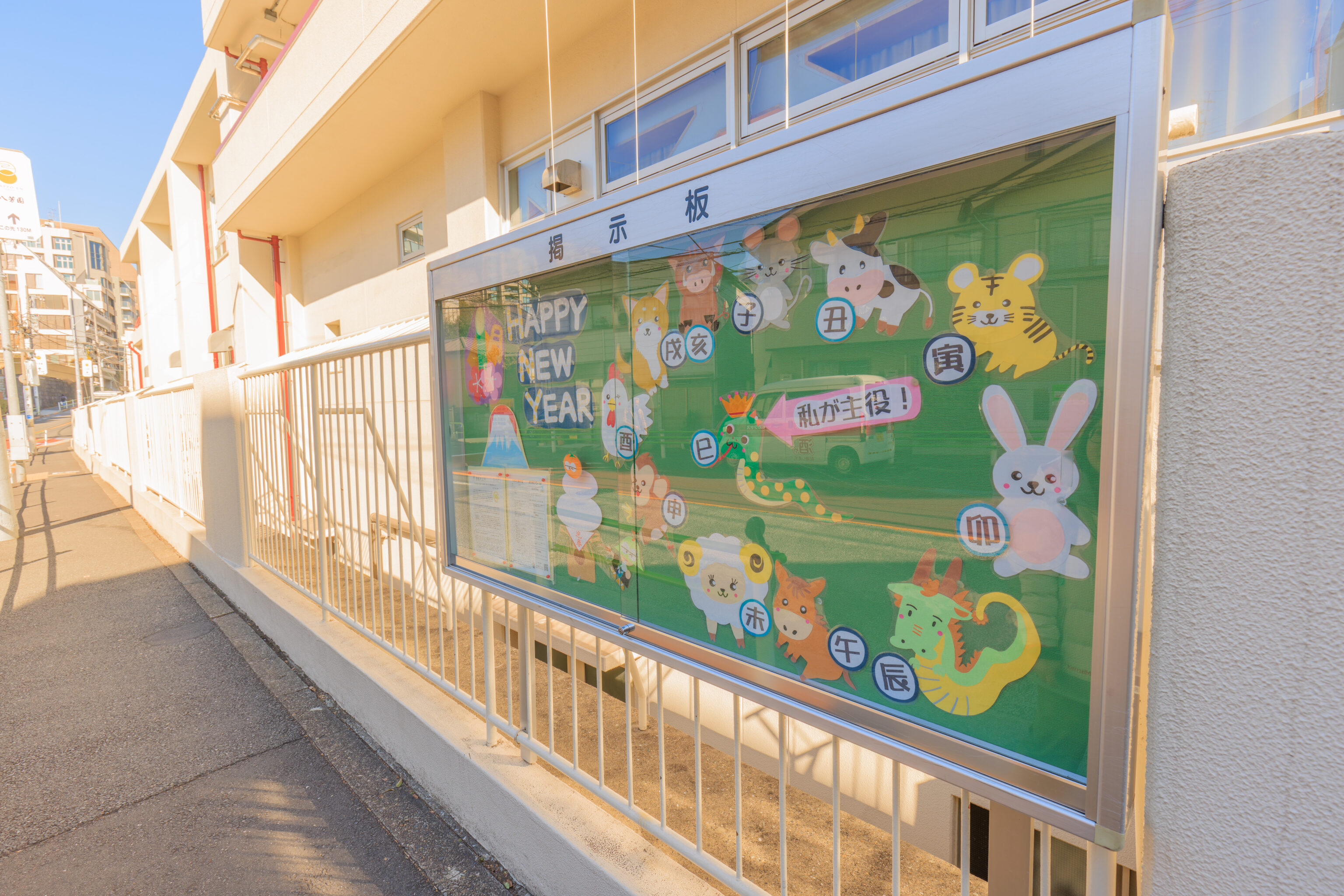
We took a bus back to Shinagawa Station. We had to wait for a few minutes at the 白金小学校前 Shirokane-Shogakko-mae (Front of Shirokane Elementary School) bus stop. This kawaii display by the bus stop illustrates the 12 animals of the zodiac.
Haneda Airport
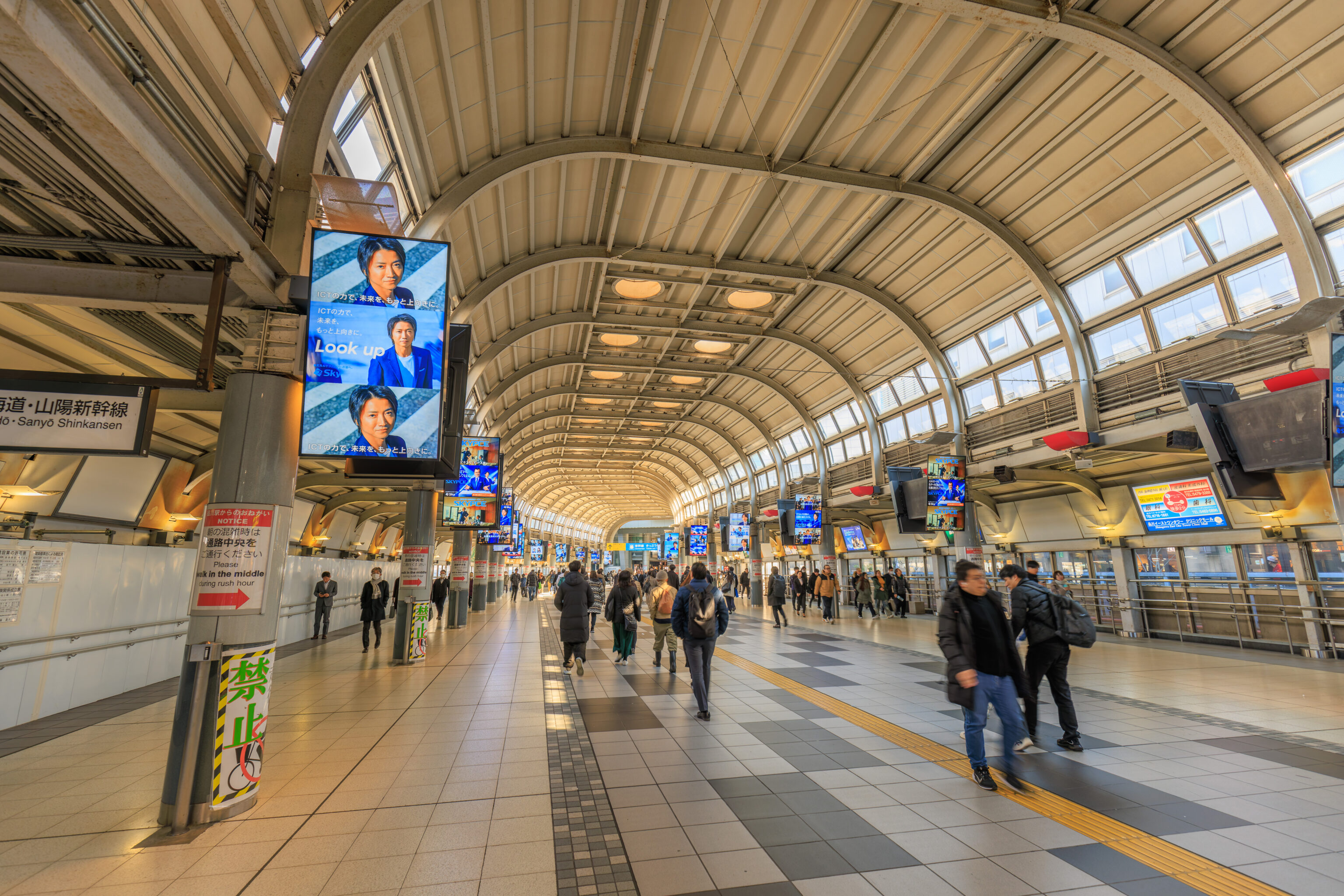
The bus stop was at west side of Shinagawa Station. We walked through the station to reach the InterContinental which is on the east side.
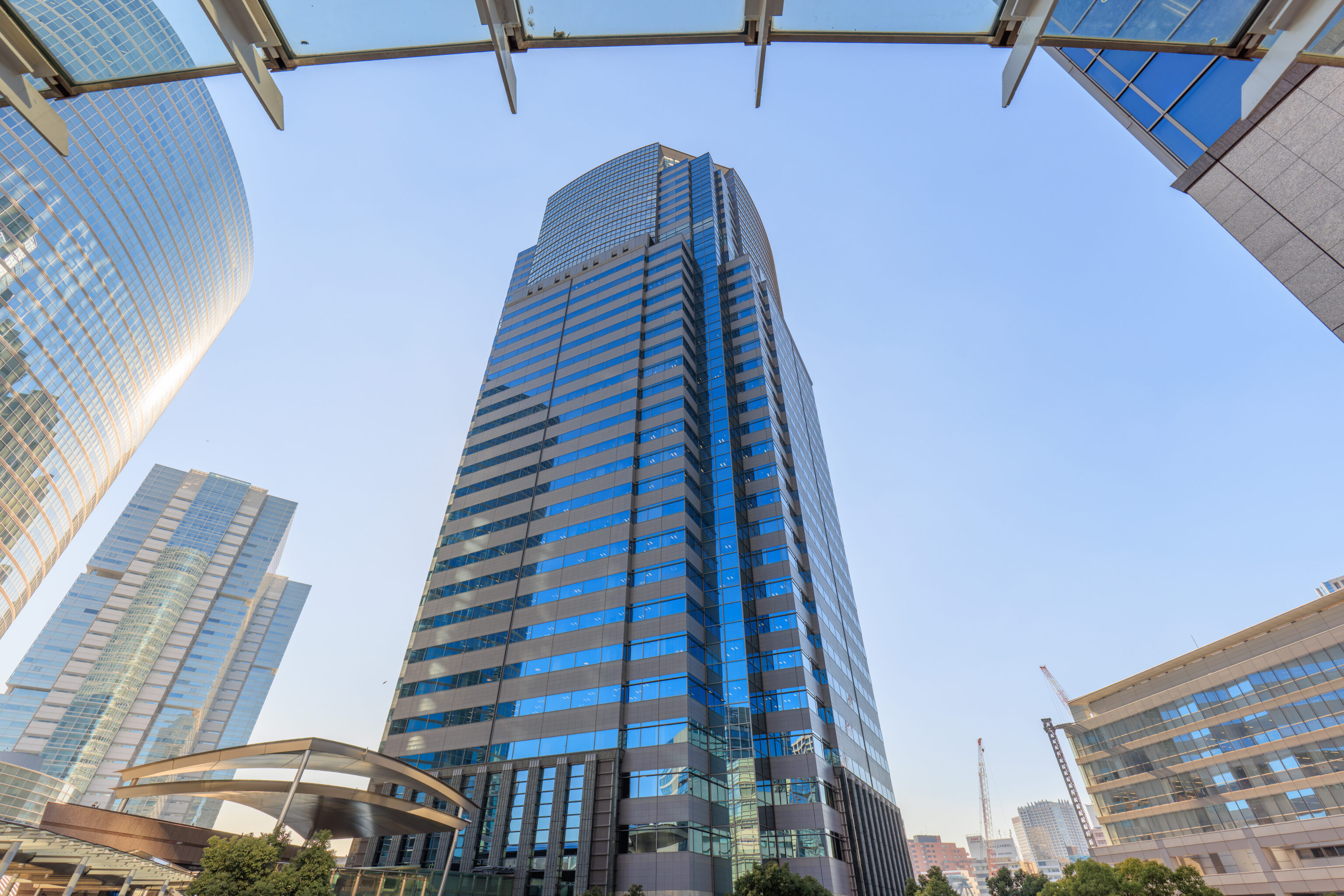
The InterContinental is at the top of this building, the 品川イーストワンタワー Shinagawa East One Tower. We went back up to the lobby to get our luggage. One of the staff helped us bring our bags back down to the entrance at the elevated walkway level where we arrived from. It turns out that she went to school in the US at Towson University in Maryland! That was very unexpected! It takes about an hour and 30 minutes to travel between Dulles, where we are flying to today, and Towson, assuming no traffic.
We reorganized our luggage a bit before heading back to Shinagawa Station to take the 京急 Keikyu train to 羽田空港 Haneda Airport Terminal 3.
We had to wait a bit for the United Airlines check-in counter to open when we arrived as we made really good time on the way there. Once we checked in, dropped off two pieces of luggage, and passed through passport control and security, we headed right to the ANA Lounge.
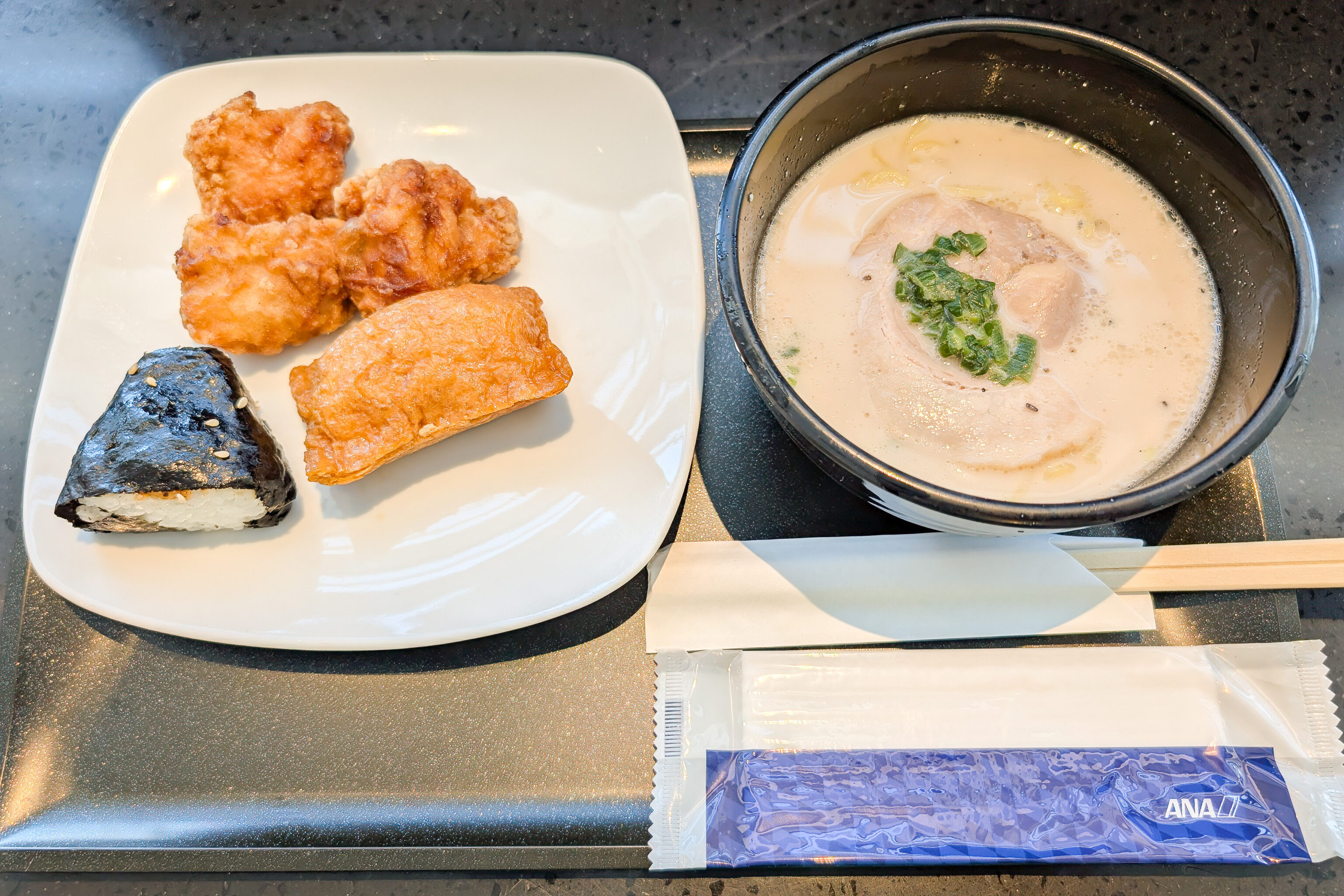
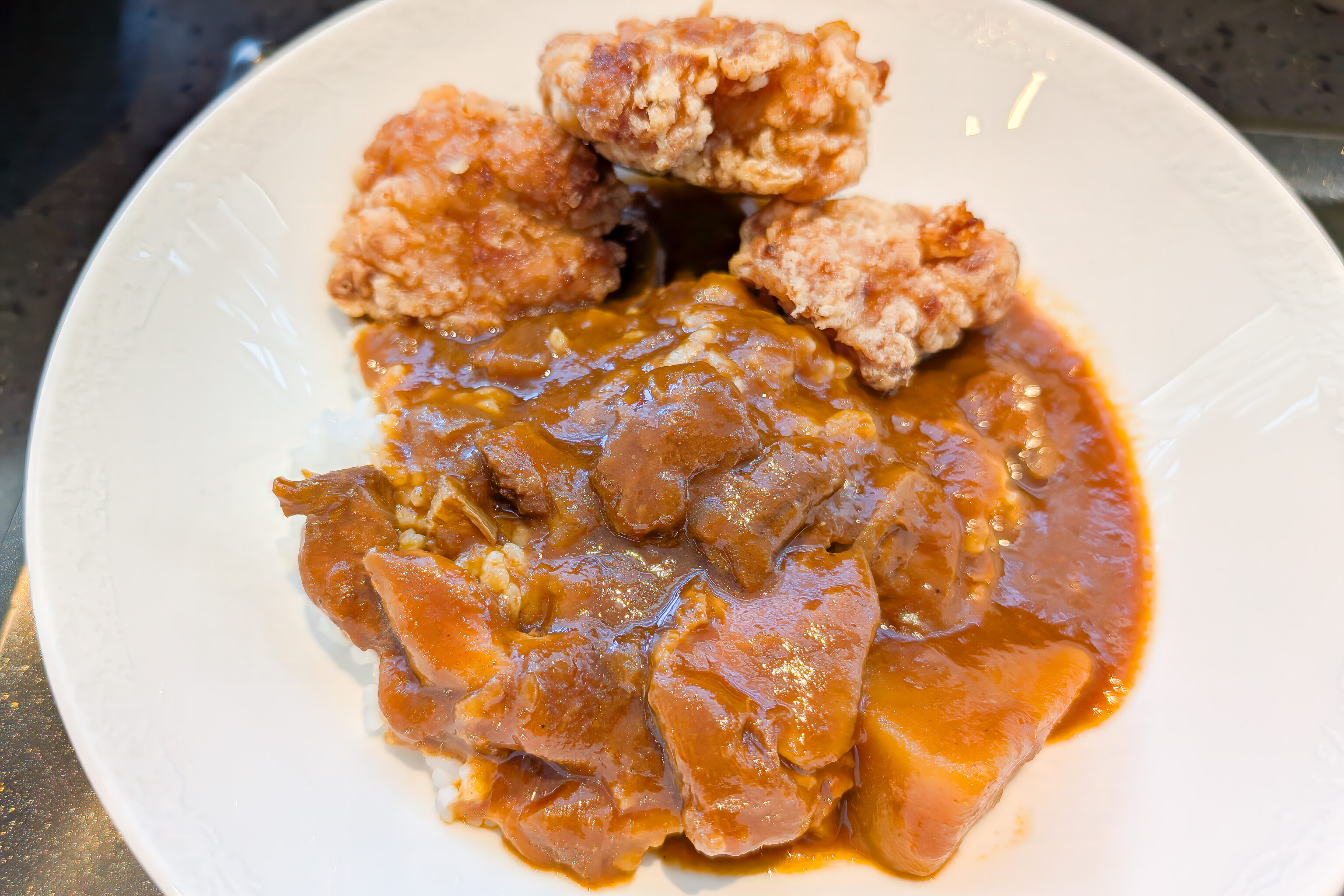
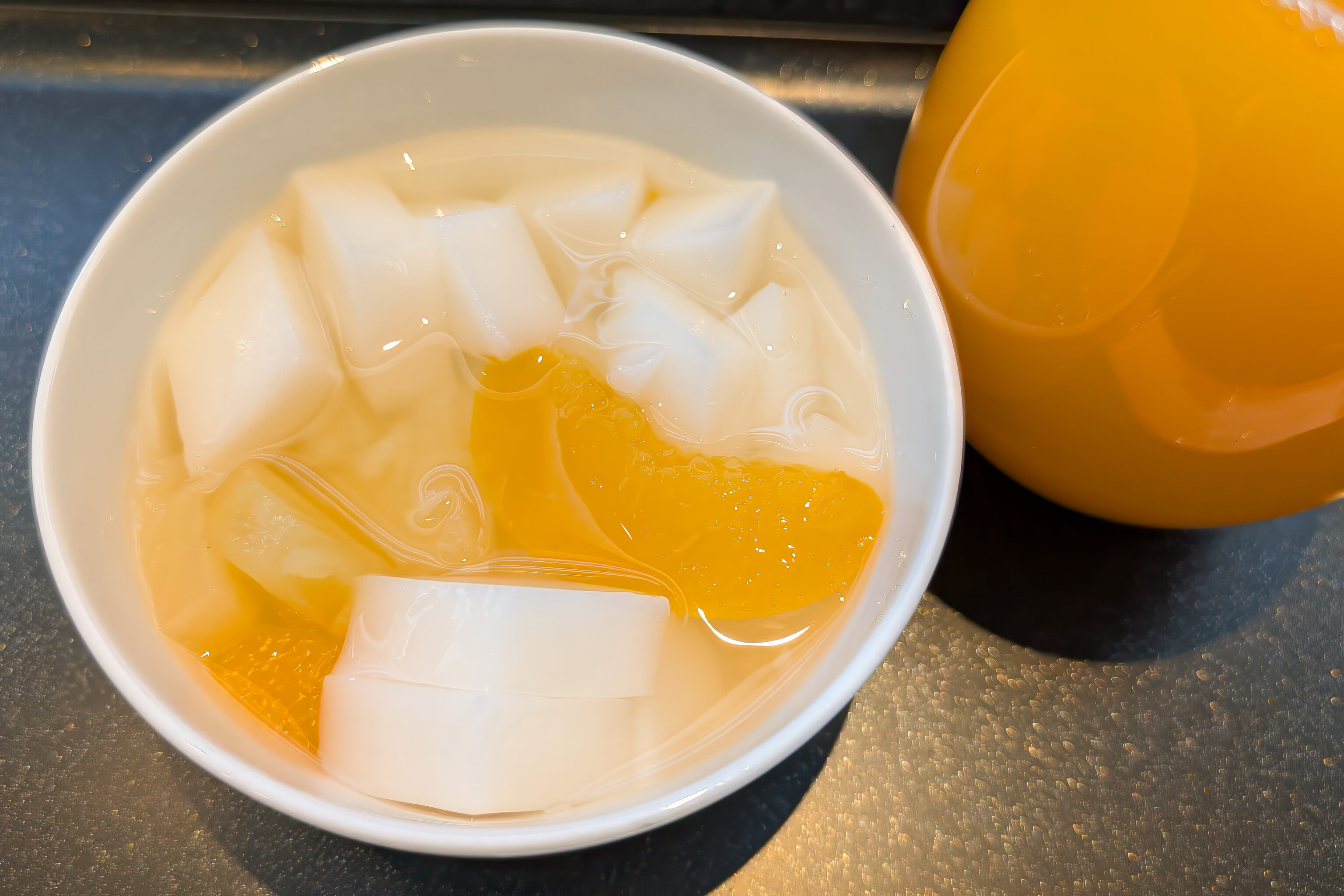
We enjoyed some food in the lounge. The offerings are usually the same with the best being the noodle bar and sometimes the karaage. The curry is also decent. They have an interesting automated rice dispenser which provides the requested quantity of rice, touch free.
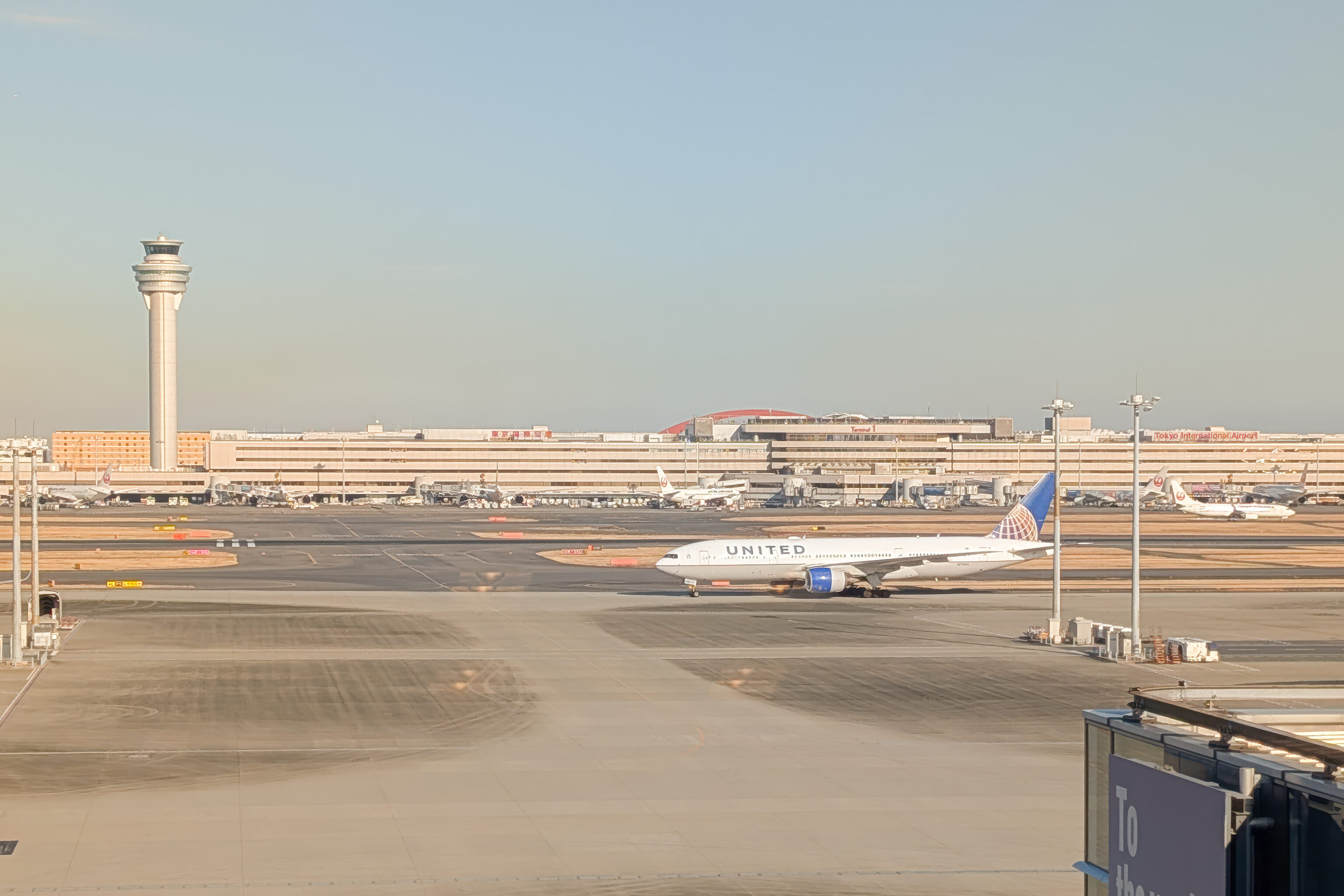
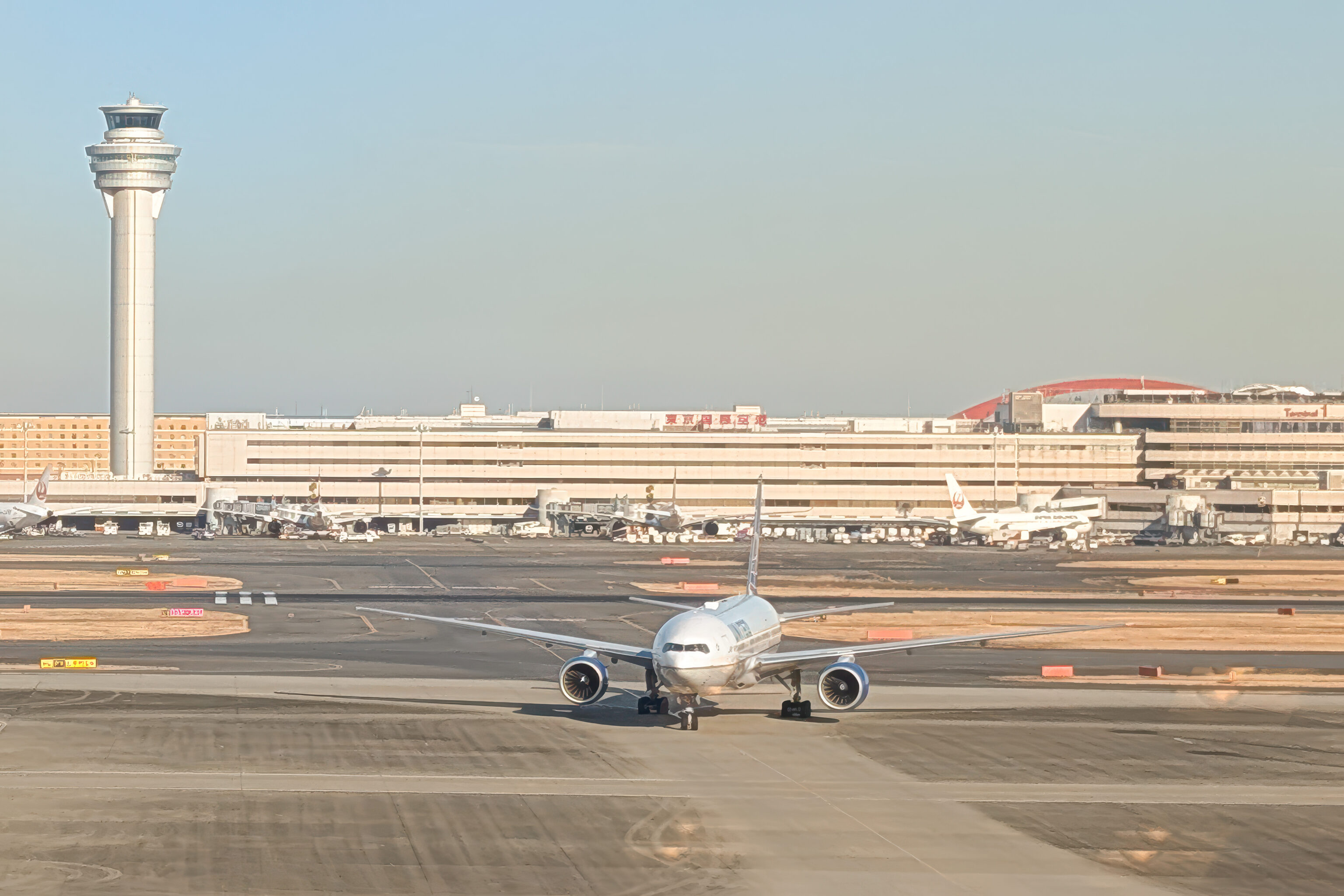
We saw our aircraft, a 777-200, arrive from its inbound flight with our departure scheduled for a bit more than two hours later.
Meal service started on the flight at around 6pm, Tokyo time.
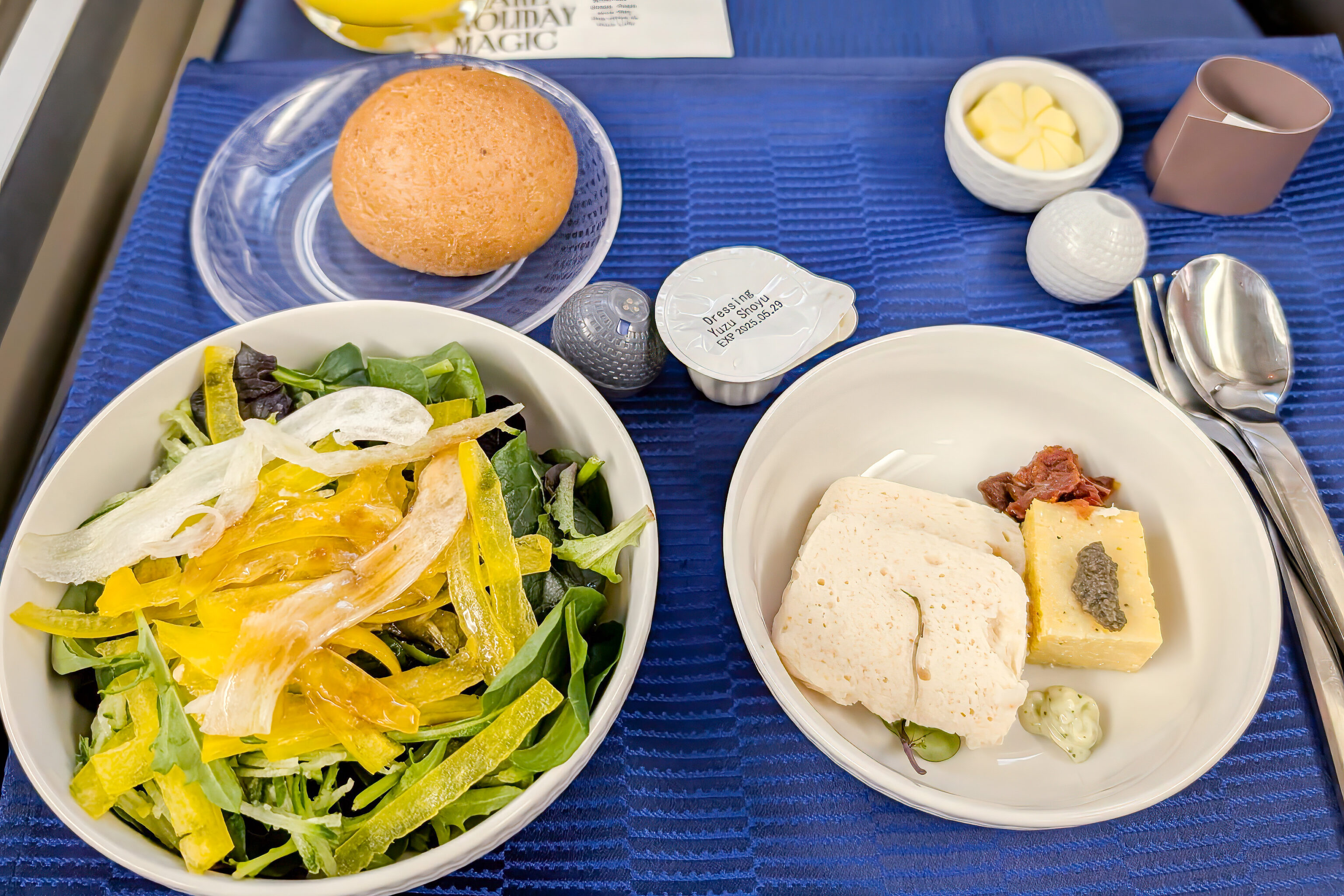
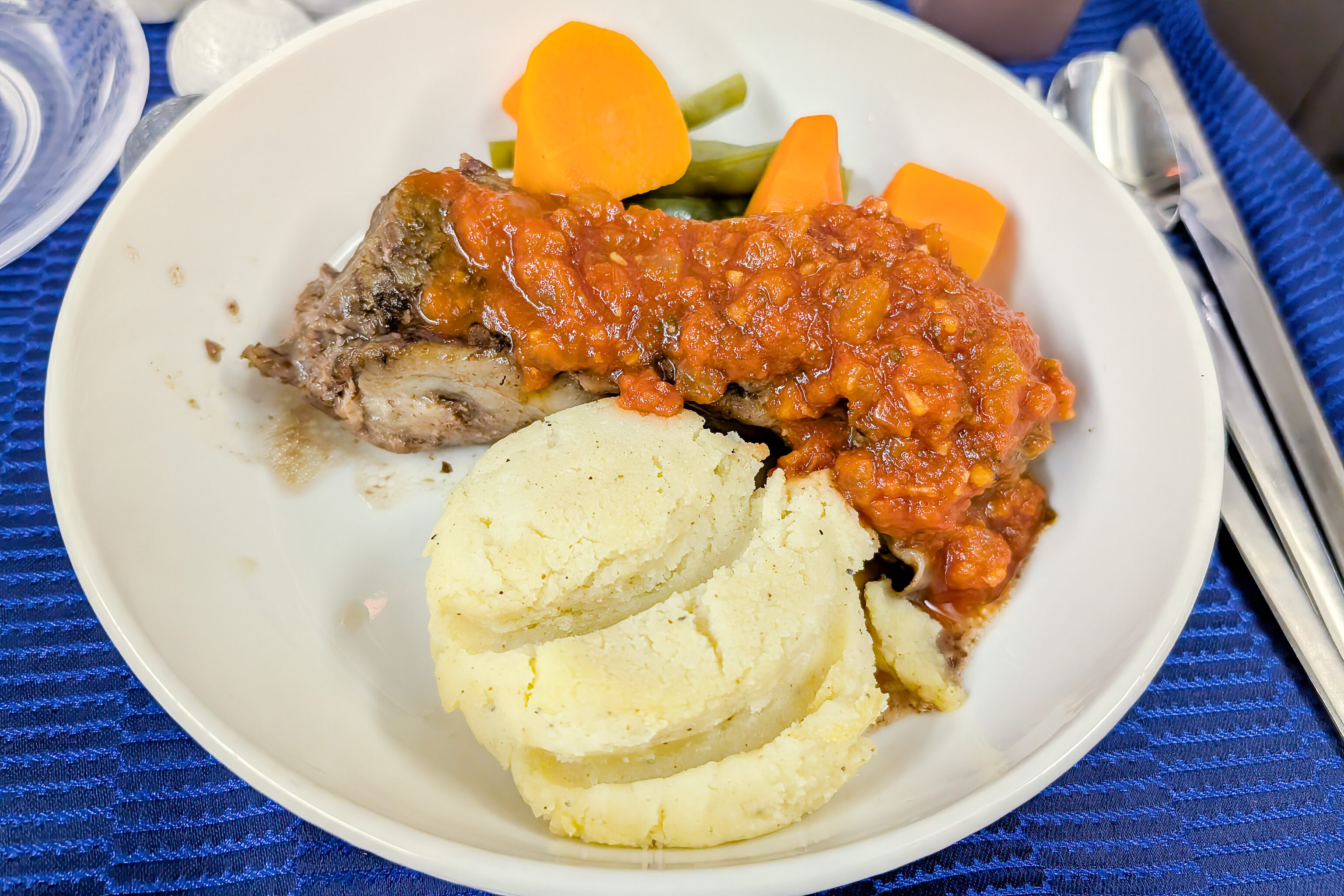
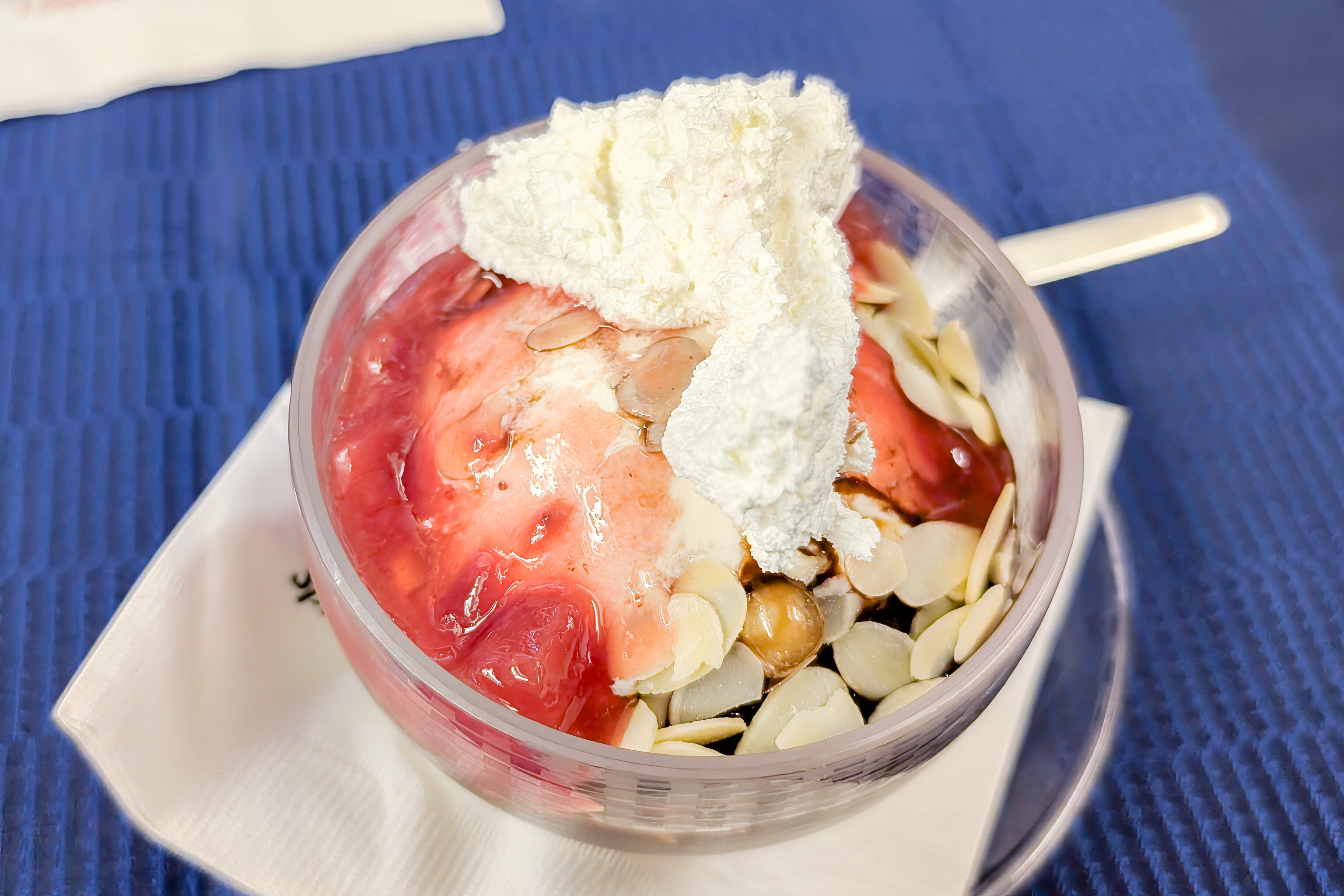
United’s catering is generally somewhere between mediocre and OK. Generally, they try to be too creative with dishes that either don’t taste good or aren’t able to be reliably prepared. We did fly ANA First Class once between Chicago and Narita and in comparison United’s catering is like McDonalds. The ice cream has been reliably good though in recent years. Unfortunately, the holiday special chocolate ice cream that we had on our way to Japan was no longer offered.
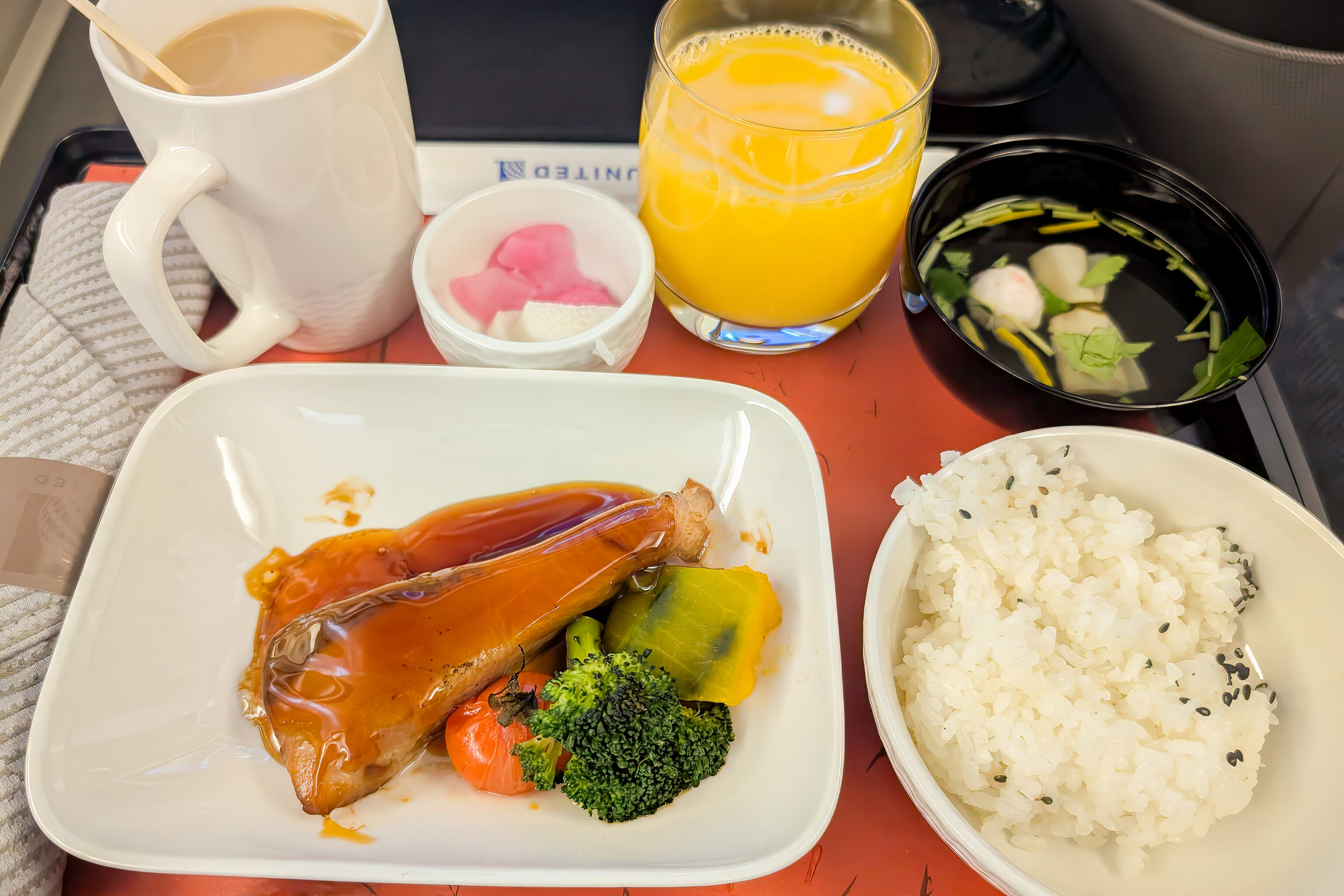
The Japanese style pre-landing meal was actually pretty decent. The other option, Belgian waffles with caramelized peaches and green papaya sauce sounded like it had a high potential to be terrible!
Once we landed at Dulles, we quickly passed through immigration, picked up our checked luggage, and picked up a rental car from Avis to drive home as that is cheaper than parking our own car at the airport for a long trip.
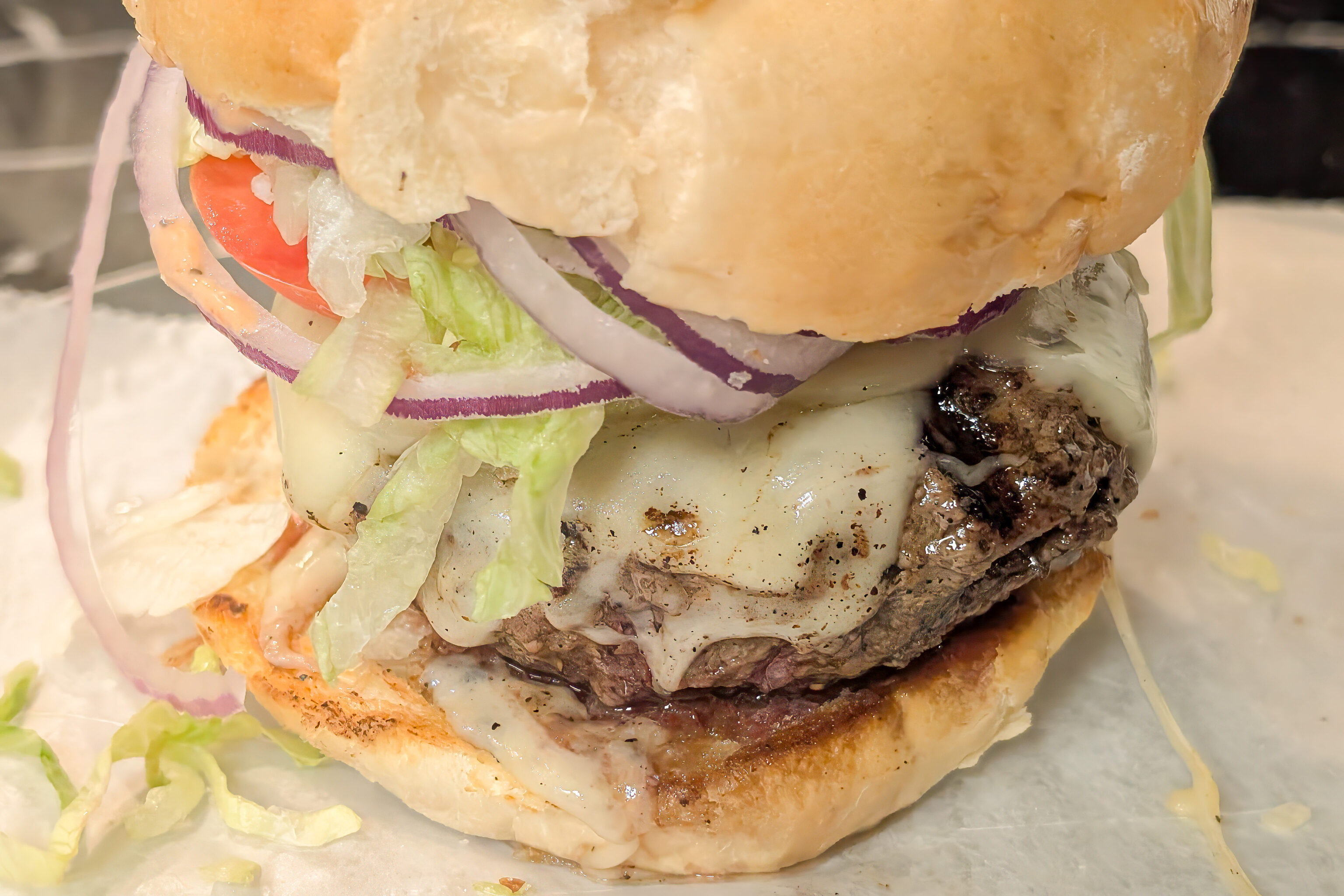
We arrived just in time for rush hour. There was a huge traffic jam inside of Dulles so we took an alternative exit through the north end of the airport which added some time to our trip. On the way home, we decided to stop at Melt Gourmet Cheeseburgers, our favorite hamburger restaurant in the world! It may not look pretty, but it is superb, particularly when ordered medium rare!
Commentary
Overall, it was a fantastic trip and a much longer one than we usually take at 22 days. Our itinerary and timing was influenced by pricing but we probably should have spent an extra day in Guam. The beach is pretty enjoyable but we didn’t have enough time due to not being able to get our room until after the official check in time. We have been to Guam before though so we didn’t miss out on anything else by having such a short stay.
Flying to and from Hokkaido was also pretty time consuming but so is taking the Shinkansen as it only goes to Hakodate. Ideally, we probably should have stayed longer in Sapporo and left Japan directly from Chitose but United’s pricing often doesn’t mix well with partner flights, meaning the fare ends up being something ridiculous.
And, we probably would have gotten more out of skiing in Niseko if we had practiced in the US prior to this trip as we hadn’t skied for more than 3 years due to my ACL injury, However, the snow usually isn’t great early season so we didn’t. It took us more than half the trip to really start being comfortable skiing again. Still, the snow was fantastic and getting a taste of Japow left us just wanting more of it!
